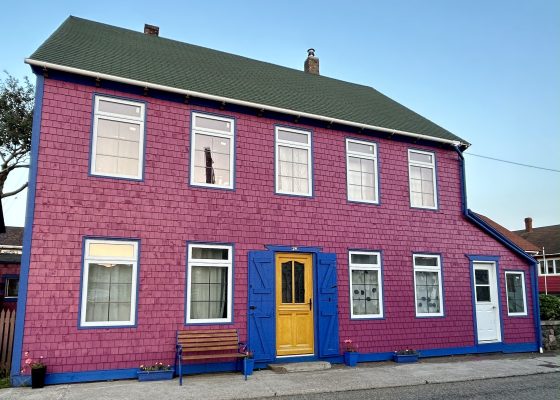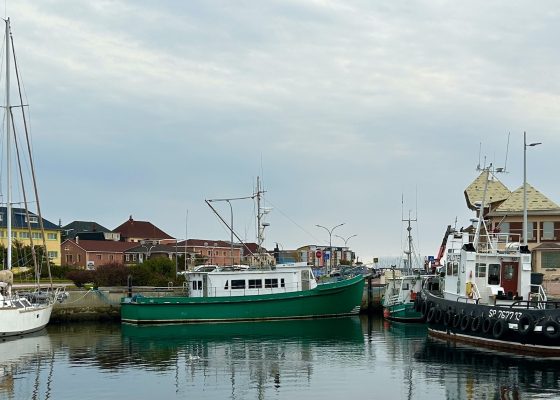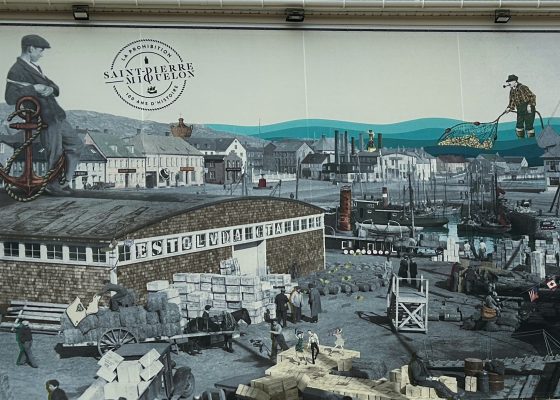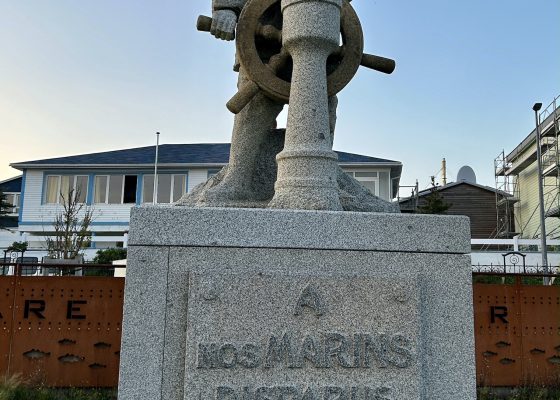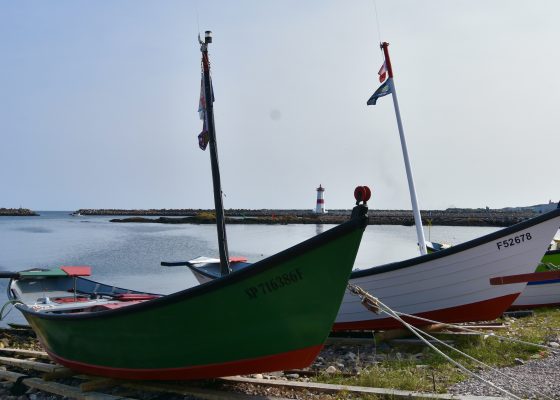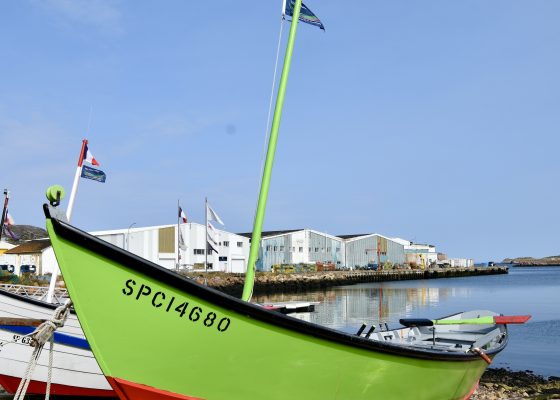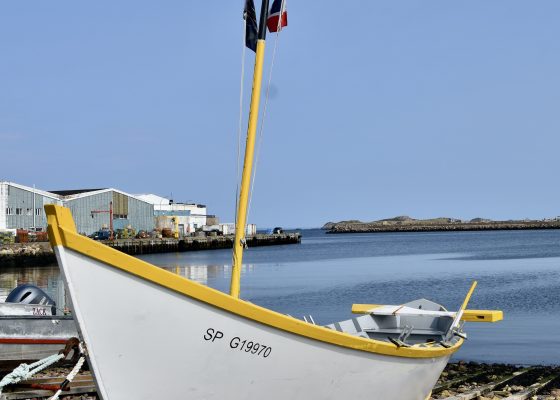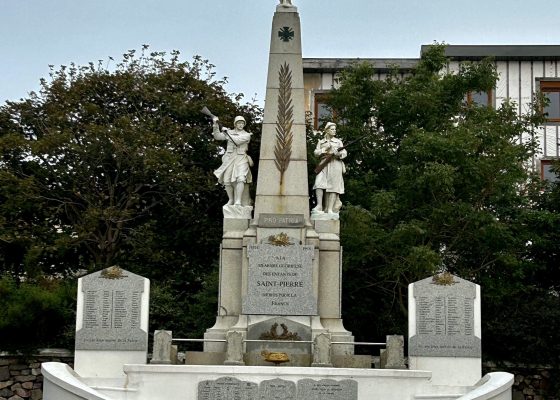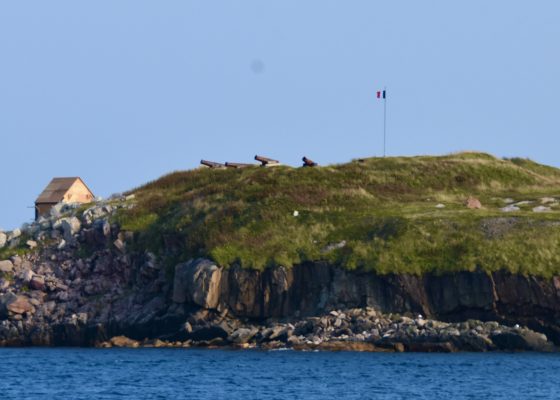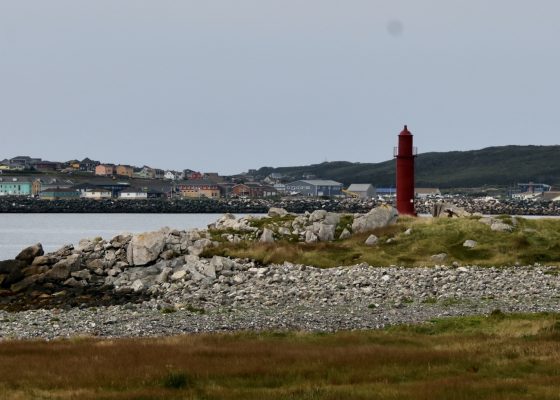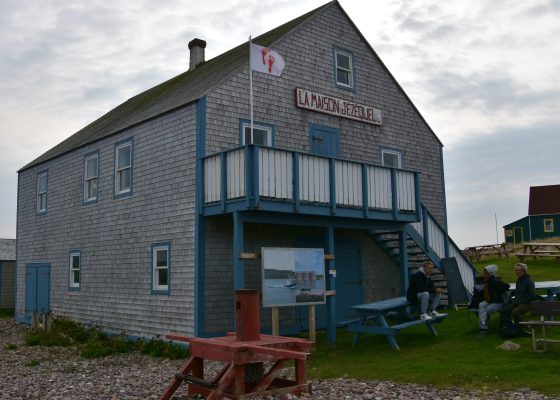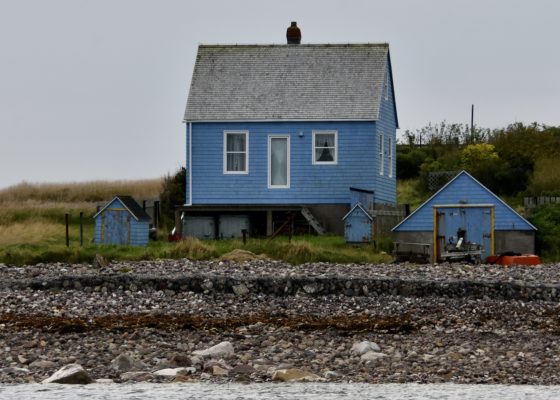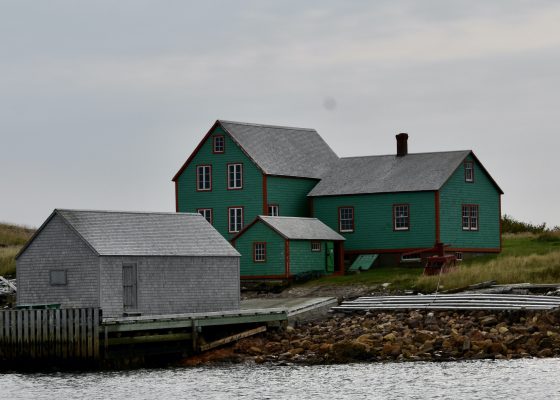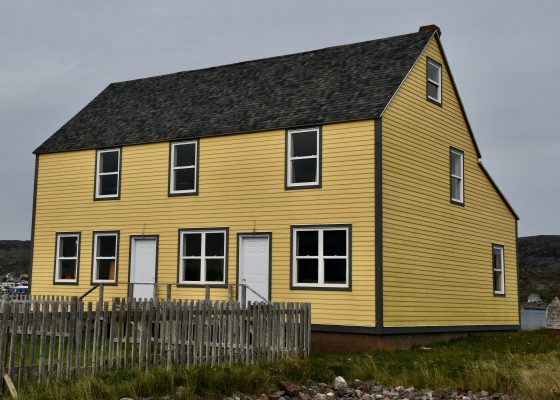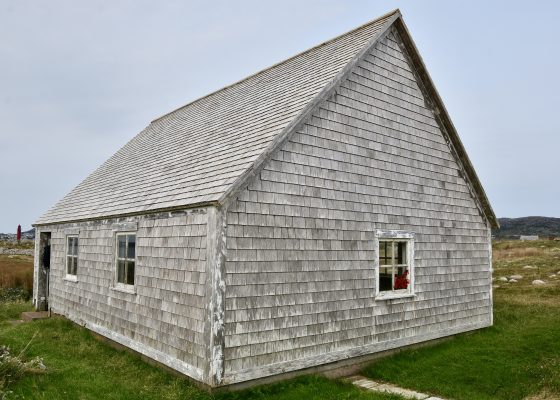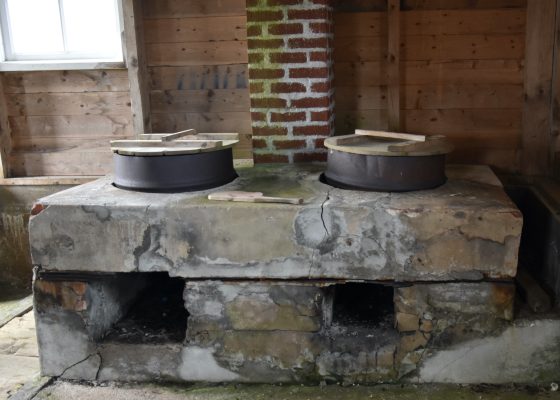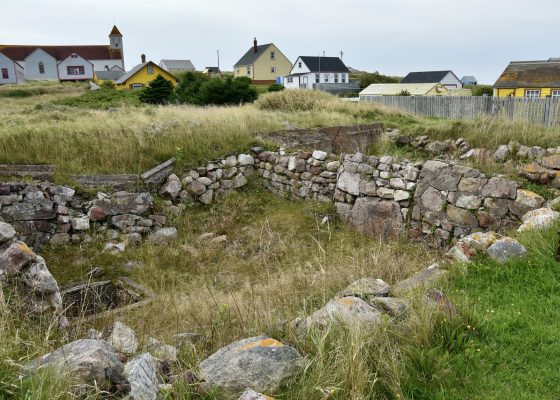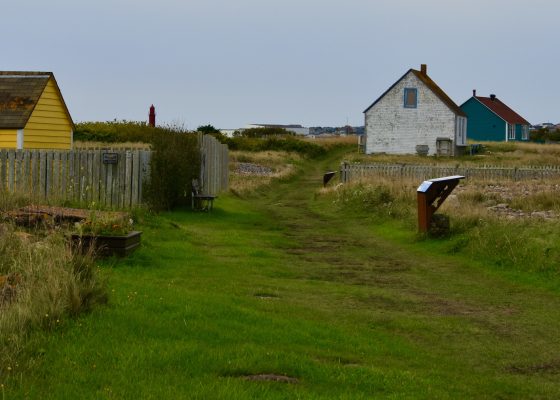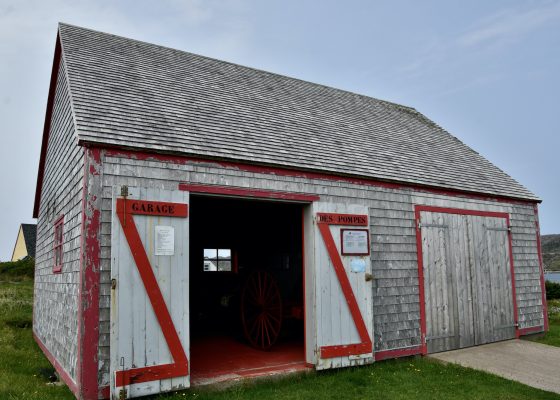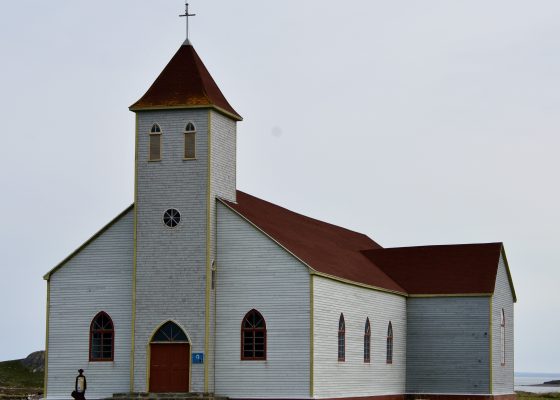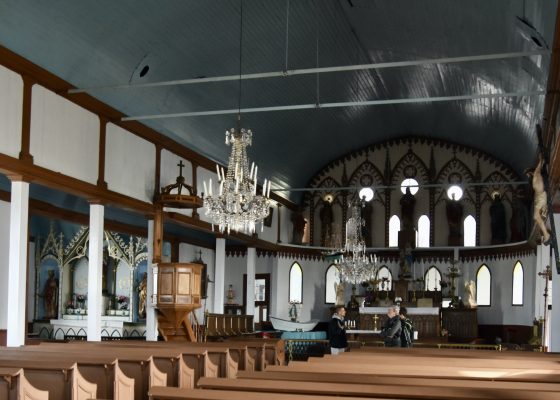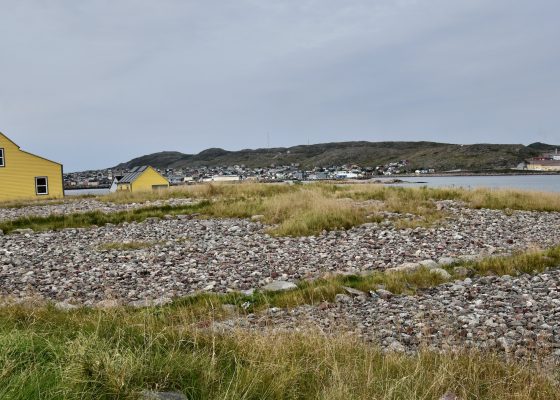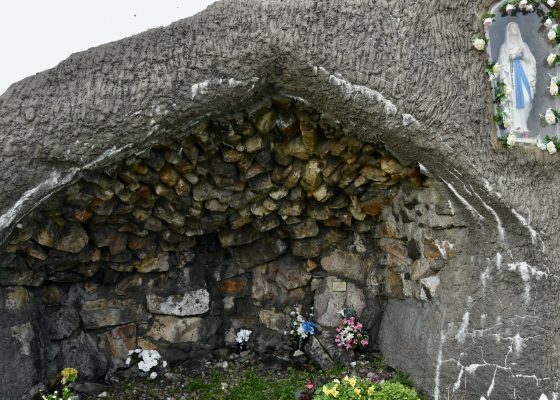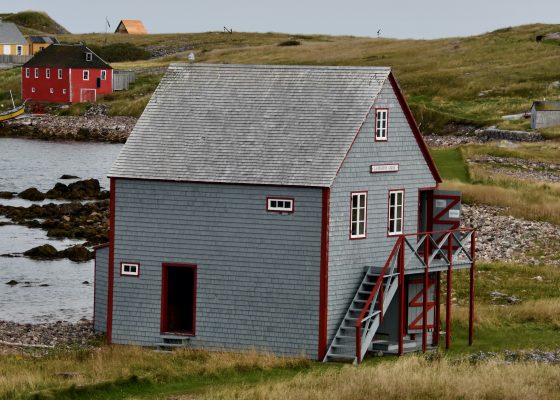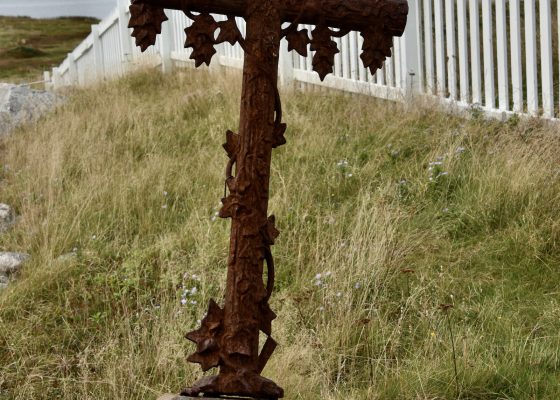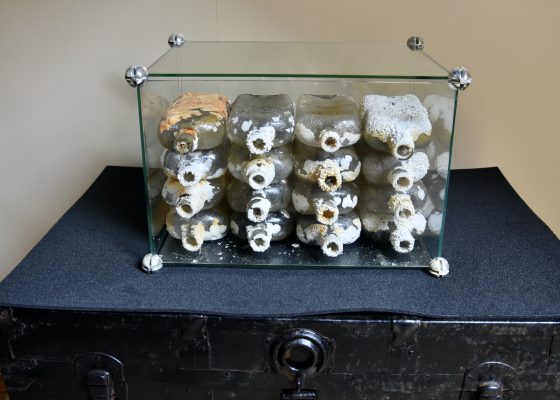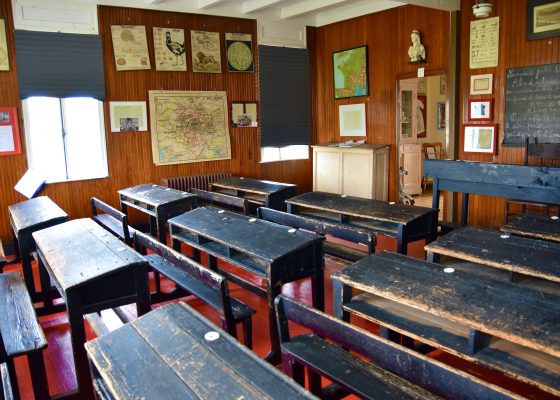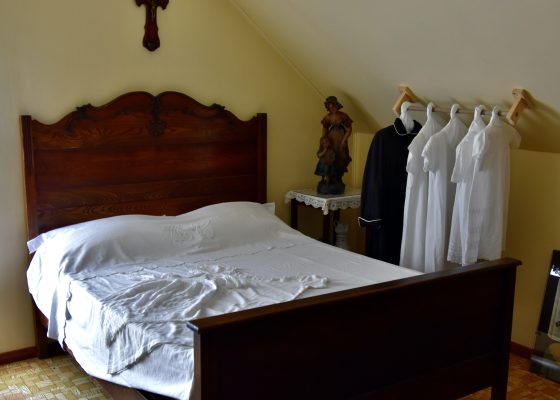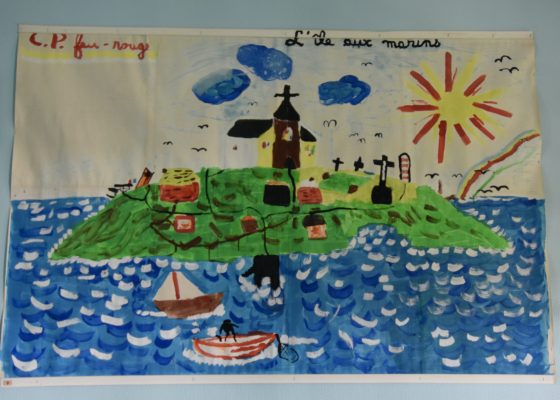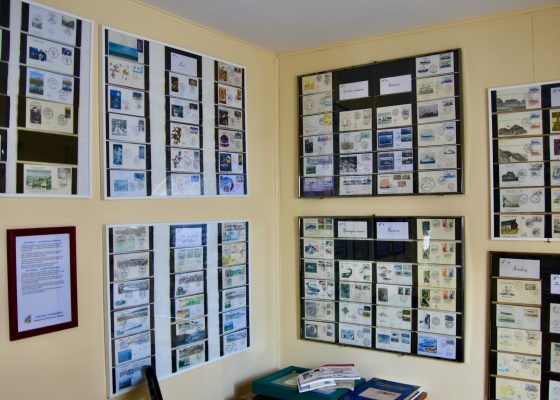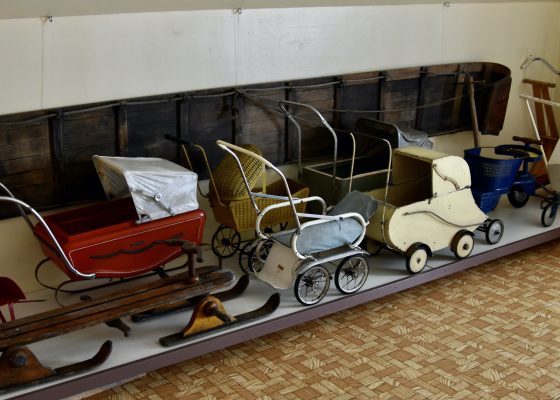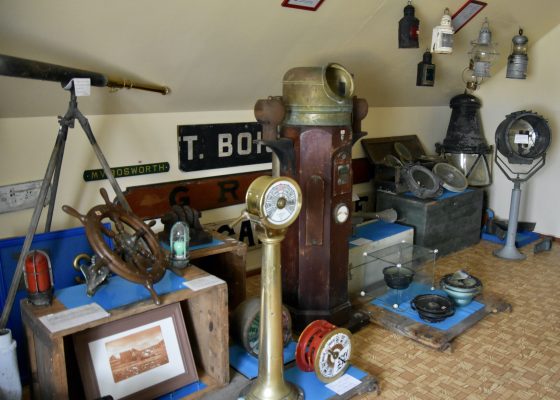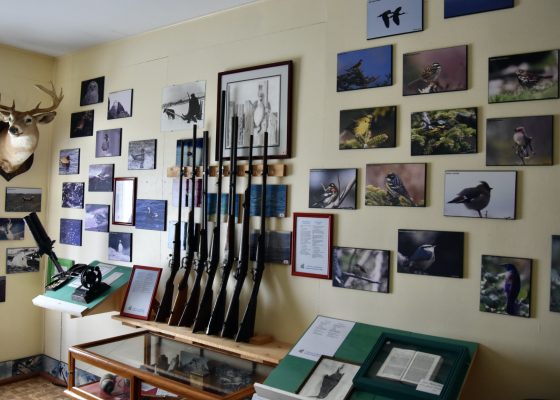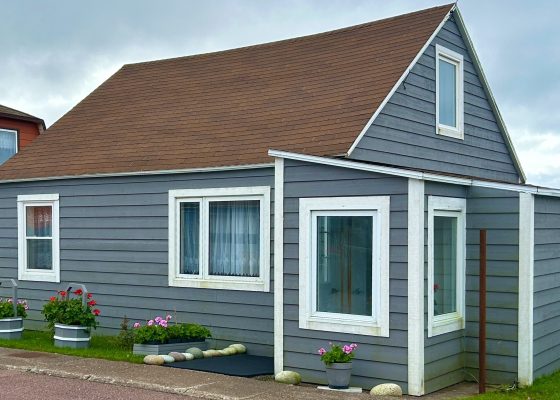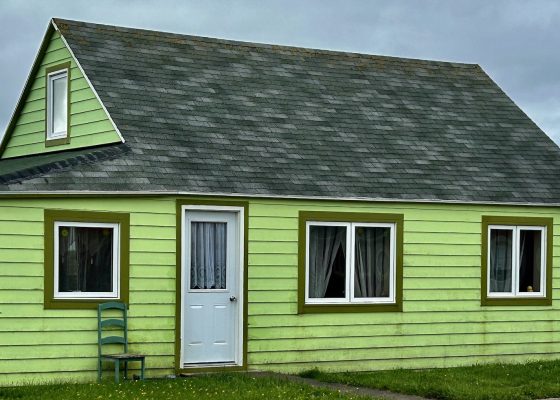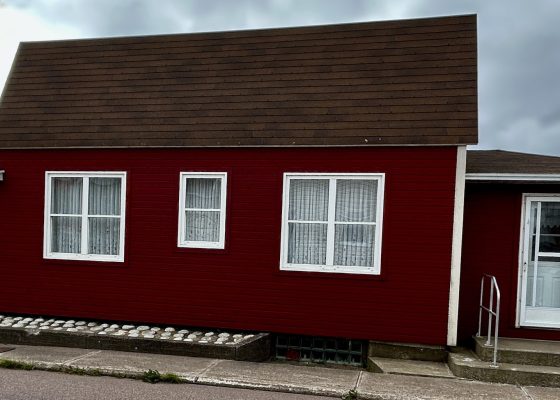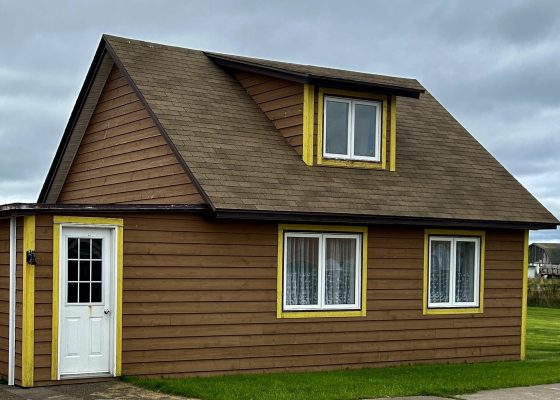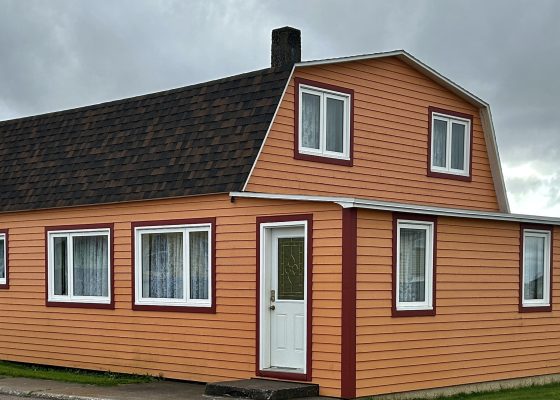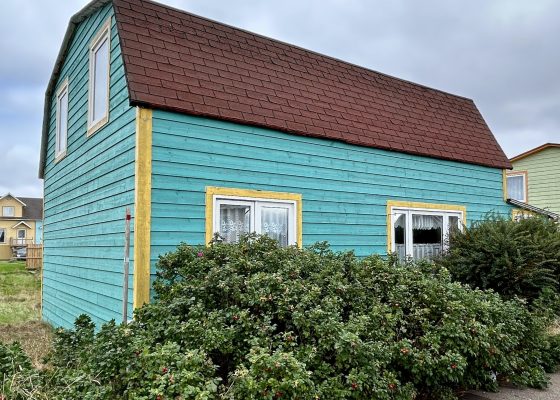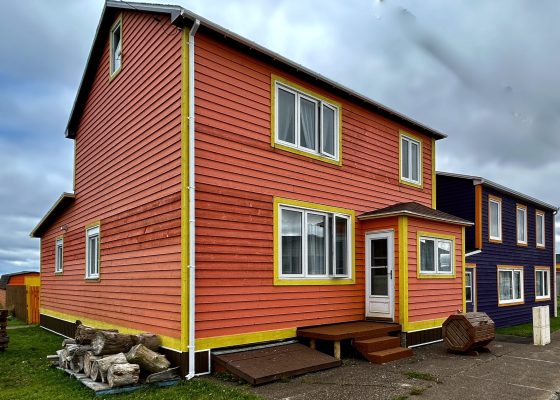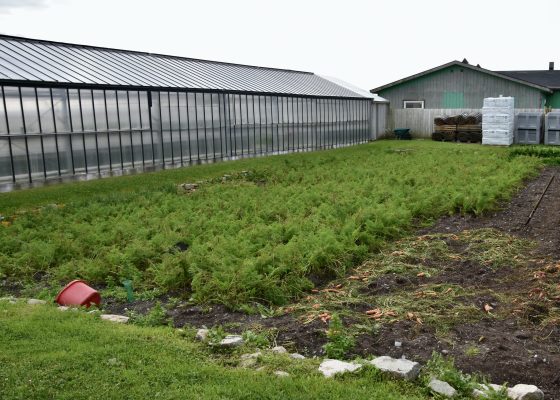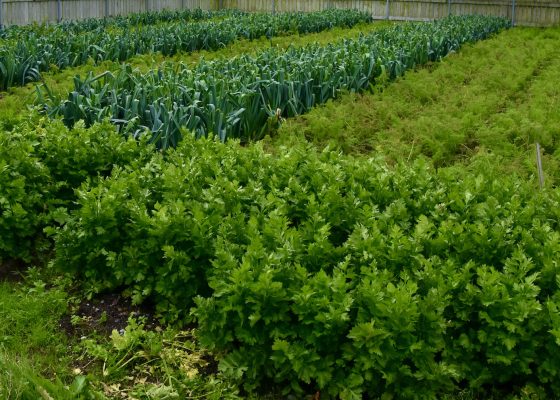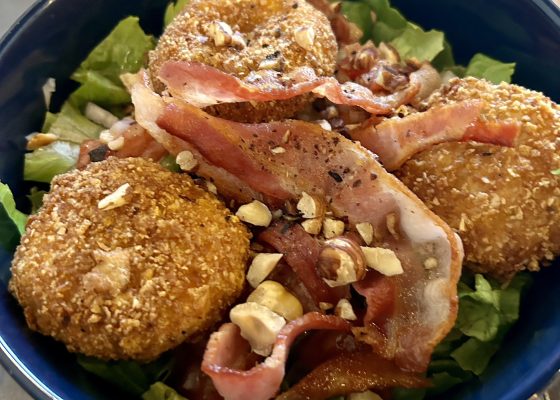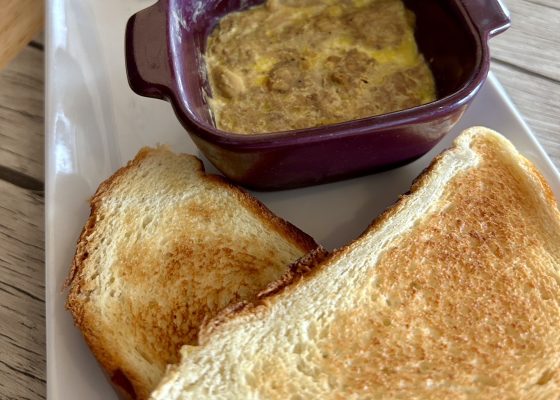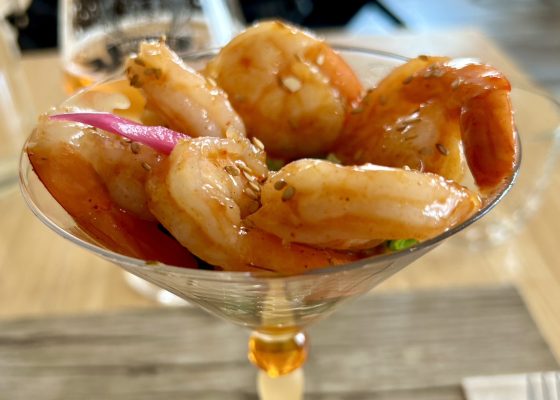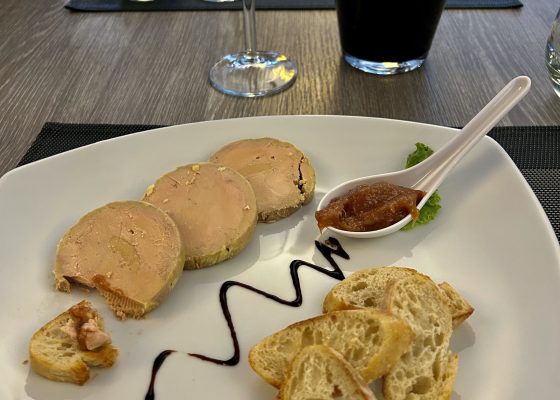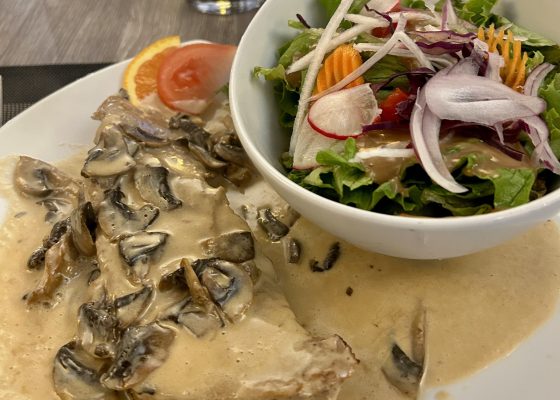St. Pierre & Miquelon
When I told people I was going to France by taking a ferry from Newfoundland they looked at me like I had lost my mind. But I was in fact quite sane. Although most people don’t know it, the islands of St. Pierre & Miquelon, only a few kilometres off the coast of Newfoundland, are an integral part of the Republic of France, using the euro as their currency and sending representatives to the French parliament. They even have the French electrical sockets so you need to bring an adaptor for you phone and computer.
So how did this strange anomaly come about?
History of St. Pierre & Miquelon
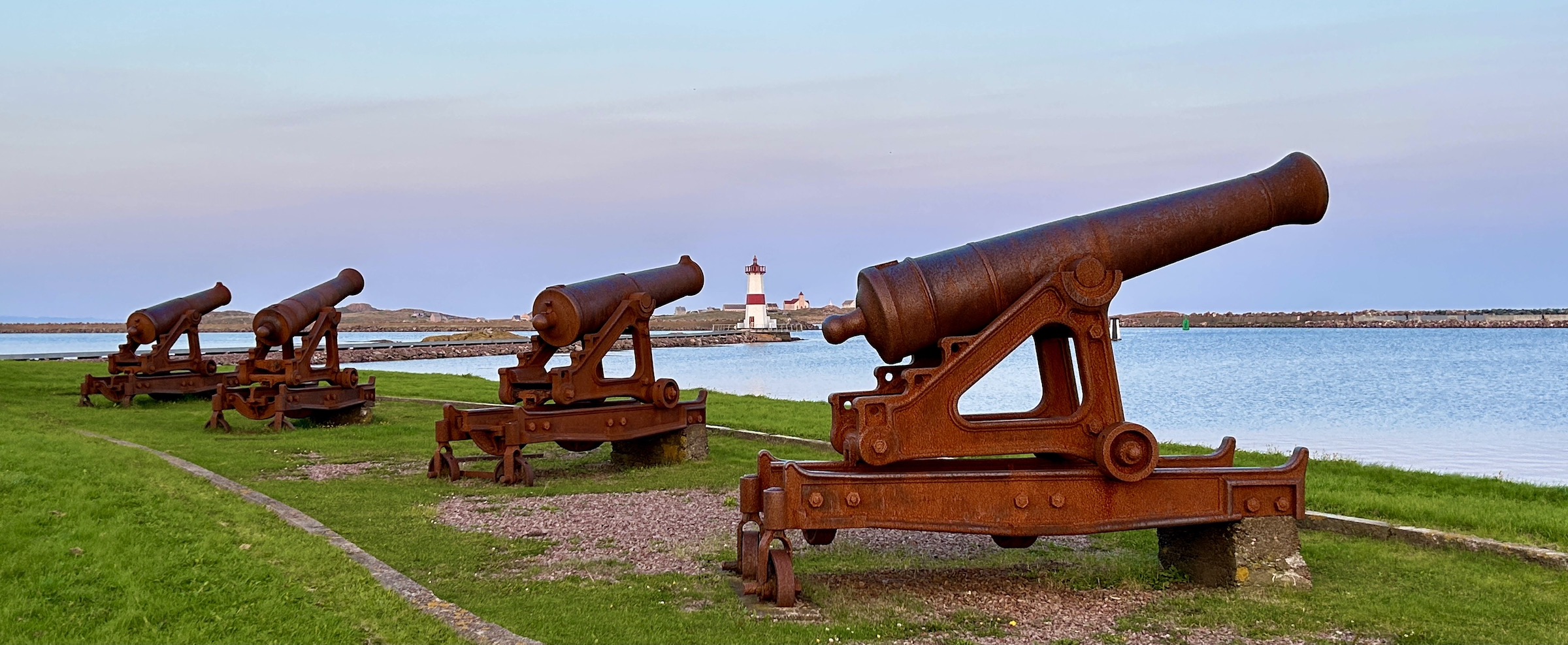
Recent archaeological work has definitely established that Inuit people of the Dorset culture were visiting the islands, at least on a seasonal basis as early as 6,000 BCE, but when the first Europeans arrived in the early 16th century or possibly even earlier, there were no Indigenous people on the archipelago. The islands first appeared on a map in 1500 and regularly after that going by a number of names including the Isles of Eleven Thousand Virgins which must have done a lot to encourage further visitations. It was Jacques Cartier who first used the name St. Pierre for one of the islands in 1536.
By the time Cartier visited the islands were a regular summer destination for Irish, Breton and Basque fishermen taking advantage of the riches of the nearby Grand Banks. The name Miquelon is of Basque origin. It was not until much later that people started to reside on St. Pierre & Miquelon permanently. In 1687 there were a number of French families on St. Pierre and a number of other places on the south coast of Newfoundland. From about this time up until 1713 the British attacked these settlements repeatedly and in the Treaty of Utrecht France ceded all claims to Newfoundland and St.Pierre & Miquelon to Britain. Ordinarily that would have been the end of French settlement in the area, just as it was in mainland Nova Scotia which was also ceded to Britain in the same treaty. However, there was a clause in that treaty that permitted French fishermen to continue to access the waters around St. Pierre & Miquelon and have a safe harbour to do so during the fishing season.
From 1713 to 1763 the islands were controlled by the British and their American colonists in Massachusetts and New Hampshire who received land grants and claimed ownership of large swaths of the islands, especially Miquelon. Now here’s the strange part from an historical perspective. France lost the Seven Years War that ended in 1763 with the loss of the entirety of the French empire in continental North America. However, pointing out the provisions of the 1713 treaty conferring fishing rights in the area around St. Pierre & Miquelon, France convinced Britain to give back the archipelago to it. Captain James Cook mapped the islands before they were handed over, so when you land on St. Pierre & Miquelon today you will be walking in the footsteps of the great explorer.
Once the French took over again in migration commenced in a more serious way than it had in the past. One group that arrived were displaced Acadians from Nova Scotia and I was a bit surprised to see some of the most common Acadian names from Cape Breton, such as Landry and Cormier, appearing on businesses in St. Pierre & Miquelon. But things didn’t last. The American and French Revolutions traumatized the residents who seemed to be constantly under siege. Many of the Acadians fled to the Magdalen Islands while the rest were transported to Halifax and held prisoner for two years after the British retook the islands for a second time. The game of martial ping pong continued with the French ousting the British in 1796 after which St. Pierre & Miquelon was deserted for the next two decades. In a repeat of what had happened after the French lost the Seven Years War, they managed to get the islands back after the final defeat of the Napoleonic armies in 1815. Obviously the French were much better negotiators than their victorious counterparts.
It was after this that some of the Acadians returned along with French and Basque fishermen who finally created a permanent settlement on St. Pierre with a smaller town on Miquelon. Much of what you see today dates from the mid to late 19th century when the communities developed their distinct architectural looks that are quite different from the towns in Newfoundland that are close by. The coming of a number of Trans-Atlantic cables from France in this time period solidified ties with the mother country.
St. Pierre & Miquelon were never really prosperous until the 1920’s when Prohibition led to an unexpected 13 year windfall that saw the likes of Al Capone and other U.S. gangsters set up operations here on a scale that made many of the locals rich. That didn’t last of course, but it has left a definite legacy on the islands which I’ll explore later in this post. WWII brought more excitement as after the surrender of France to the Nazis and the creation of the puppet Vichy government, suddenly there was an Axis aligned territory deep within North America. While Churchill, Roosevelt and Mackenzie King dithered about what to do about St. Pierre & Miquelon, Charles De Gaulle arranged for a Free French force to ‘invade’. While the other three were pissed about not being consulted, it did resolve the problem and the islands were safely on the Allies side for the rest of the war.
After WWII St. Pierre & Miquelon returned to reliance upon the cod fishery until that collapsed in the 1990’s and it has not recovered since. Other types of fishery are being pursued, but the reality is that without substantial French subsidies the islands could not survive. I commented on this phenomena when Alison and I visited Tahiti, querying why France seemed able to maintain so many former colonies while other European countries did not. When De Gaulle offered St. Pierre & Miquelon independence they firmly rejected it and earned the title as “The World’s most expensive Frenchmen.”
While ties between St. Pierre & Miquelon and the towns on the Burin Peninsula have always been close (they go to the Walmart in St. Mary’s on a regular basis), tourism is a relatively new phenomena and one the islands are hoping gives them a shot in the economic arm. Here are my reasons for thinking they just might succeed.
Visiting St. Pierre & Miquelon
There are two ways to get to St. Pierre & Miquelon, by ferry from the town of Fortune on the Burin Peninsula of Newfoundland or by air on Air St. Pierre from Halifax, Montreal or St. John’s. In summer there are even a few direct flights from Paris on Air France. I took the SPM ferry from Fortune after driving from St. John’s, a somewhat scenic if also a bit desolate drive down Route 210 from the junction with the TCH at Goobies. It should take around four to four and a half hours to get there. You will need to leave your car in Fortune as the cars that use the ferry are almost exclusively reserved for St. Pierre & Miquelon residents going back and forth to the mainland. You do not need a car in St. Pierre as you can walk pretty well everywhere and in Miquelon you can arrange for a guided tour as I will explain later. The ferry service provides a secure location to leave your vehicle for a reasonable fee.
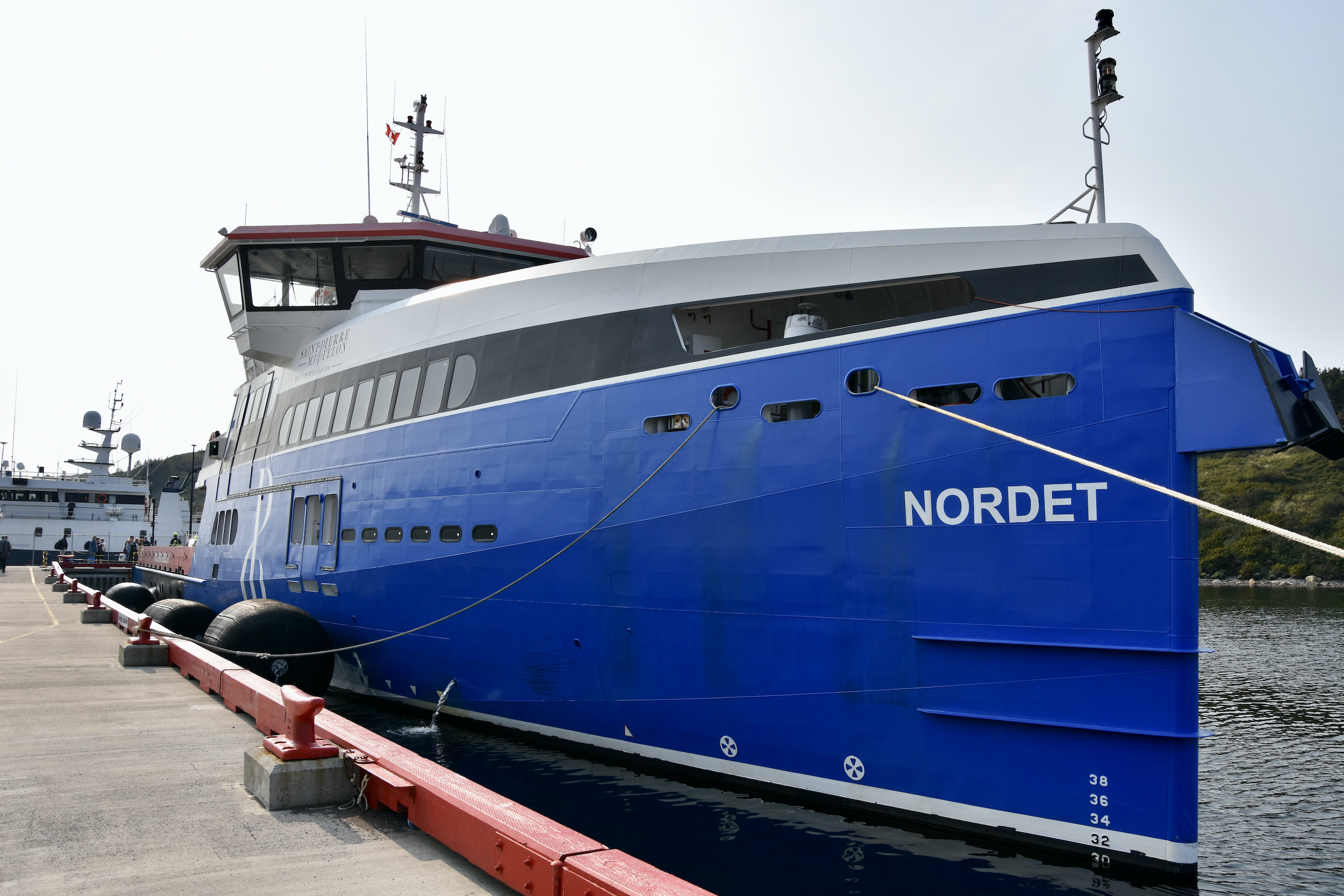
The trip to St. Pierre from Fortune takes just under 1½ hours and there is definitely an exotic feeling as you approach the island of St. Pierre passing by the lighthouse into the small harbour.
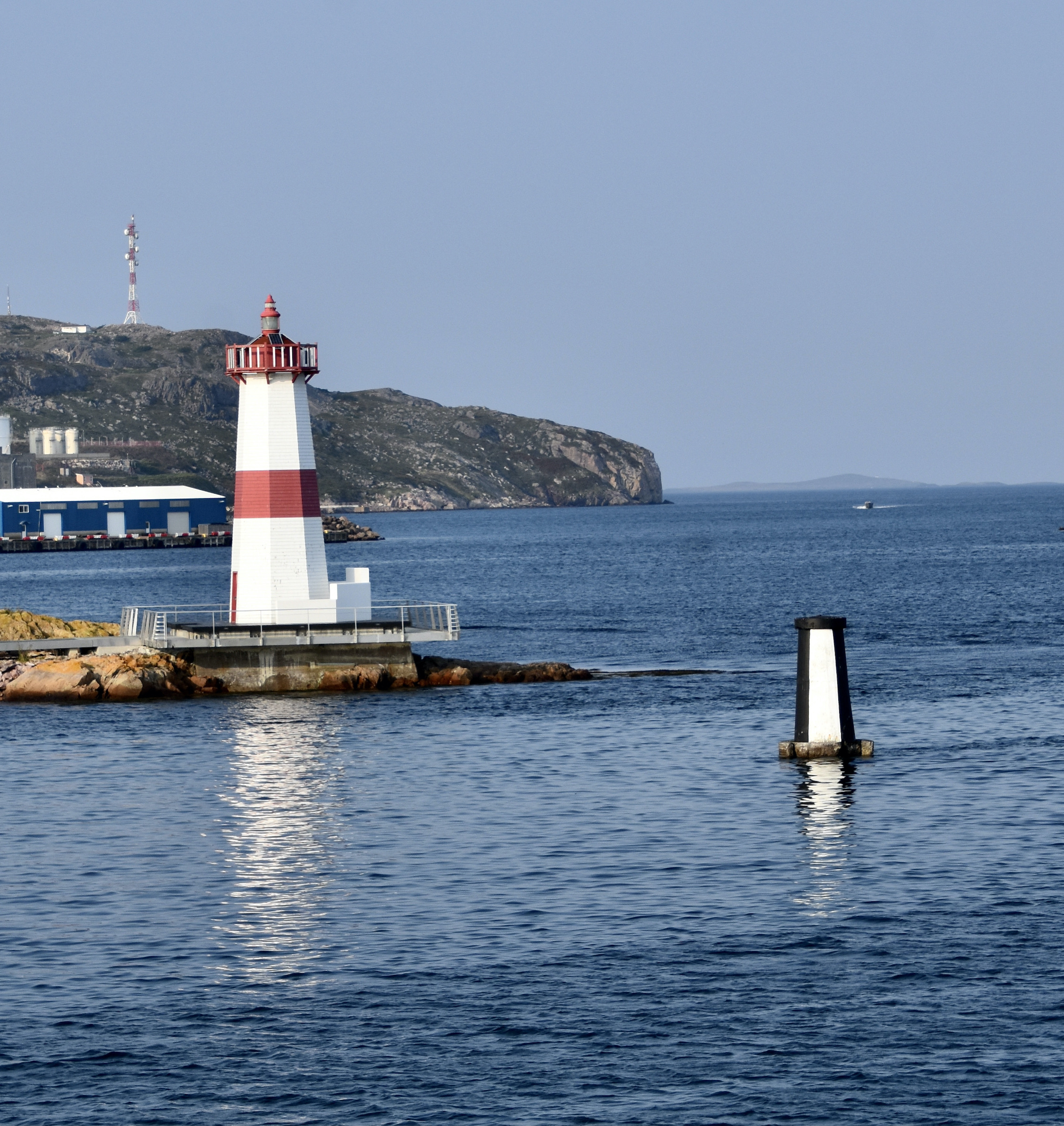
Looking down from the deck of the Nordet you see the flag of France flying and know you are no longer in Canada.
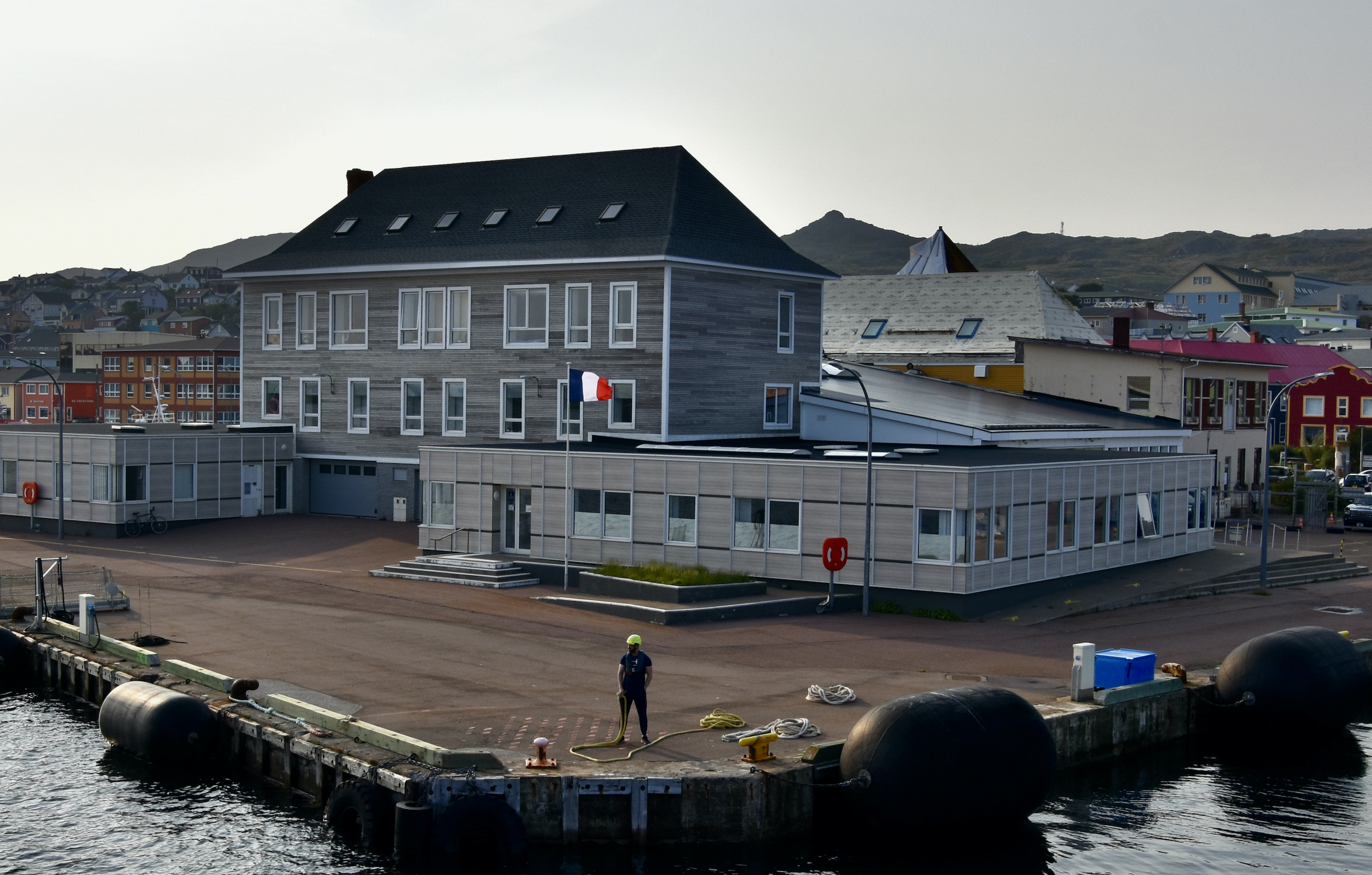
Although it is not mandatory, you should bring your passport. If not, a valid driver’s license is acceptable for entry, but I liked getting the St. Pierre stamp in my passport.
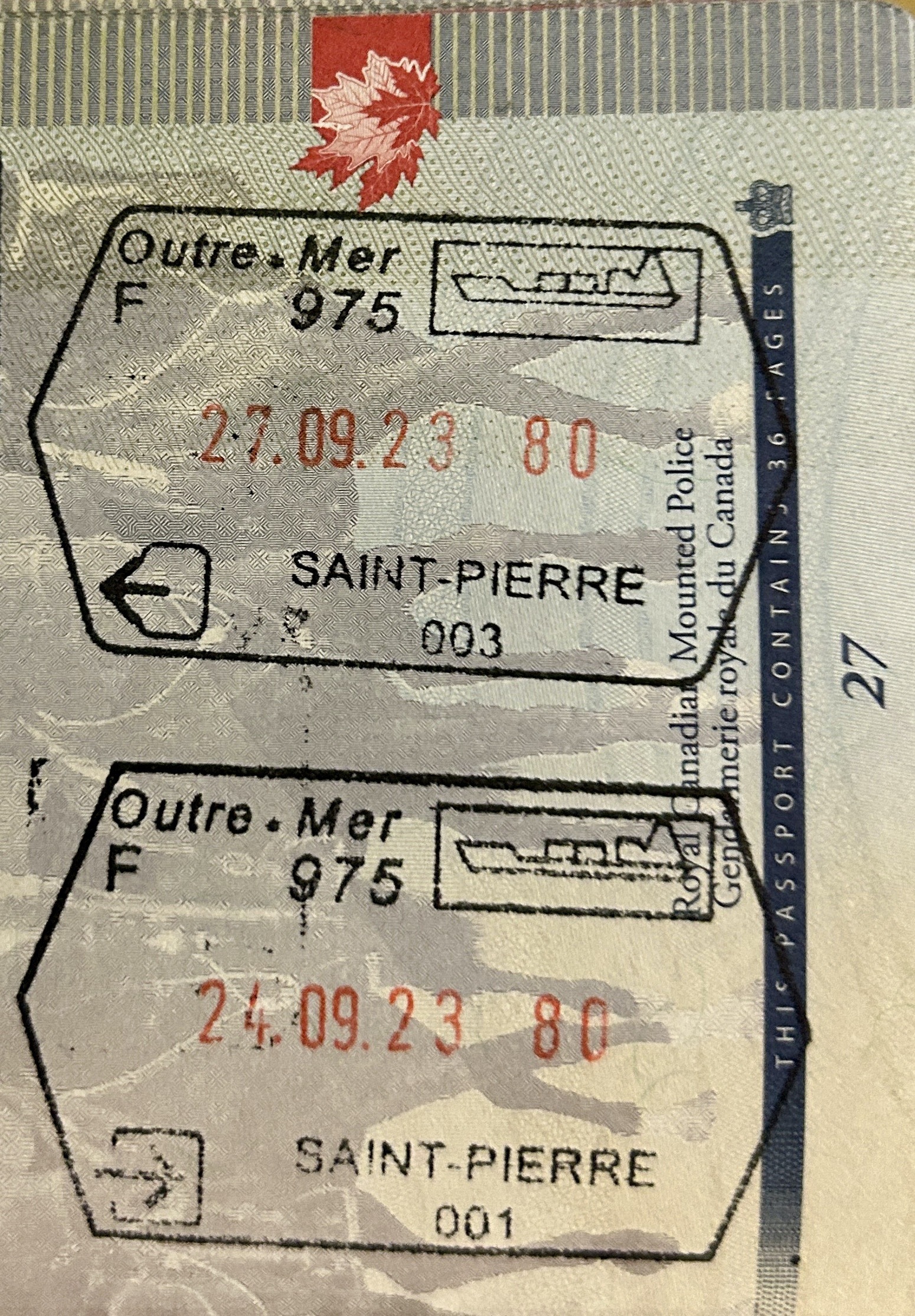
There are not a lot of places to stay in St. Pierre & Miquelon so I strongly advise booking well in advance of your trip. I cannot recommend Auberge St. Pierre highly enough and it happens to be the #1 choice on Trip Advisor as well.
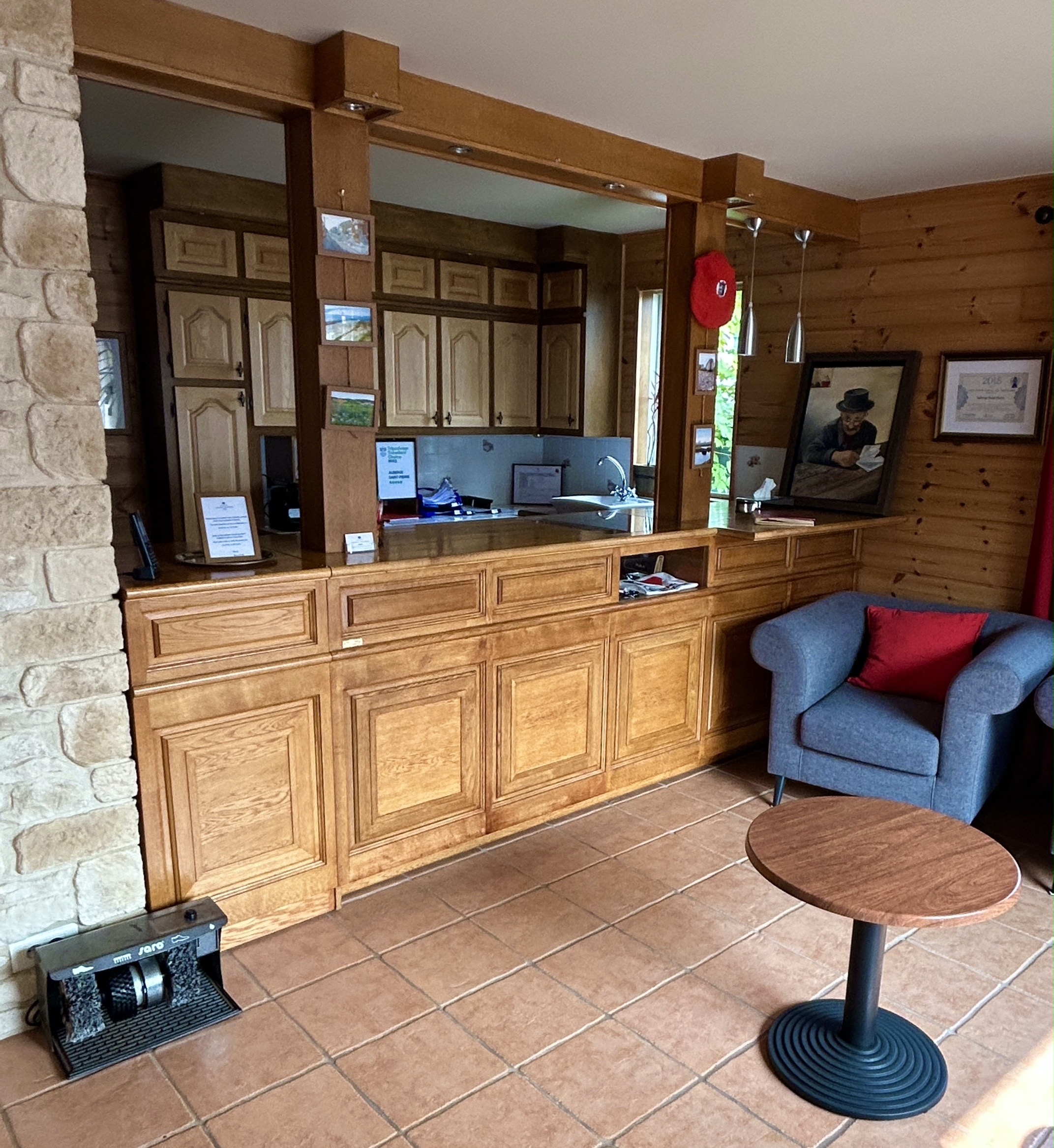
The manager Pierre was waiting for me after I came out of customs and drove me the short distance to the auberge which is on a quiet street, but within easy walking distance of almost everything in St. Pierre. The rooms are quite simple, but more than adequate.
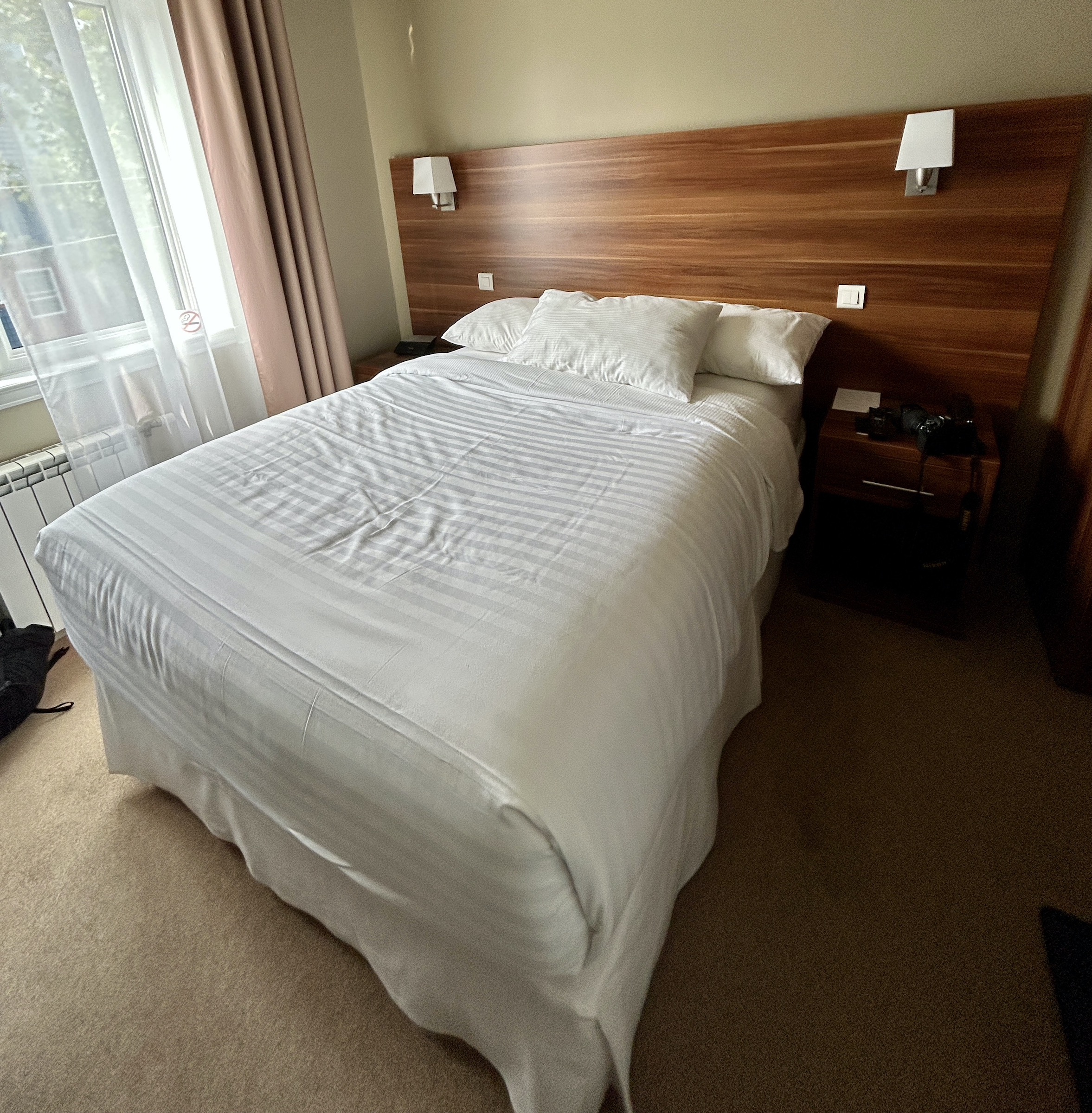
Each morning the auberge has freshly baked croissants delivered which gives a great aroma to the breakfast room.
If you are looking for more high end (and expensive) lodging the Terrasses du Port is the first luxury hotel in St. Pierre & Miquelon with an upscale restaurant, spa and fitness centre.
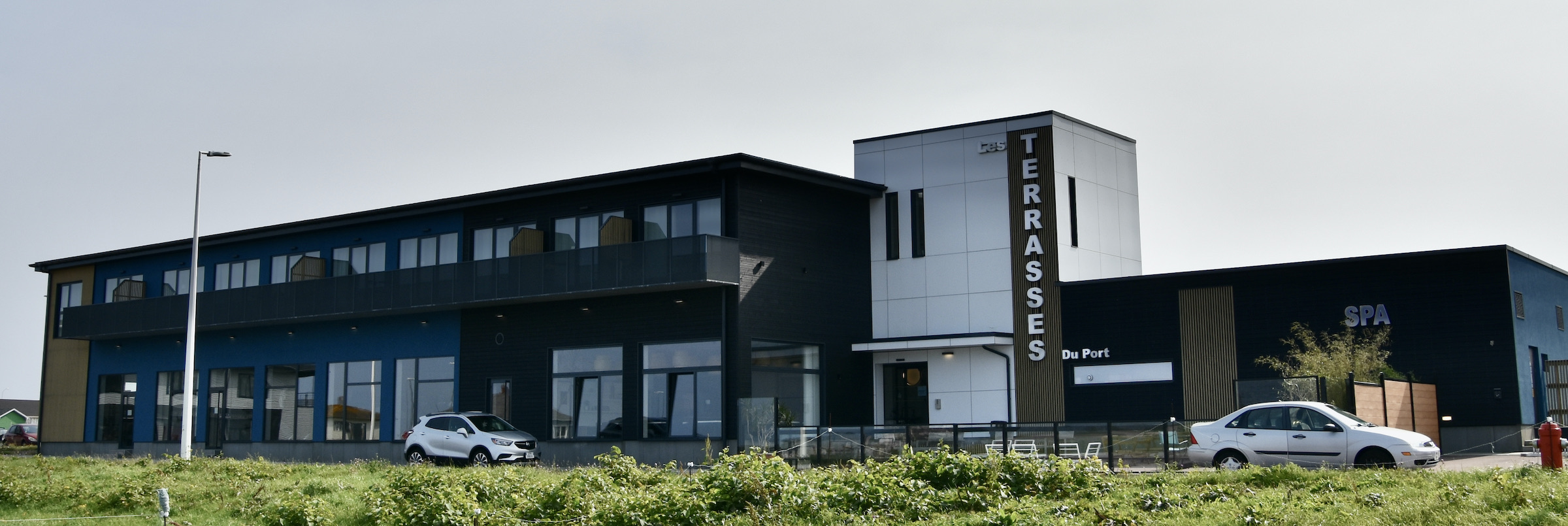
This is the view from the hotel of the St. Pierre harbour and waterfront so it’s a little further walk into the town proper than from Auberge St. Pierre, but still no big deal.
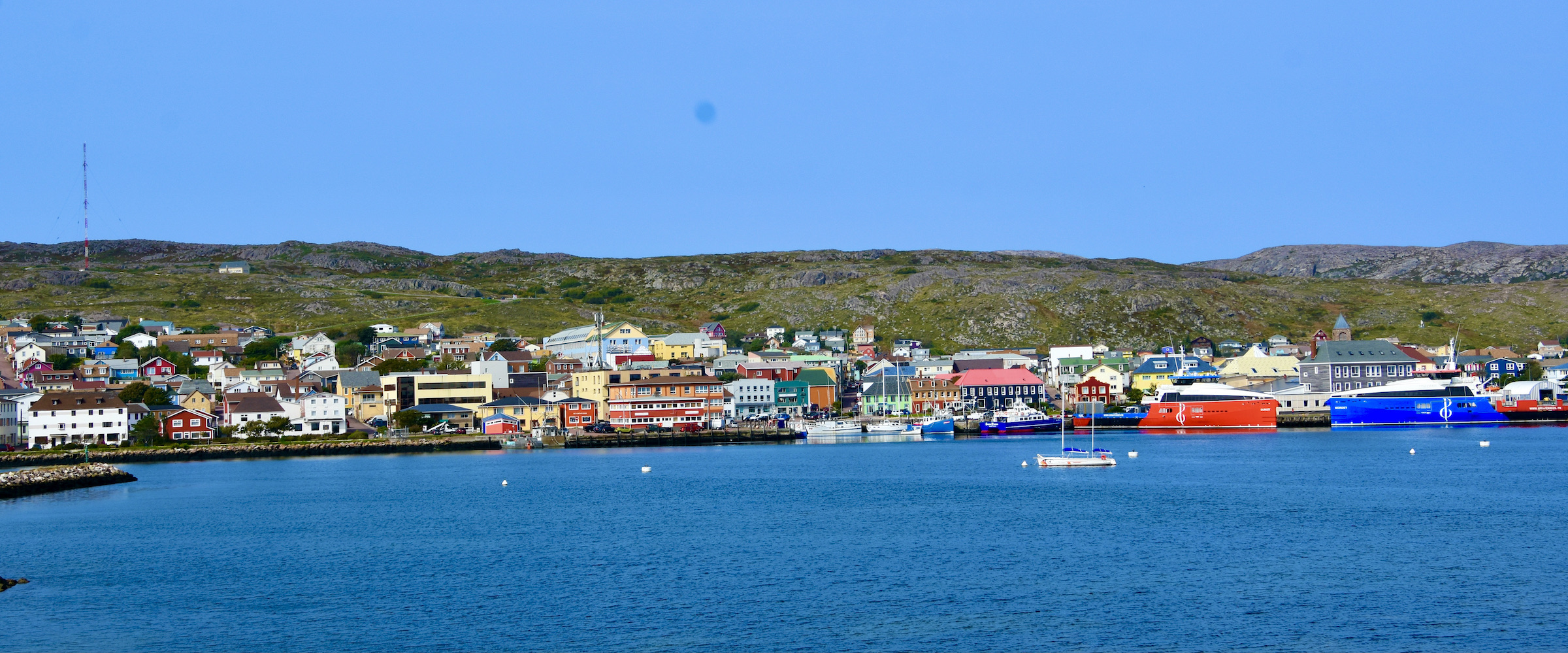
The hotel offers three night stay packages that include direct flights from Halifax on Air St. Pierre which is a very attractive option.
As noted, you don’t need a car in St. Pierre, but you do need to bring an adaptor although if you forget one like I did, the accommodation will provide one. Lastly, the Canadian cell phone providers have created a huge ripoff when you use your phone on St. Pierre & Miquelon. I was charged $2.50 a minute for calls to Canada which is all of 20 kms. away. When I got the bill it was the final straw for my relationship with Bell.
Okay I’m safely ensconced in St. Pierre. Let’s begin exploring the town.
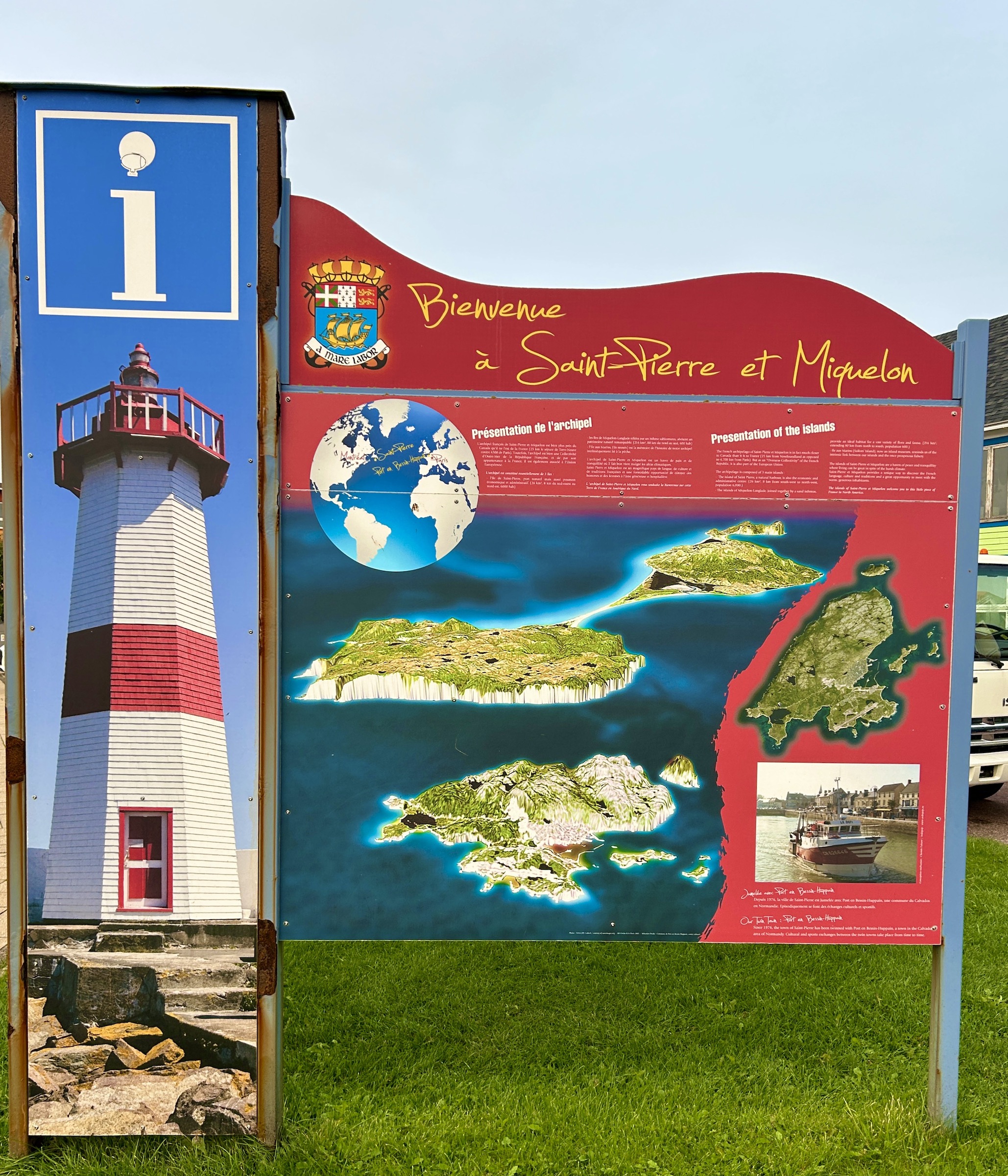
Much of the activity in St. Pierre takes place around the waterfront and that is where I headed first walking downhill from the Auberge St. Pierre. The first thing I noticed that told me I was not in Canada anymore was this unusual structure. This is a fronton on which a number of versions of the game pelota are played. This particular fronton has the Basque name Zazpiak Bat and was built in 1906. It is still used regularly and is also the site of an annual Basque festival. While I did not get to see the game played, if you are here on the weekend there’s a good chance of seeing this sport that dates back to the 13th century. In North and South America a version called jai alai is played, but with indoor frontons.
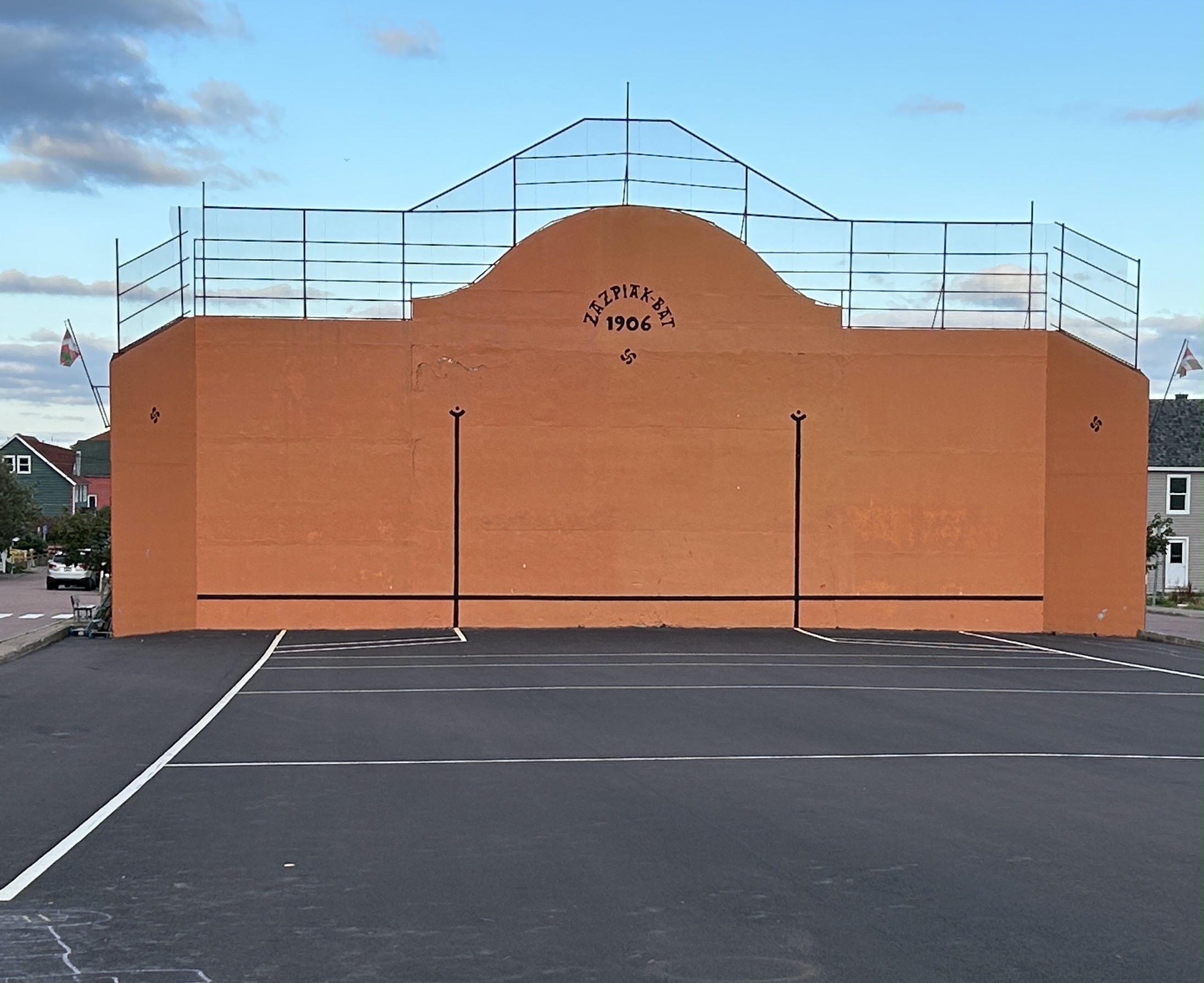
Before visiting some specific places in St. Pierre here is a small gallery of images from the town. Double click to select one and double click again to open in full size.
- Colourful Building
- Inner Harbour with Pilot Boat
- Prohibition Mural
- Sailor’s Monument
- View of St. Pierre
- Dories
- Green Dory
- White & Yellow Dory
- War Memorial
With the exception of the view of St. Pierre from above which I took a taxi to find a good spot for the shot, the rest were all taken just wandering around St. Pierre.
There are also some specific places in St. Pierre that you will also want to visit.
L’Arche Museum & Archives
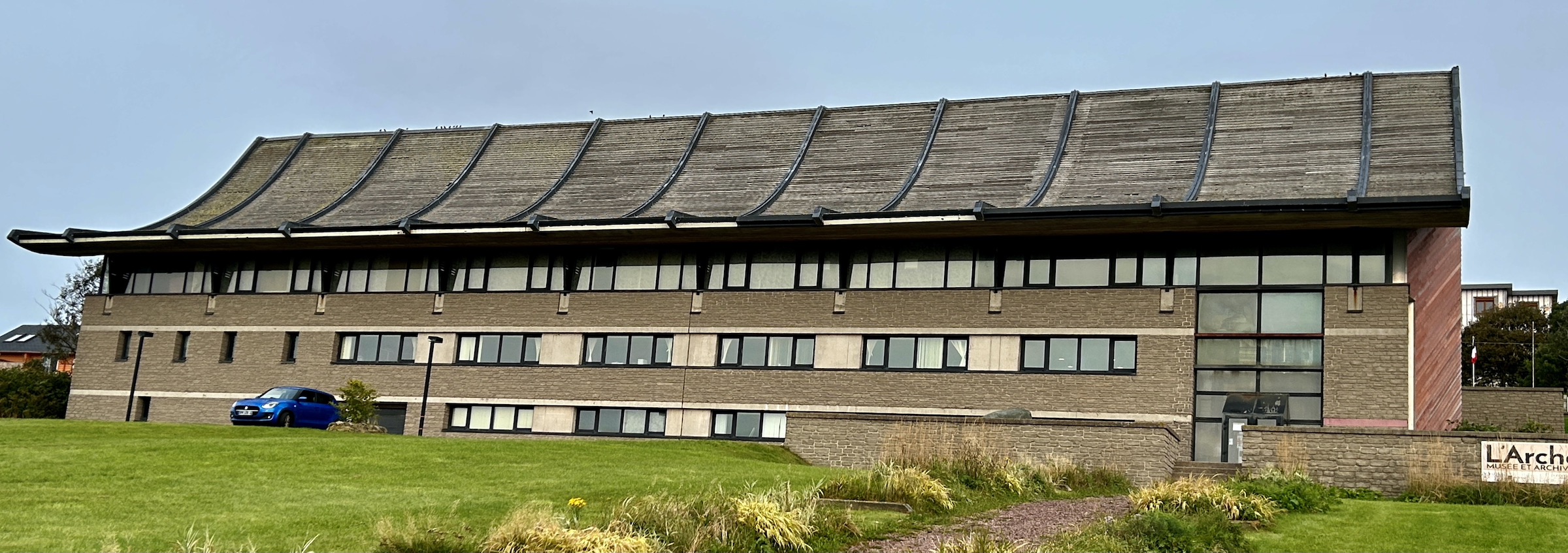
For a place as small as St. Pierre & Miquelon I was surprised to see a building as large as L’Arche Museum and Archives near the waterfront in St. Pierre. Shaped like an ark, it was opened in 1999 by French President Jacques Chirac and is the principal storehouse for both the artifacts and documents relating to the territories human and natural history. It is a must visit for first time visitors.
On entering you see these three large paintings of the humpback whales that frequent the seas around St. Pierre & Miquelon.
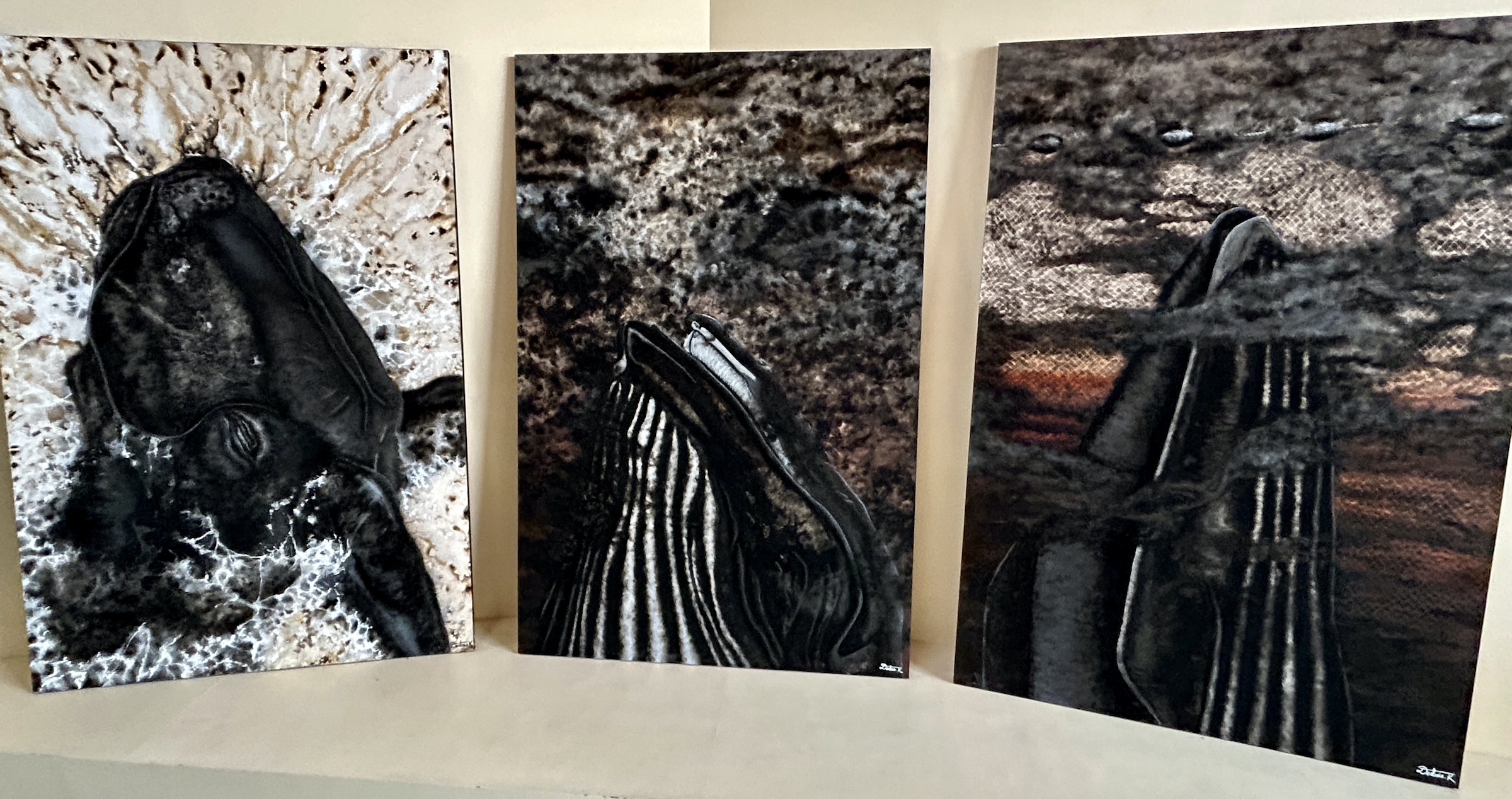
Also rising from the ground floor almost to the ceiling is one of the masts of H.M.S. Niobe, a Royal Navy sloop-of-war that ran aground at Cap Blanc in Miquelon in 1874. I will visit the site of the wreck later in this post.
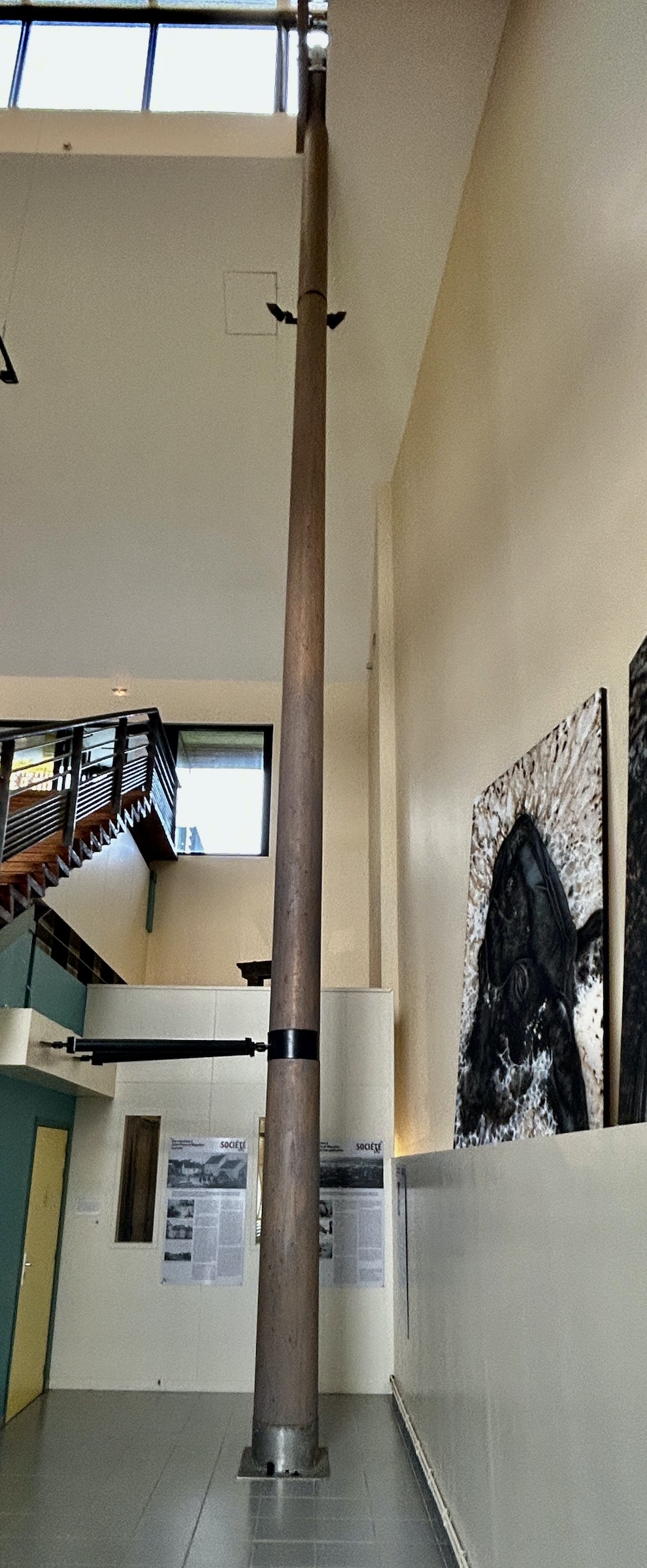
One of the most interesting galleries contains artifacts from the pre-European period dating back as far as 6000 BCE from a number of distinct cultures that came and went on St. Pierre & Miquelon in a pattern very similar to what I previously wrote about at Port aux Choix National Historic Site on the west coast of Newfoundland.
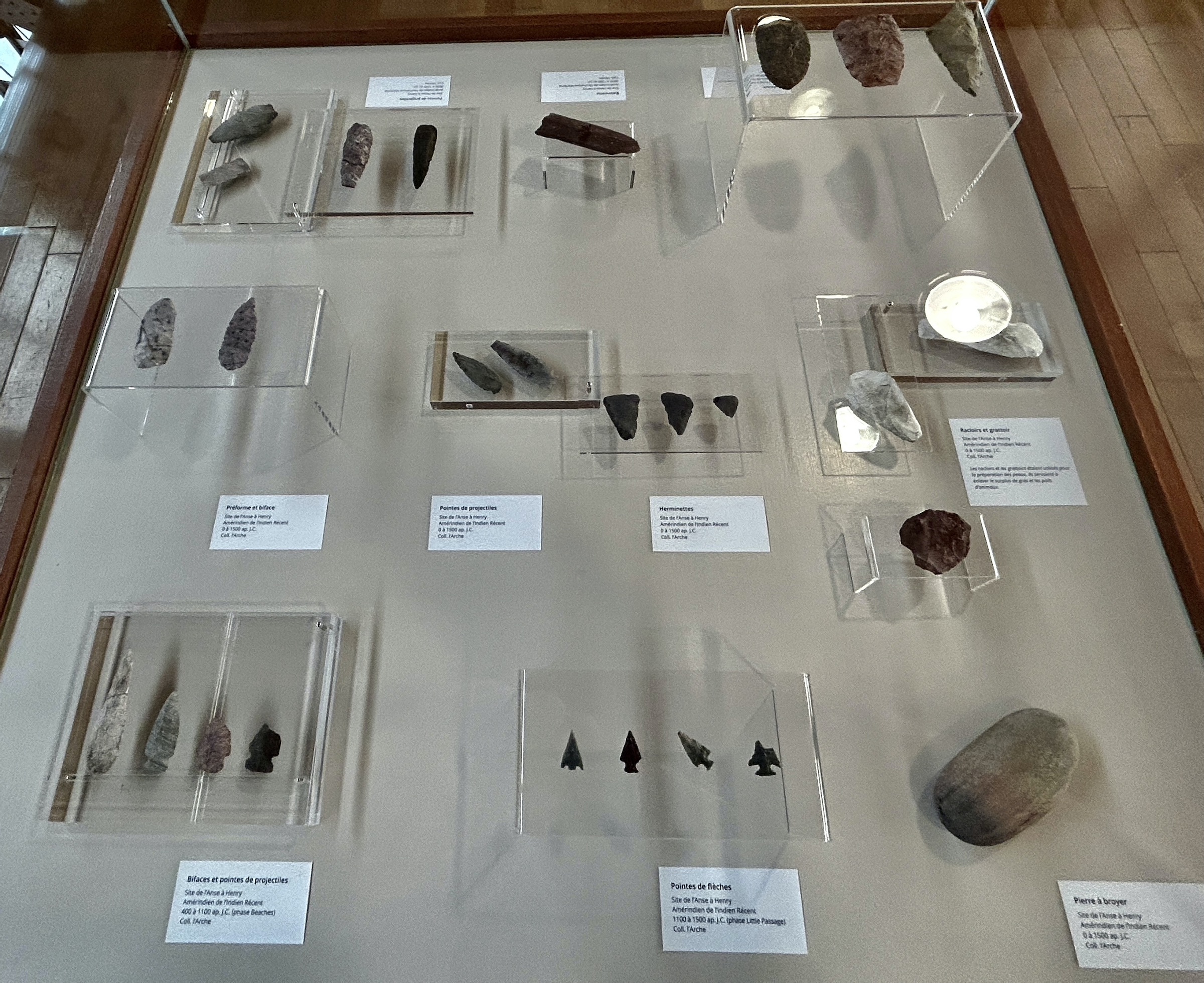
The largest gallery, not surprisingly, is dedicated to the history of the fishing industry on the islands contained in this extraordinary room with the ceiling resembling the hull of a wooden ship.
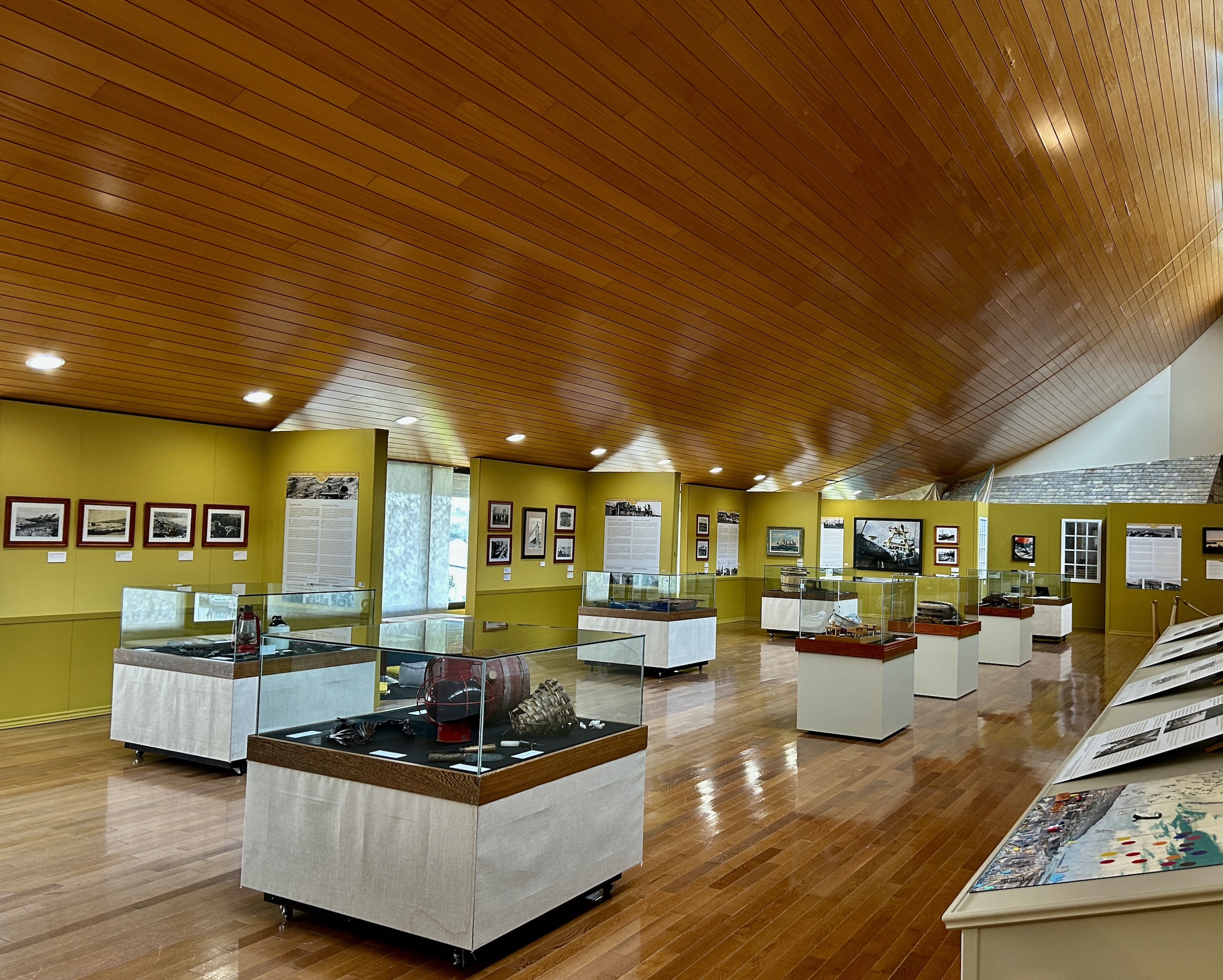
There is also a huge restored mural showing the drying of the cod on St. Pierre which allegedly gave the community a distinct odour that could be smelled by approaching sailors long before the place actually came into view.
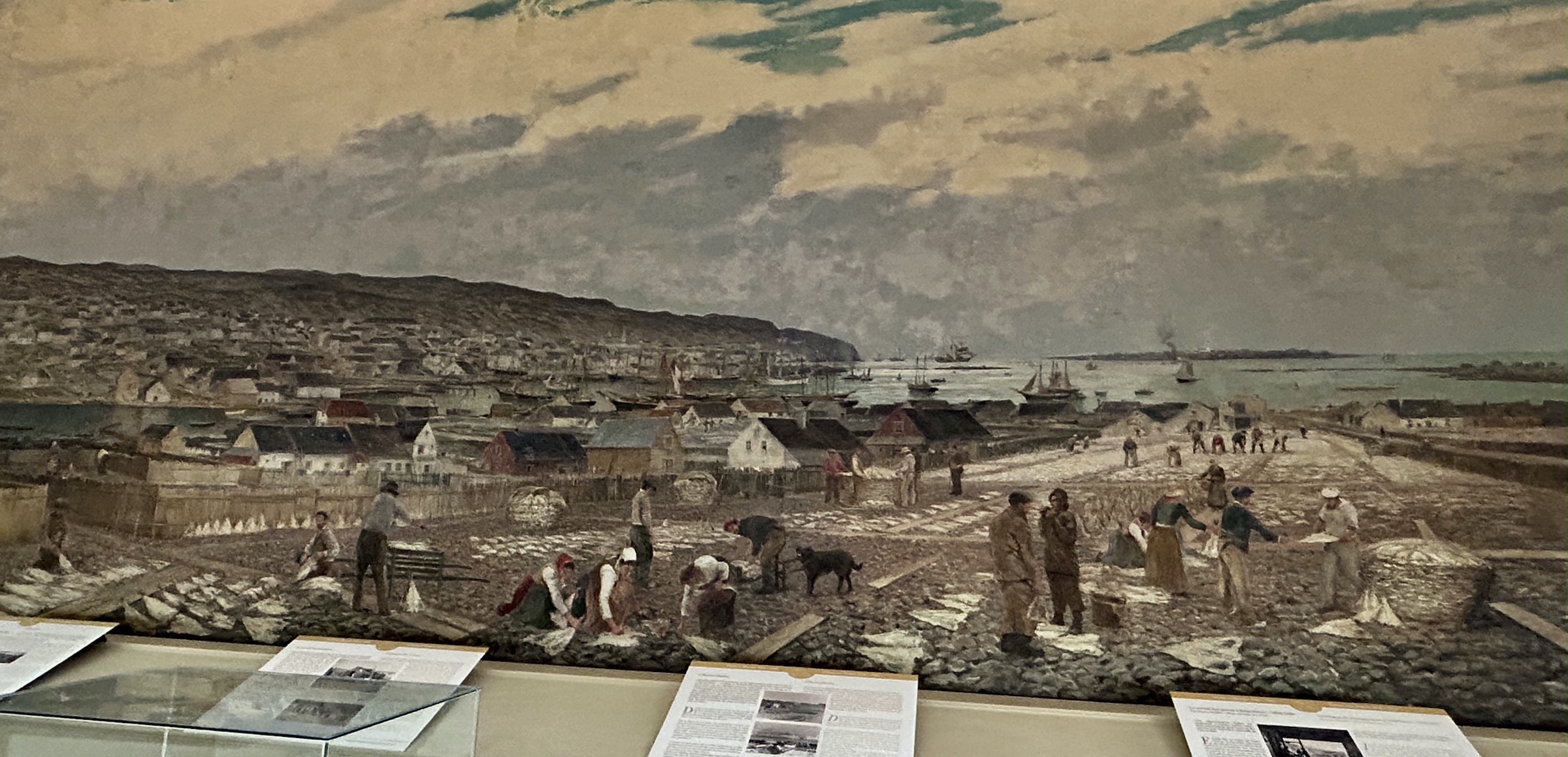
I must admit that the most interesting exhibit for me was also the most macabre. It seems 2023 was the year of the guillotine for me. I saw them in Vietnam and Cambodia, but did not expect to see one in St. Pierre & Miquelon yet here it is. Another sign that I am definitely in France and not Canada.
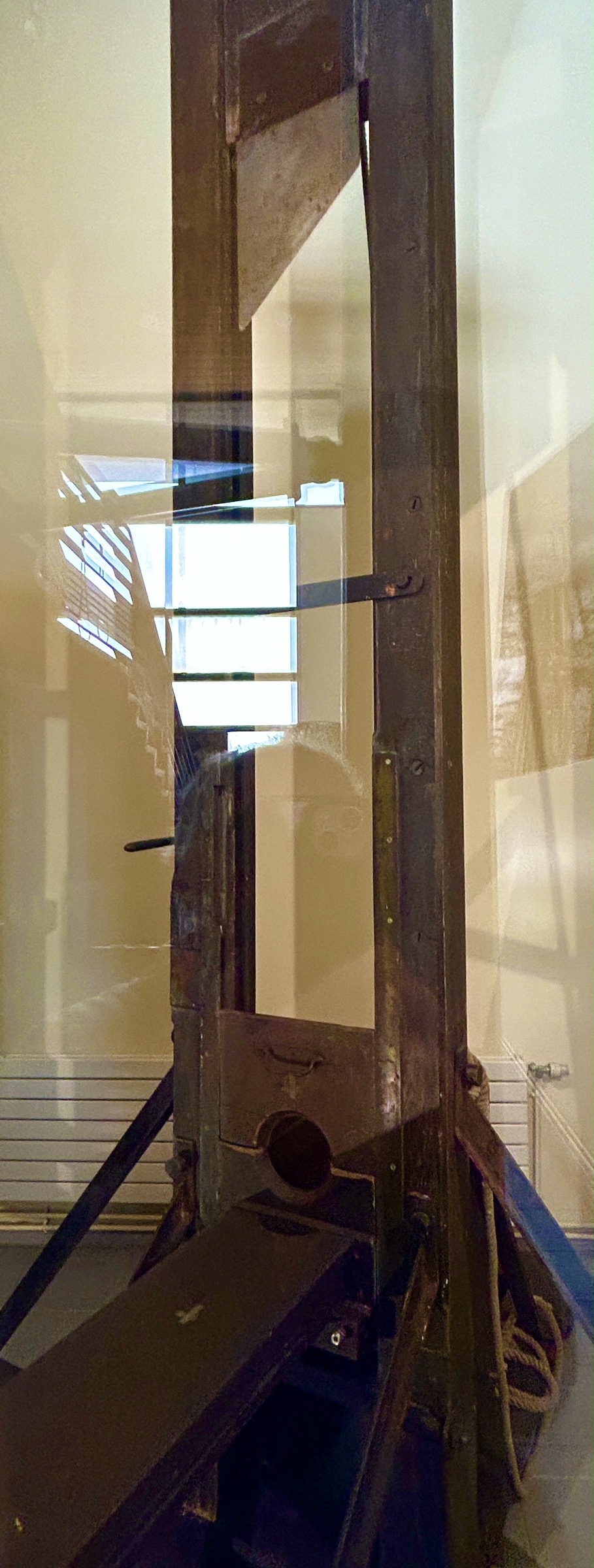
The guillotine was brought over from France specifically to execute one man who had committed a murder on nearby Ile aux Marins which I will visit later in this post. After that it was never used again and is now a gruesome reminder of this once common executioner.
L’arche also offers guided tours of the museum, a walking tour of St. Pierre and a guided walk around Ile aux Marins.
While L’Arche has a section on the Prohibition boom in St. Pierre & Miquelon which is very good, the place I am visiting next is just a little more authentic.
The St. Pierre & Miquelon Heritage Museum
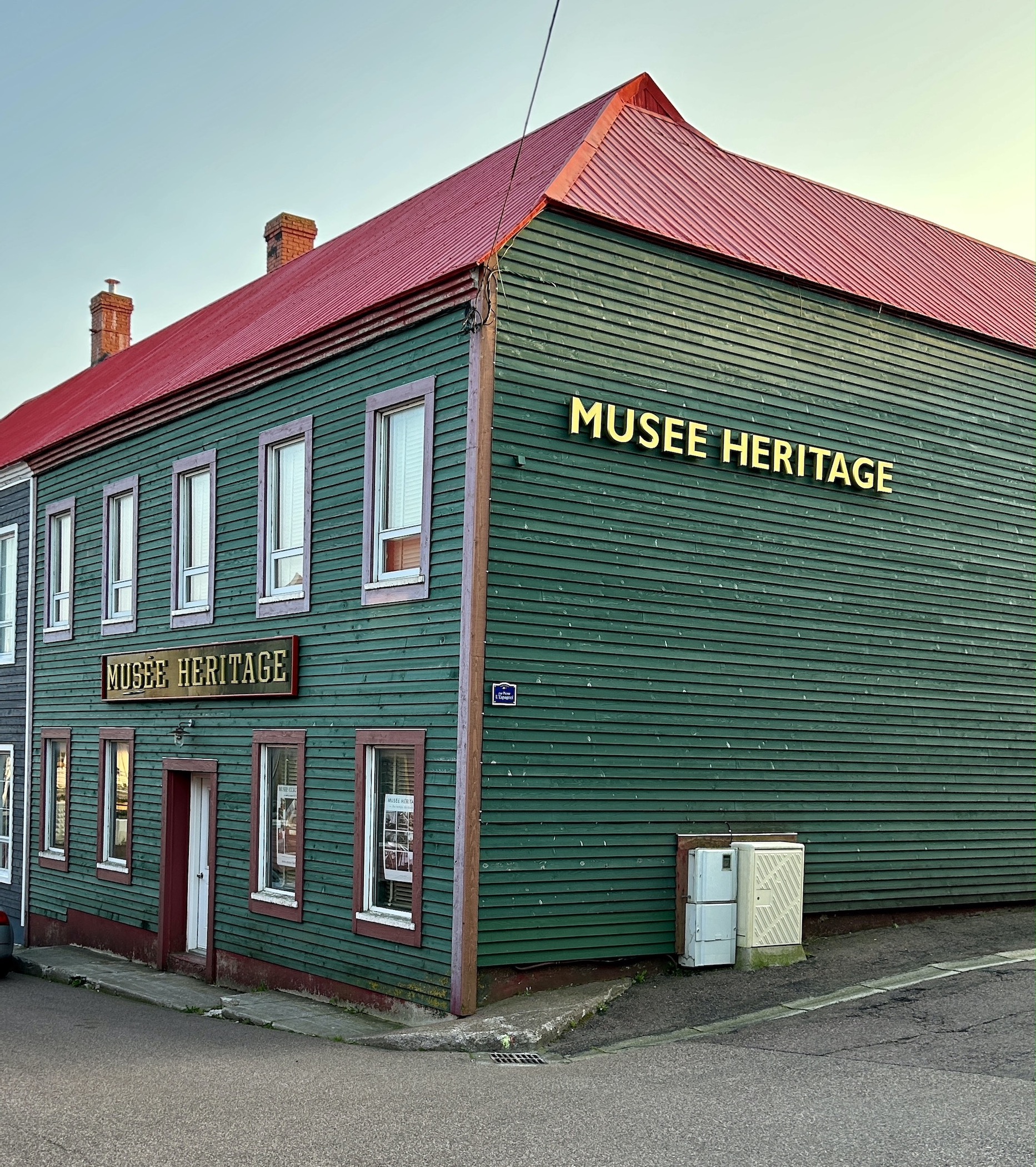
The Heritage Museum is a privately run labour of love of Roland Châtel who was kind enough to show me around the ten rooms that are a homage to the history of St. Pierre & Miquelon. The building itself is of great interest as it was once the headquarters of Henri Morazé, a notorious local hero who made a fortune during the Prohibition Era selling legal French alcohol to illegal Canadian and American bootleggers, including Al Capone.
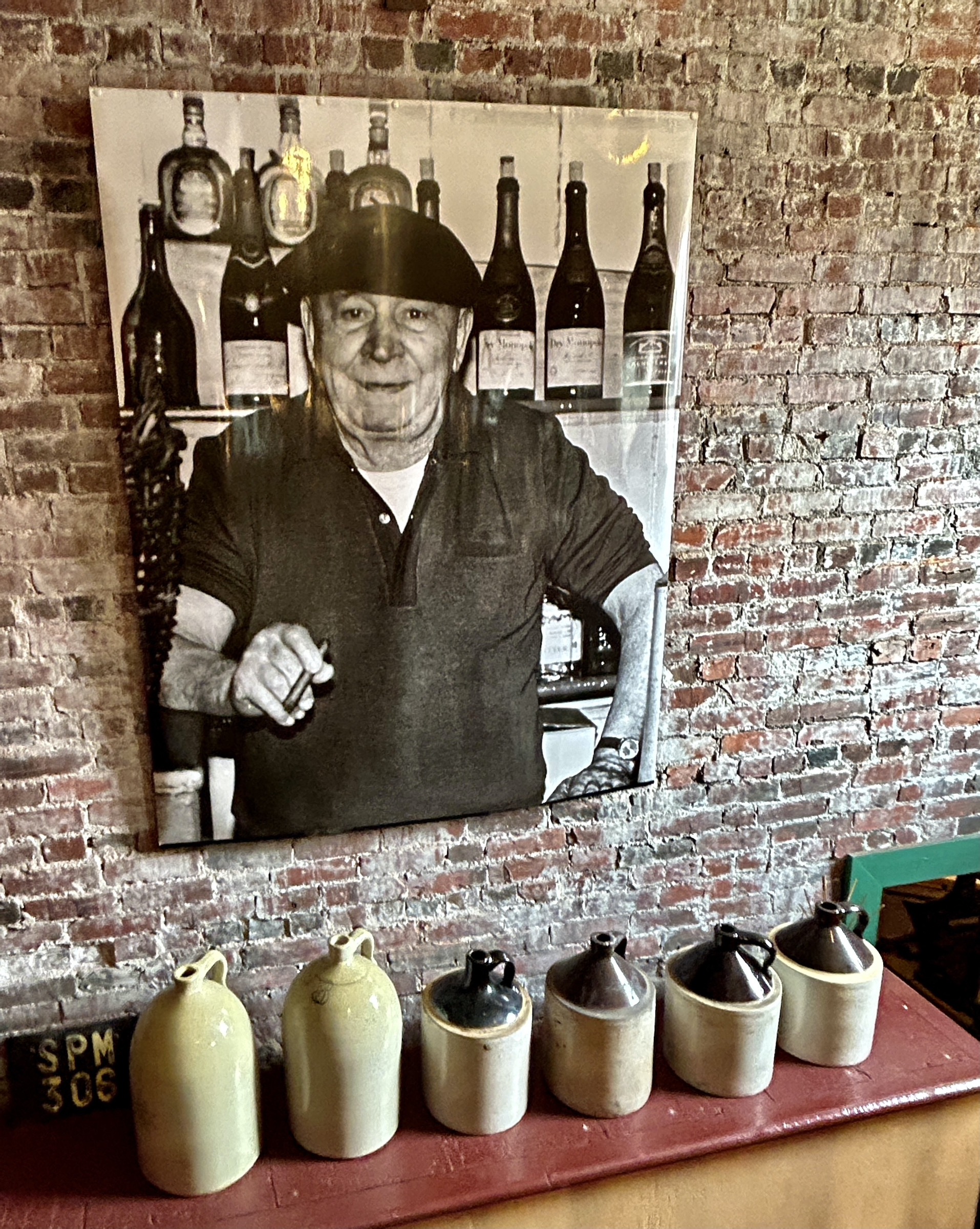
Incredibly Roland still has crates of unopened booze from those wild days.
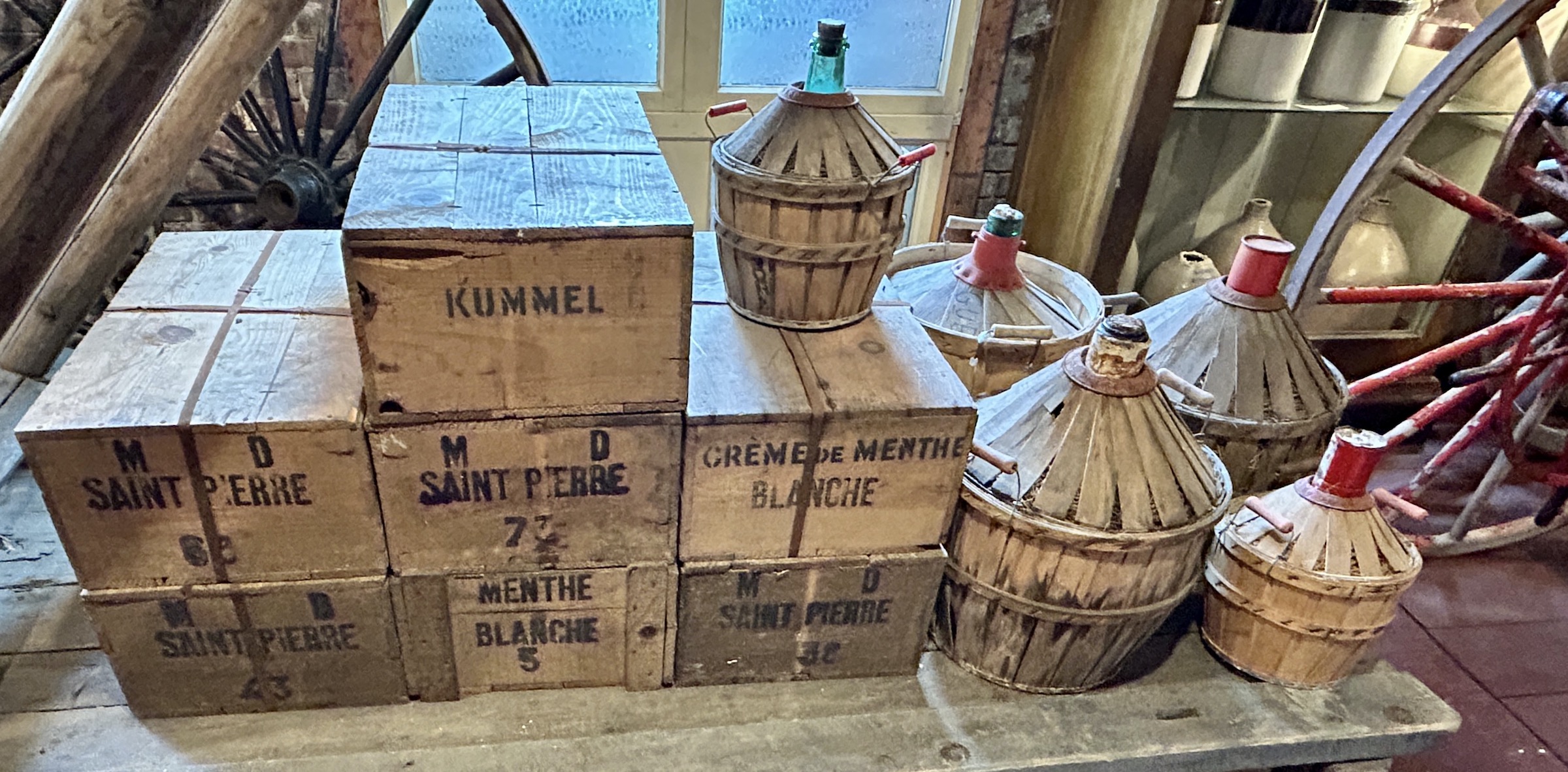
These cognac bottles from the venerable Maison Hardy are very likely still drinkable and maybe even worth a small fortune.
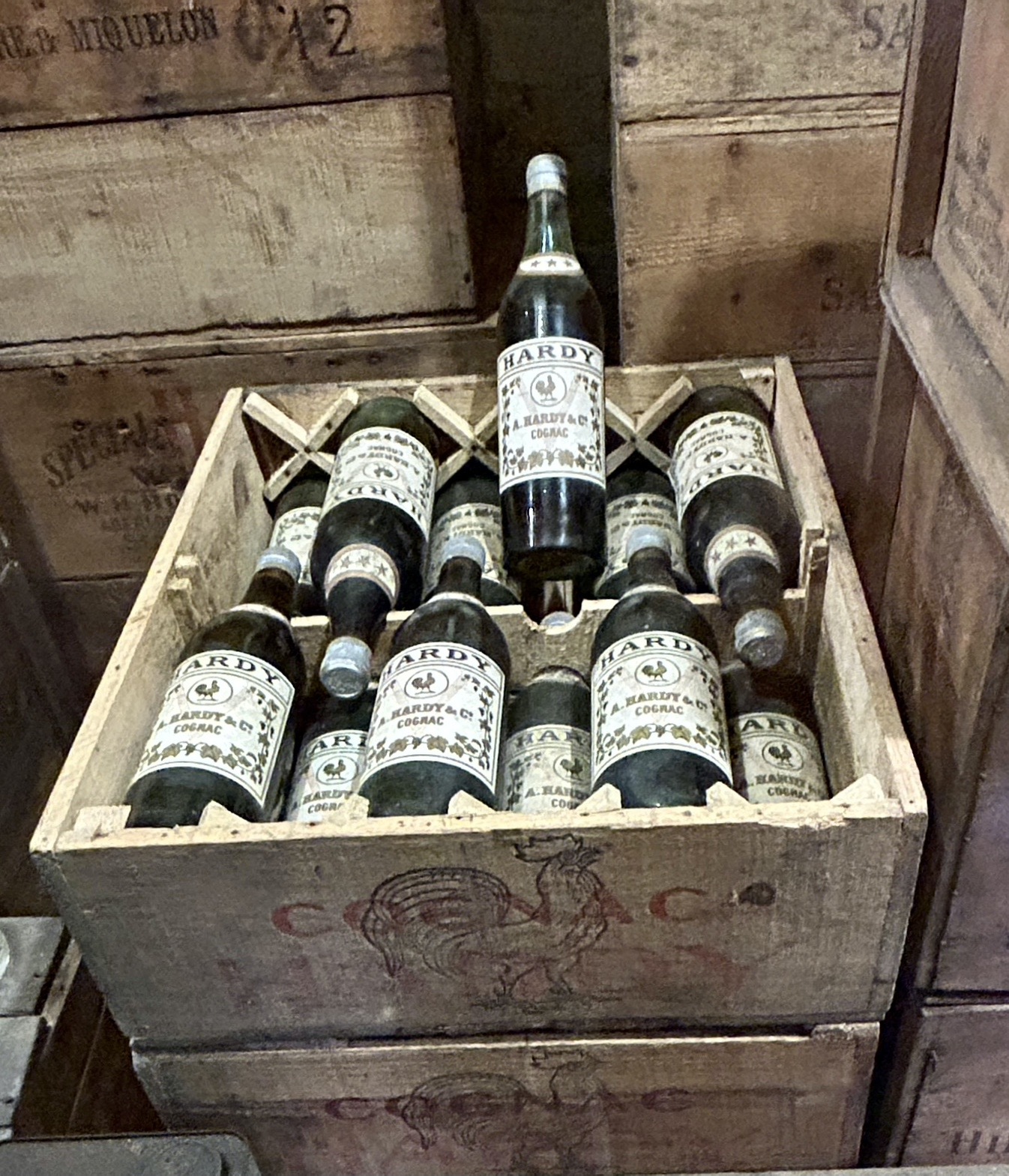
The Heritage Museum doesn’t focus only on the more secular side of life. Roland has preserved this chapel and altar that once was a site of worship on Ile aux Marins.

He is probably most proud of this mural which portrays dozens of actual residents of St. Pierre & Miquelon over the ages.
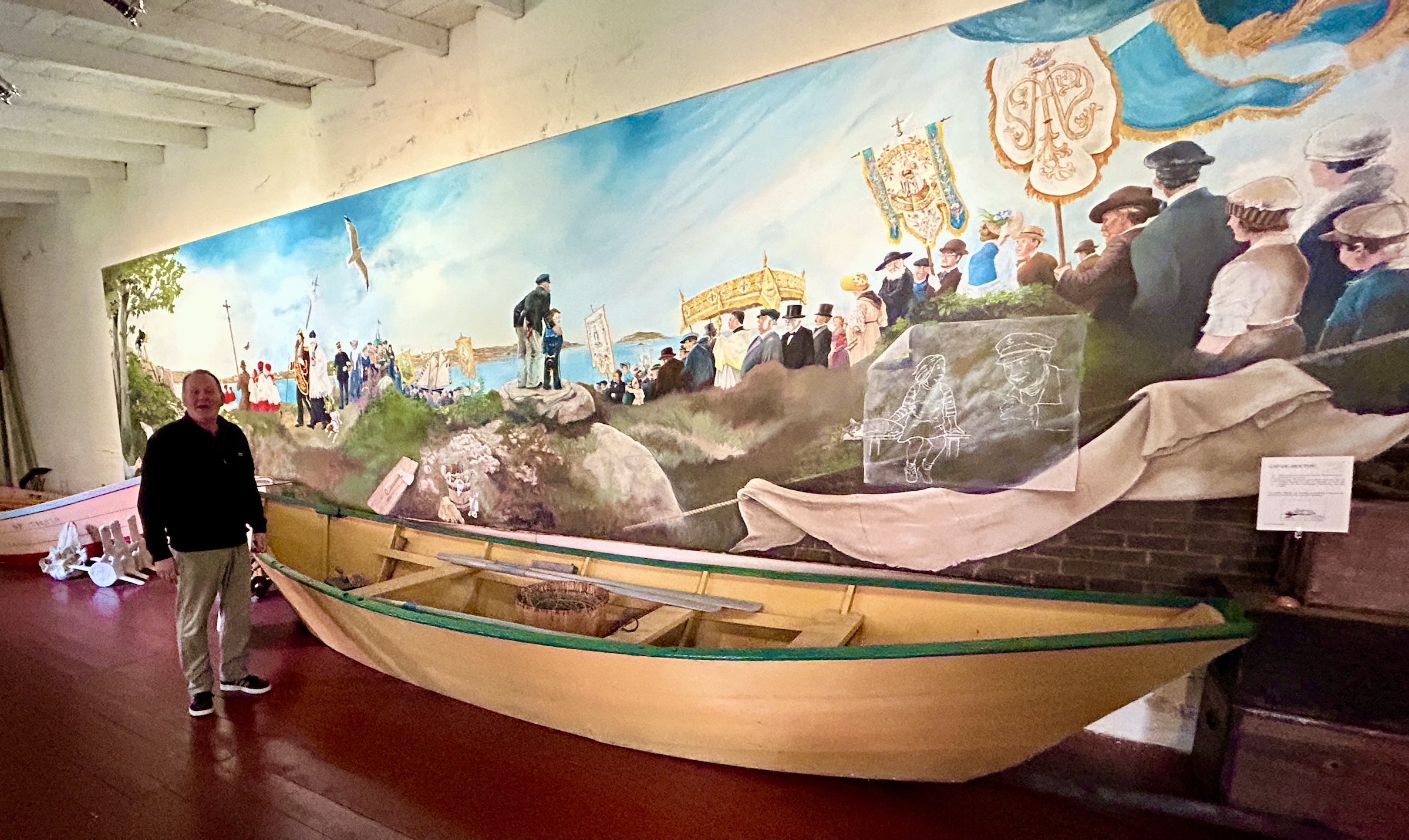
So definitely do not pass up this gem of a museum on your visit to St. Pierre & Miquelon.
Ile aux Marins

Just ten minutes from St. Pierre is the low lying Ile aux Marins which is another must visit during your time in St. Pierre & Miquelon. As noted L’Arche offers guided tours and I am about to take the short boat ride to the island to take that tour.
Known as Ile aux Chiens or Isle of the Dogs for the first three hundred years or so of European habitation, the name was changed to Ile aux Marins or Sailor’s Island in 1931. The name dogs did not refer to the four-legged creatures, but rather to the abundance of dogfish, a small shark, in the surrounding waters. At one time over 700 people lived here, but in 1960 the last of the permanent residents left for St. Pierre and since then it has been a ghost town. However, similar to Battle Harbour in Labrador, there are still a few summer residents and a number of buildings including the church, the school and a few others are open to the public. Although I took a guided tour, there are interpretive panels throughout the island that make an unguided visit quite productive as well.
This is Le P’tit Graviers, the small boat that takes you from the St. Pierre wharf to the island in just ten minutes for the princely sum of two euros return.
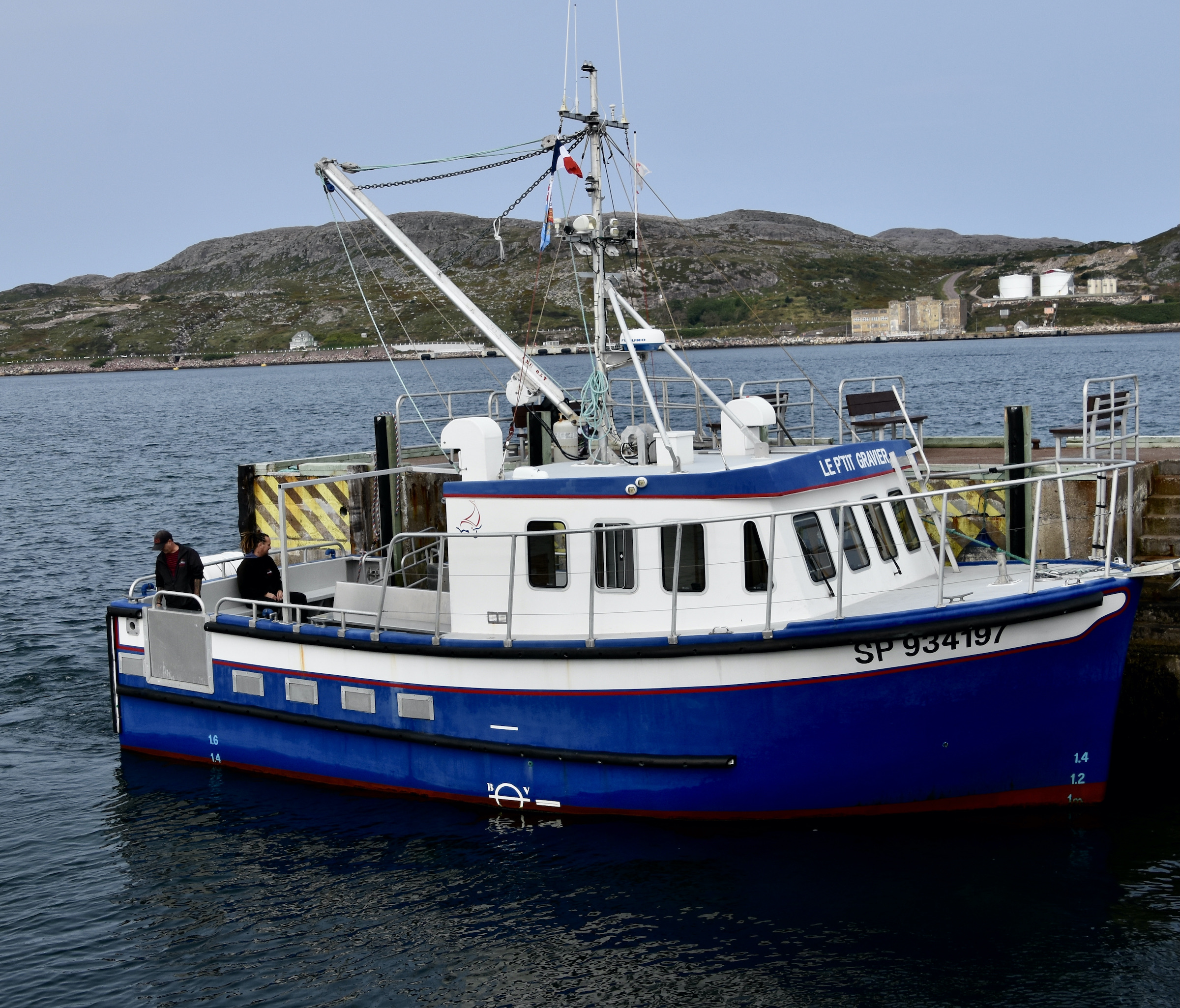
Heading to the island you notice several colourful houses that are still being well kept, along with the church.
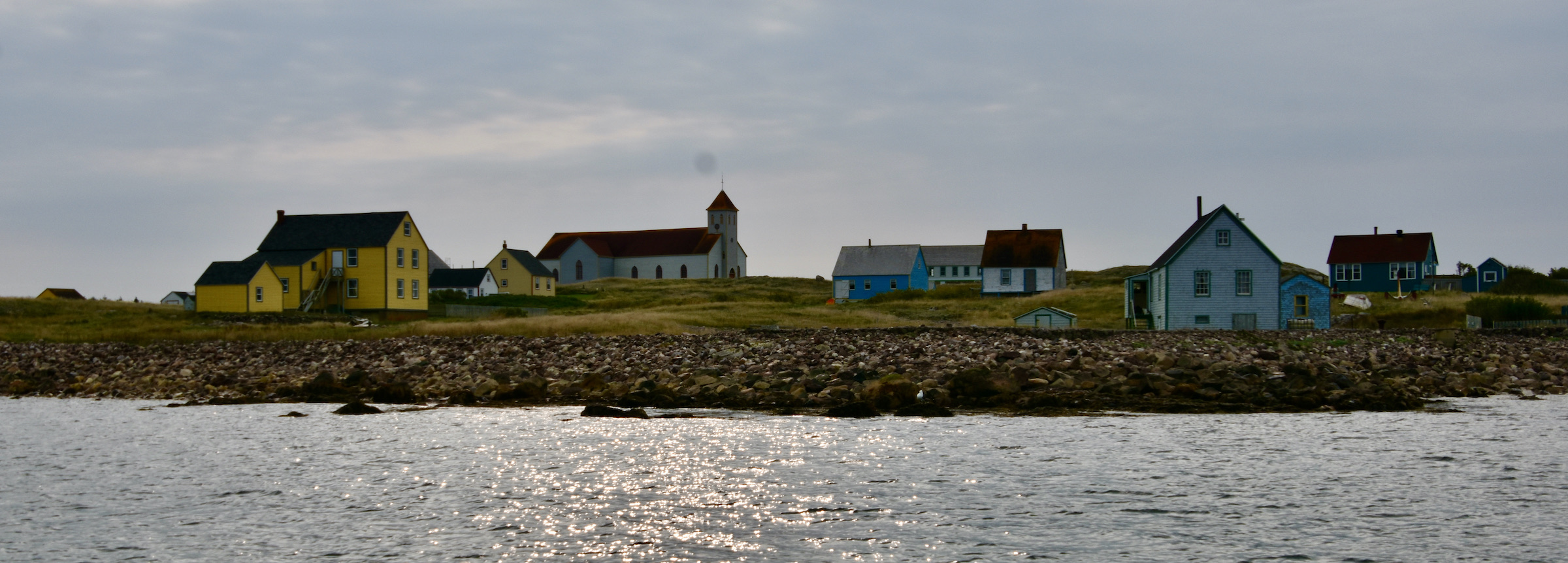
This young lady was the guide for our small group of five and she spoke fluent English.
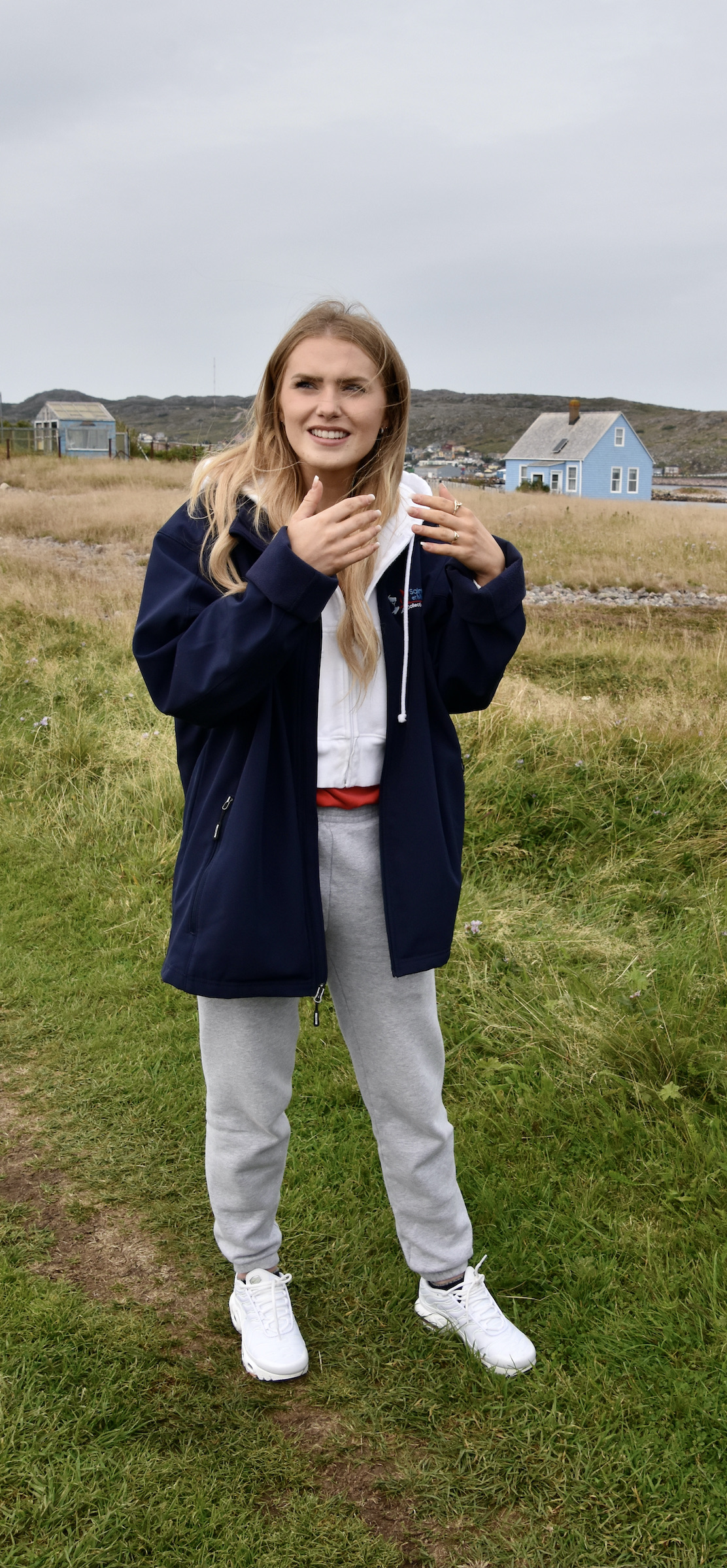
Rather than give a description of all the things there are to see I have created a gallery of Ile aux Marins highlights.
- Cannons on Ile aux Marins
- Island Lighthouse
- La Maison Jezequel
- Summer Home
- Summer Home 2
- Summer Home 3
- Wash House
- Wash House Tubs
- Old Foundations
- Main Street
- Fire Hall
- Church
- Church Interior
- Cod Drying Rocks
- Lourdes Grotto
- Open to the Public
- Oldest Grave
As you can see there are plenty of places to explore on the island. I was particularly moved by the WWI monument which contained the graves of two soldiers from Ile aux Marins killed in that war.
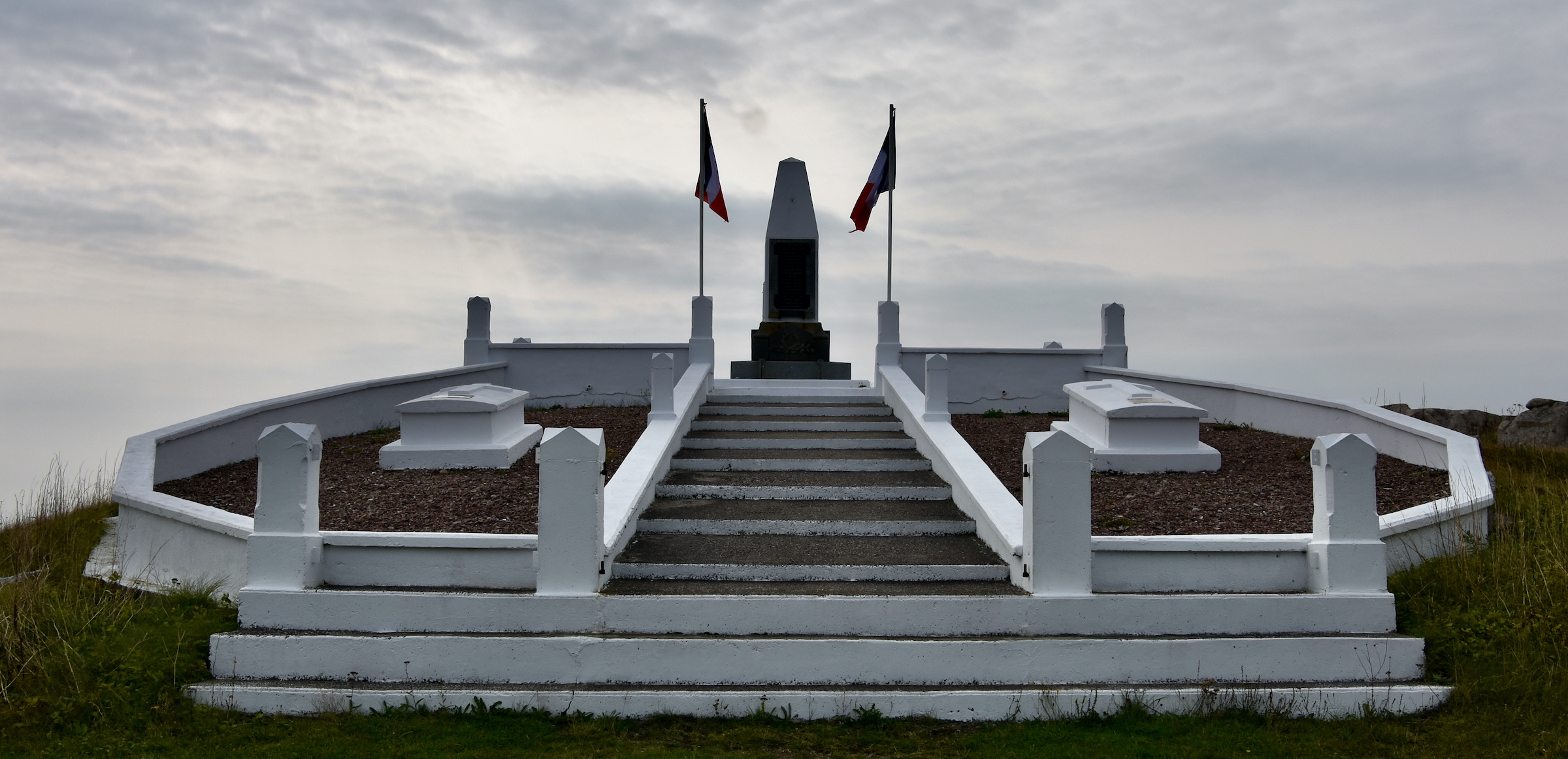
A closer look revealed the names of thirteen men from this tiny place killed in that conflict plus three more from WWII. That’s simply an incredible proportion of the island’s young men of fighting age and must have been a devastating blow to the community.

The names of those killed are commemorated as well in a series of Stations of the Cross, each with the name of one dead soldier.
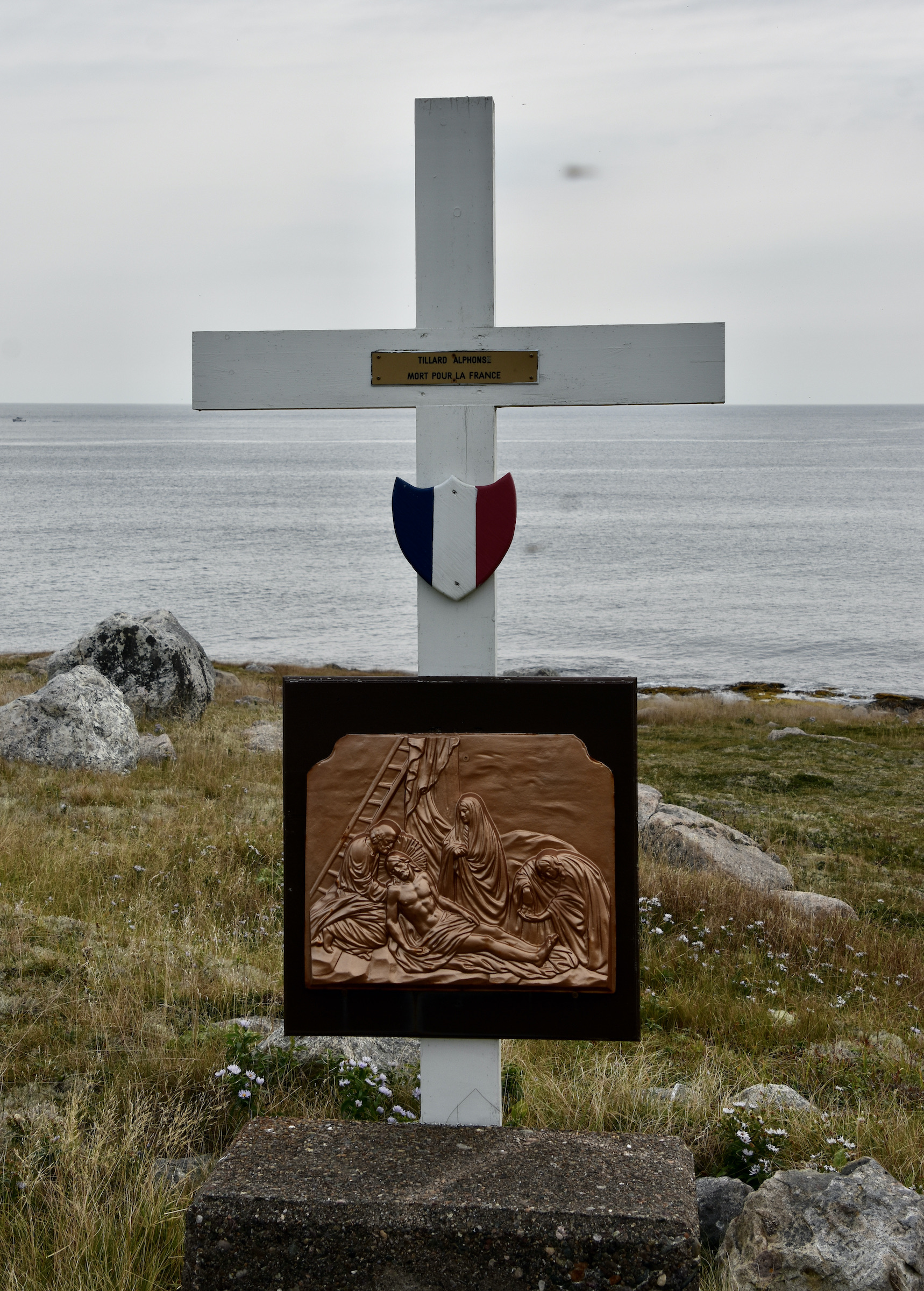
Apparently it was the proceeds from the Prohibition days that paid for these monuments.
The school contains a surprisingly good museum with a lot of interesting artifacts. Again I have created a small gallery of some of them.
- Bottles from Shipwrecks
- Classroom
- Child’s Bedroom
- Child’s Drawing
- First Day Covers
- Baby Strollers
- Nautical Room
- Religious Icons
- Shotguns & Birds
Spending a couple of hours on Ile aux Marins is a great way to conclude your visit to St. Pierre, but there’s more to come as I head for Miquelon and Langlade.
Miquelon and Langlade
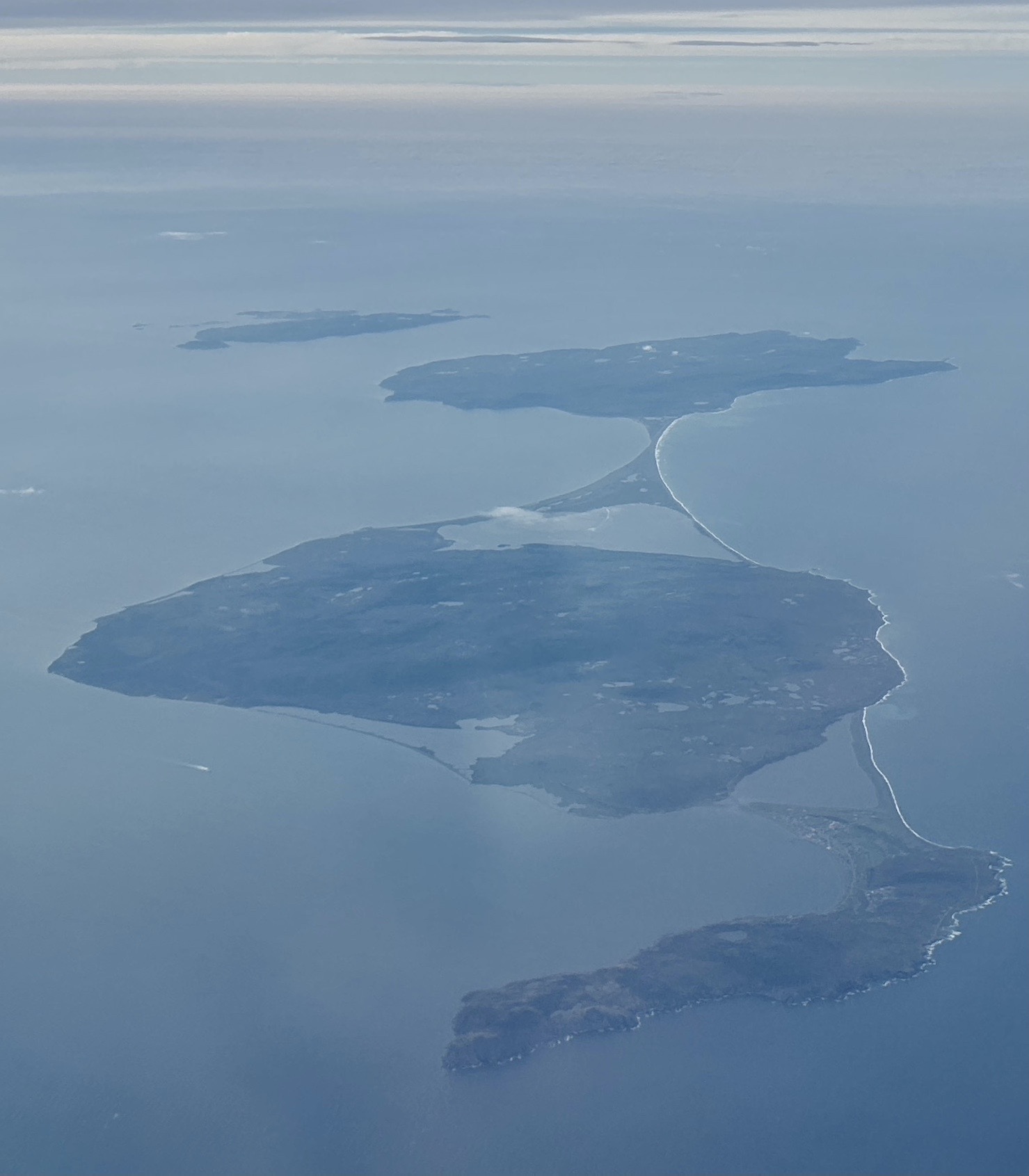
This is an aerial shot I took of St. Pierre & Miquelon on the flight from St. John’s to Halifax when we flew almost directly over the islands. The large land mass in the foreground is Miquelon and the other land connected to it by a narrow isthmus is Langlade. In the background on the upper left is St. Pierre. Even though Miquelon and Langlade make up over 90% of the territory they have only 10% of the total population and all of that is in the tiny village of Miquelon with Langlade having no permanent residents.
You can get to Miquelon from St. Pierre via ferry, but it takes longer than the crossing from the mainland to St. Pierre. The alternative is a fifteen minute plane ride on Air St. Pierre which is what I opted for. At 17.50€ return for anyone over 60 it’s one of the few bargains still remaining in the world of air travel.
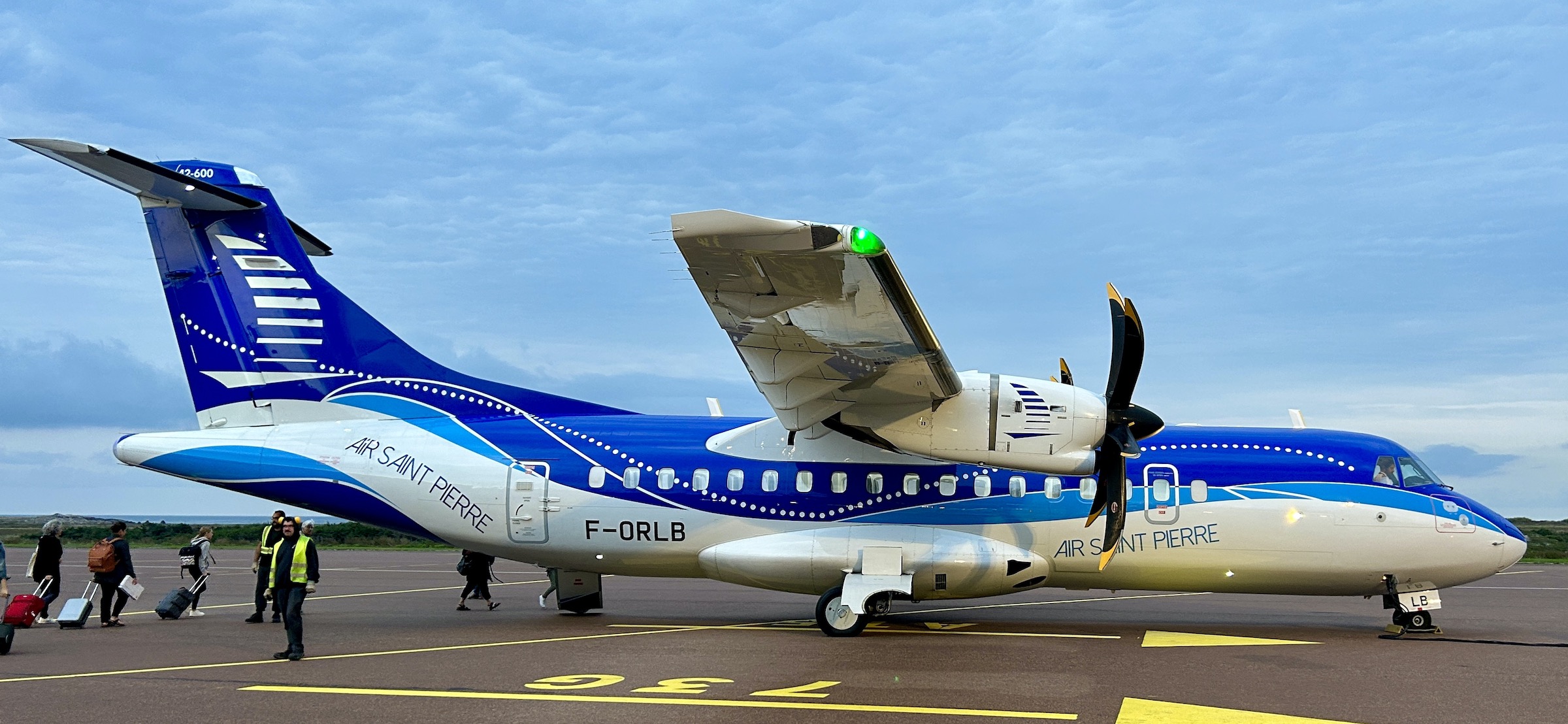
The Miquelon airport is right beside the village and technically if you just wanted to visit it and maybe do some hiking in the Le Cap area you could get by without a vehicle. However, if you want to see more of Miquelon and Langlade you will need transportation. The Nature Interpretation Centre offers three and a half hour tours of Miquelon and Langlade for 55€ which can be booked in advance by following the link. Essentially you can get the most out of a one day visit by taking Air St. Pierre, then spending some time on foot exploring the village, have lunch, then take the guided tour and return to St. Pierre in the late afternoon.
It’s a short and pleasant walk from the airport to the Nature Centre.
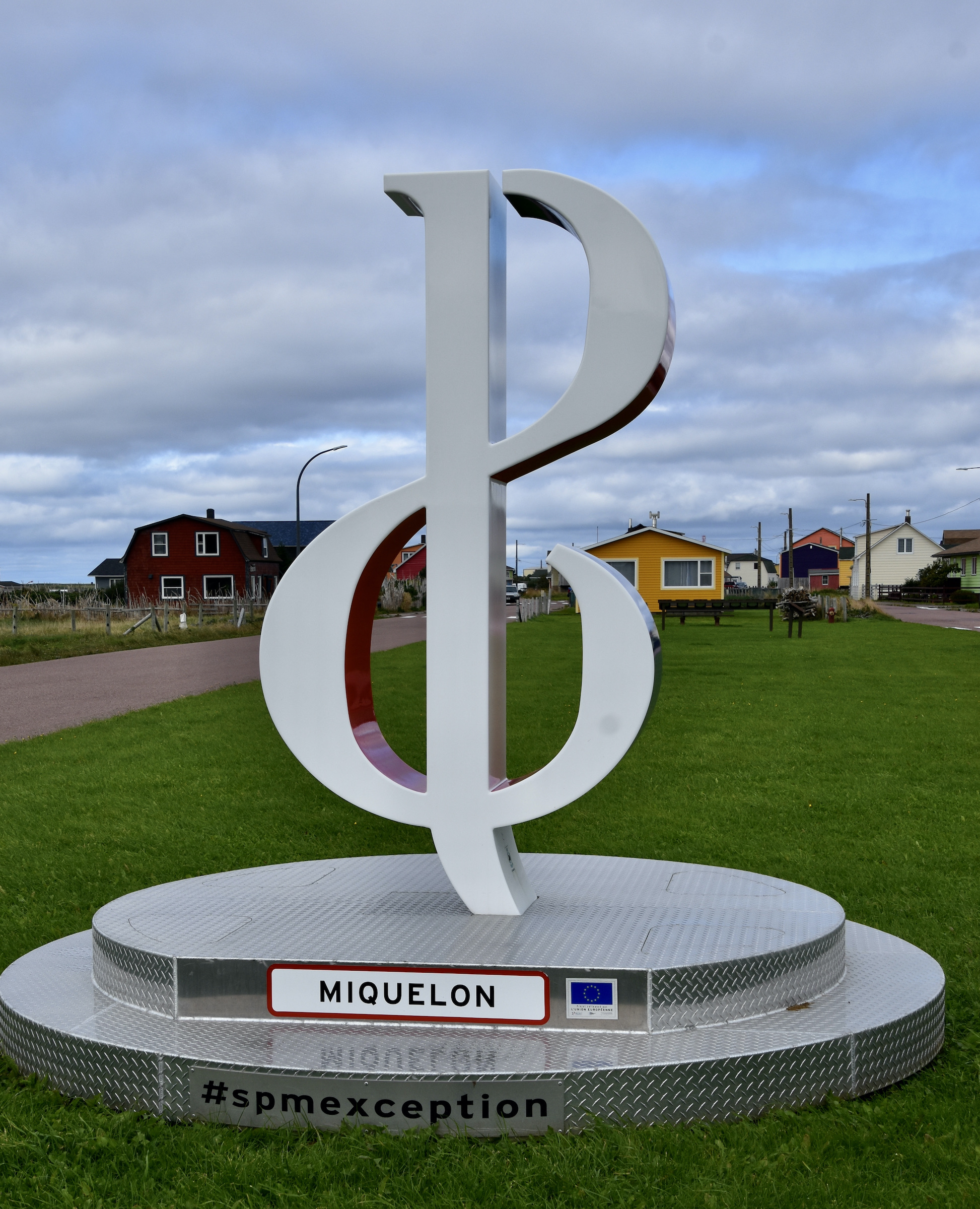
The first thing you will notice as you enter the village proper after passing the washed up hulk of Le Muscadin is that the houses of Miquelon are quite different from those in St. Pierre.
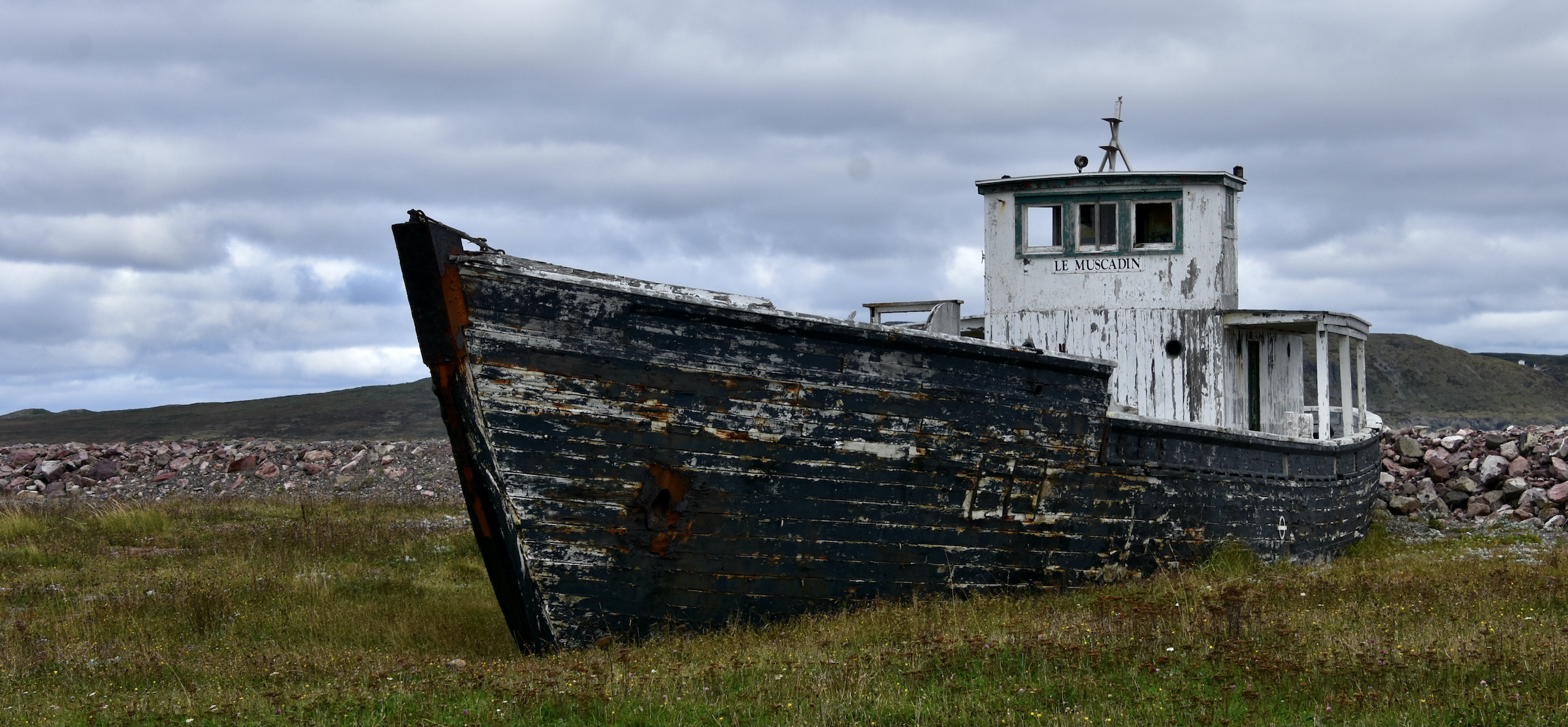
This is a small gallery of some of these distinct Miquelon houses. Originally they were built as one story structures with the distinct side porch as in the first three photos. As the families grew the roofs were raised and they became two story houses as in photos five to seven. Photo four is a hybrid of both styles.
- One Story
- One Story 2
- One Story 3
- One Story 4
- Two Story
- Two Story 2
- Two Story 3
For a place with less than 700 residents it has a huge church.
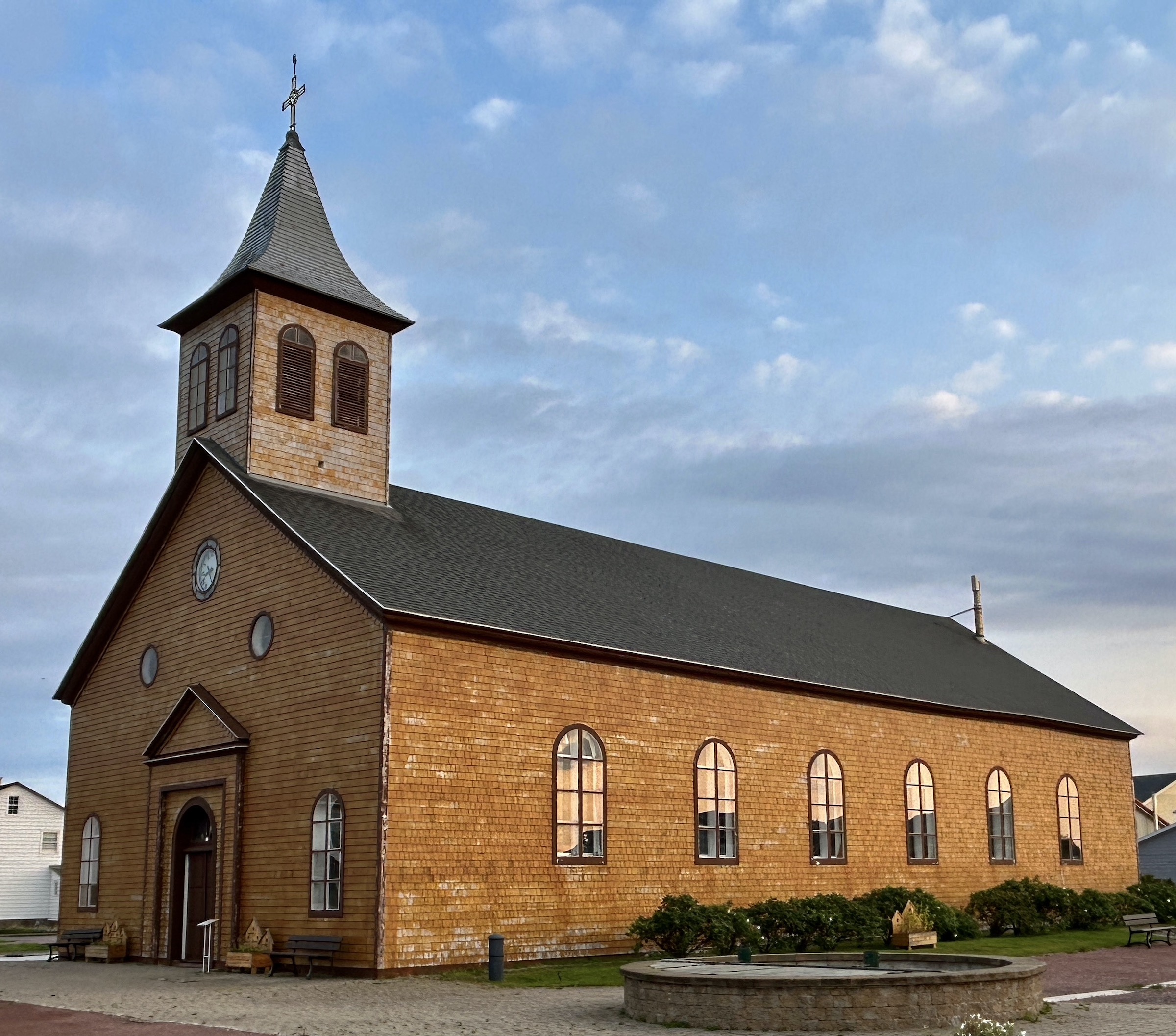
And like St. Pierre a fronton with the distinctive Basque lettering on top. I was surprised to see that it was erected only in 1986 which indicated to me that the sports being played here are still very much a part of life on St. Pierre & Miquelon
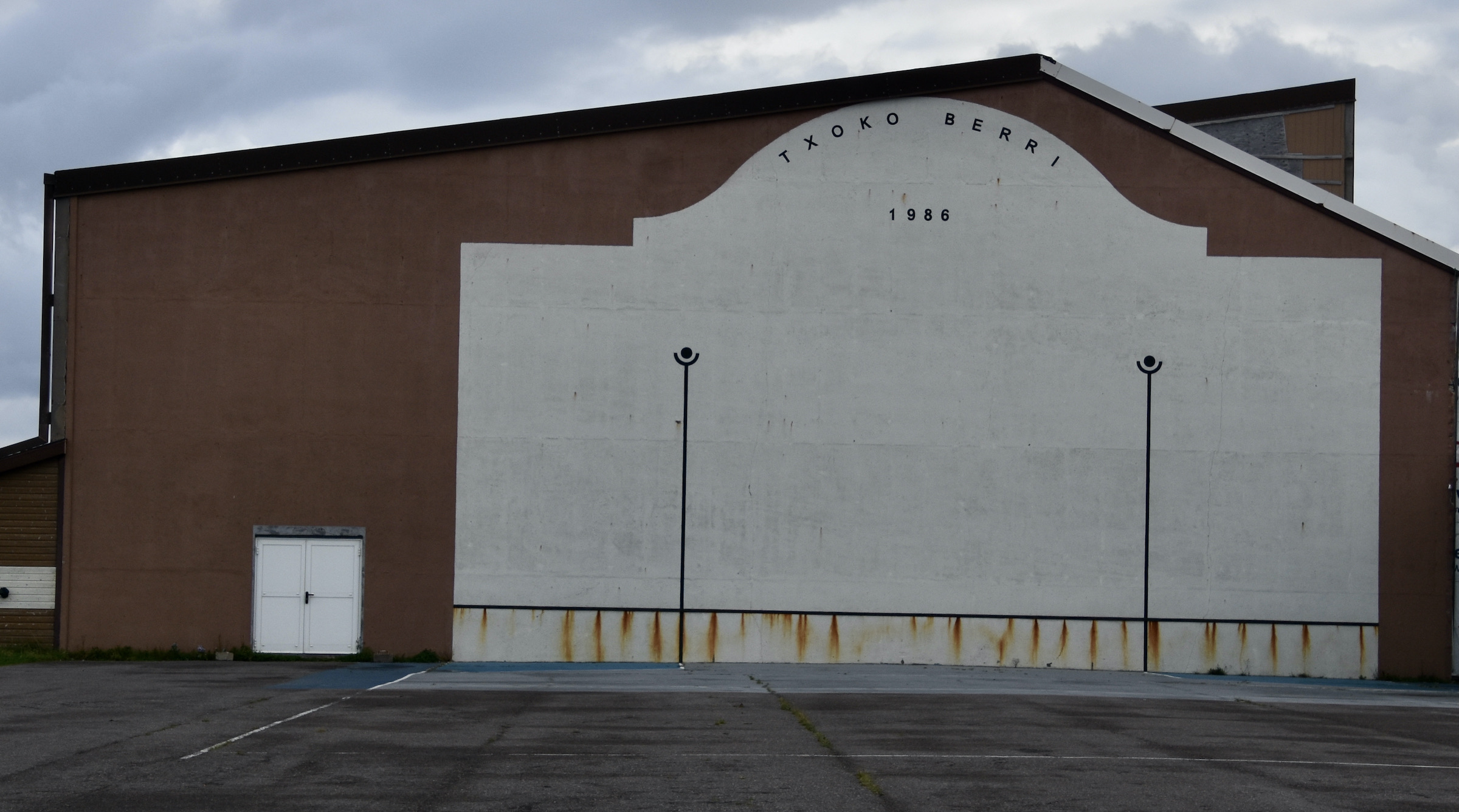
After wandering around the village for an hour or so it was time for lunch at L’Auberge de L’ile, the only restaurant in town that was open. I was pleasantly surprised to find that Miquelon has its own craft brewery, Brasserie Artisinale de L’Anse making a number of fine beers including this excellent Miqu’Ale.
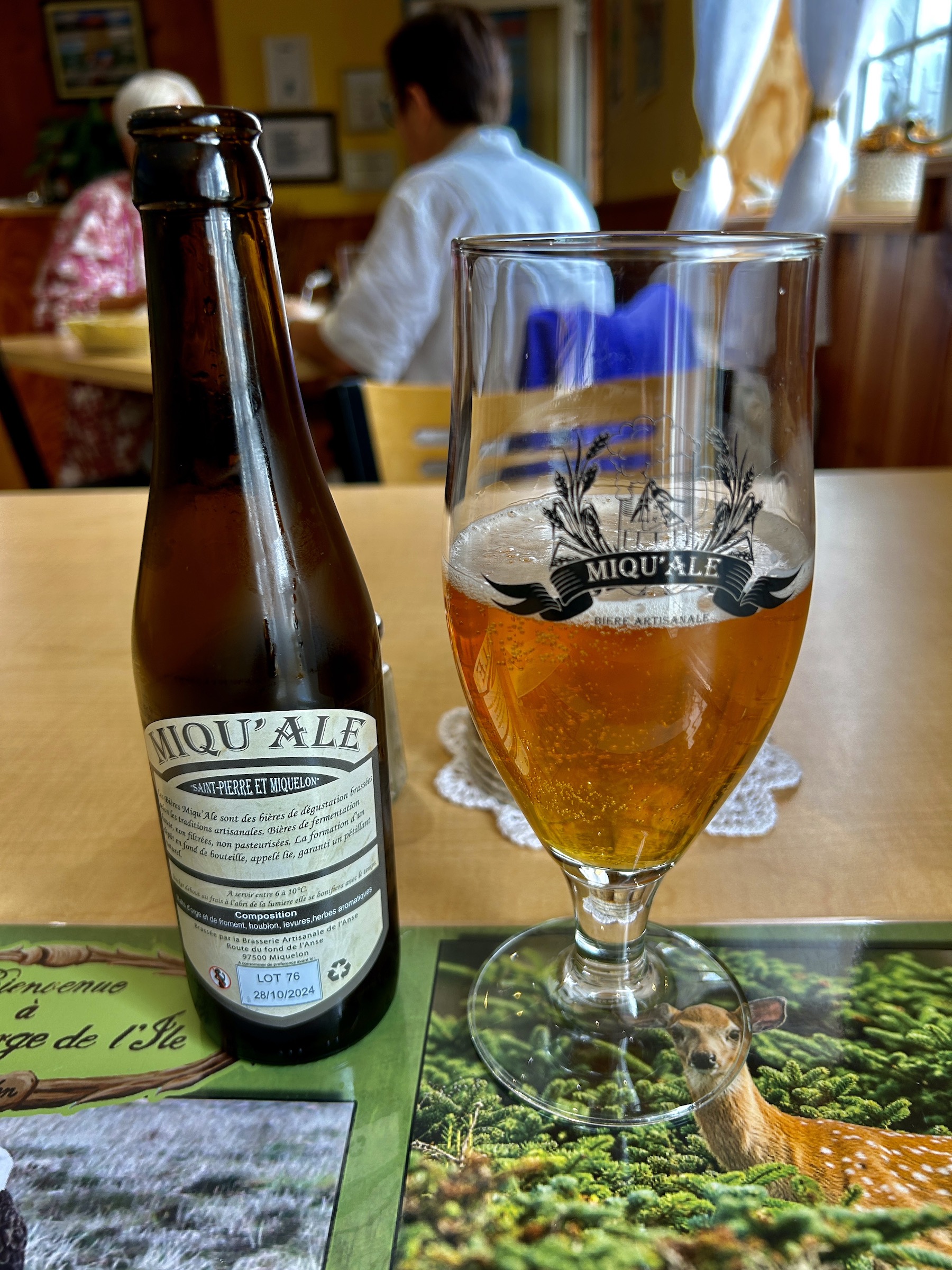
It went perfectly with the house offering of the day, pork stew.
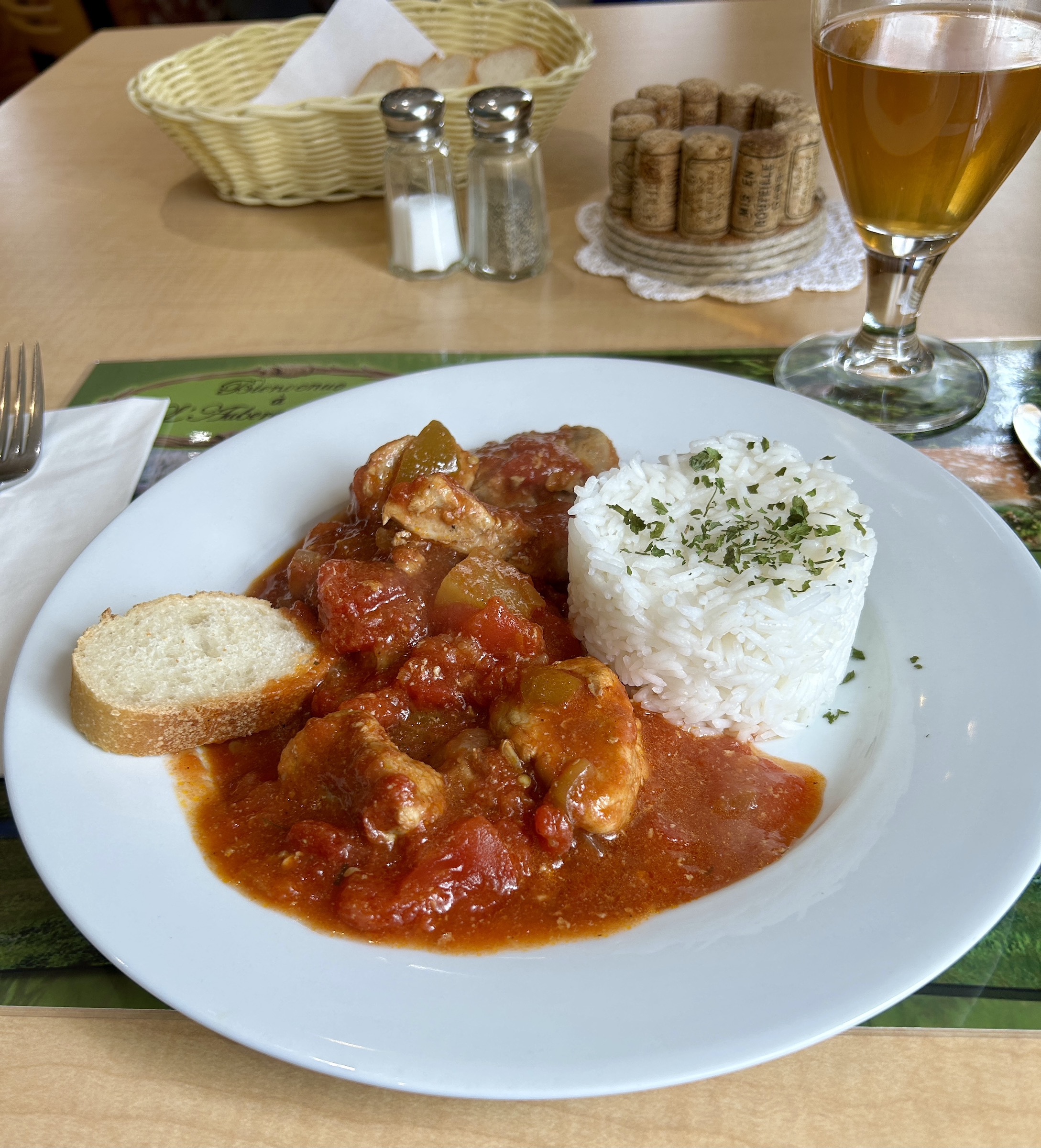
After lunch I made my way to very modern Nature Centre to meet my guide and begin the tour of Miquelon and Langlade.
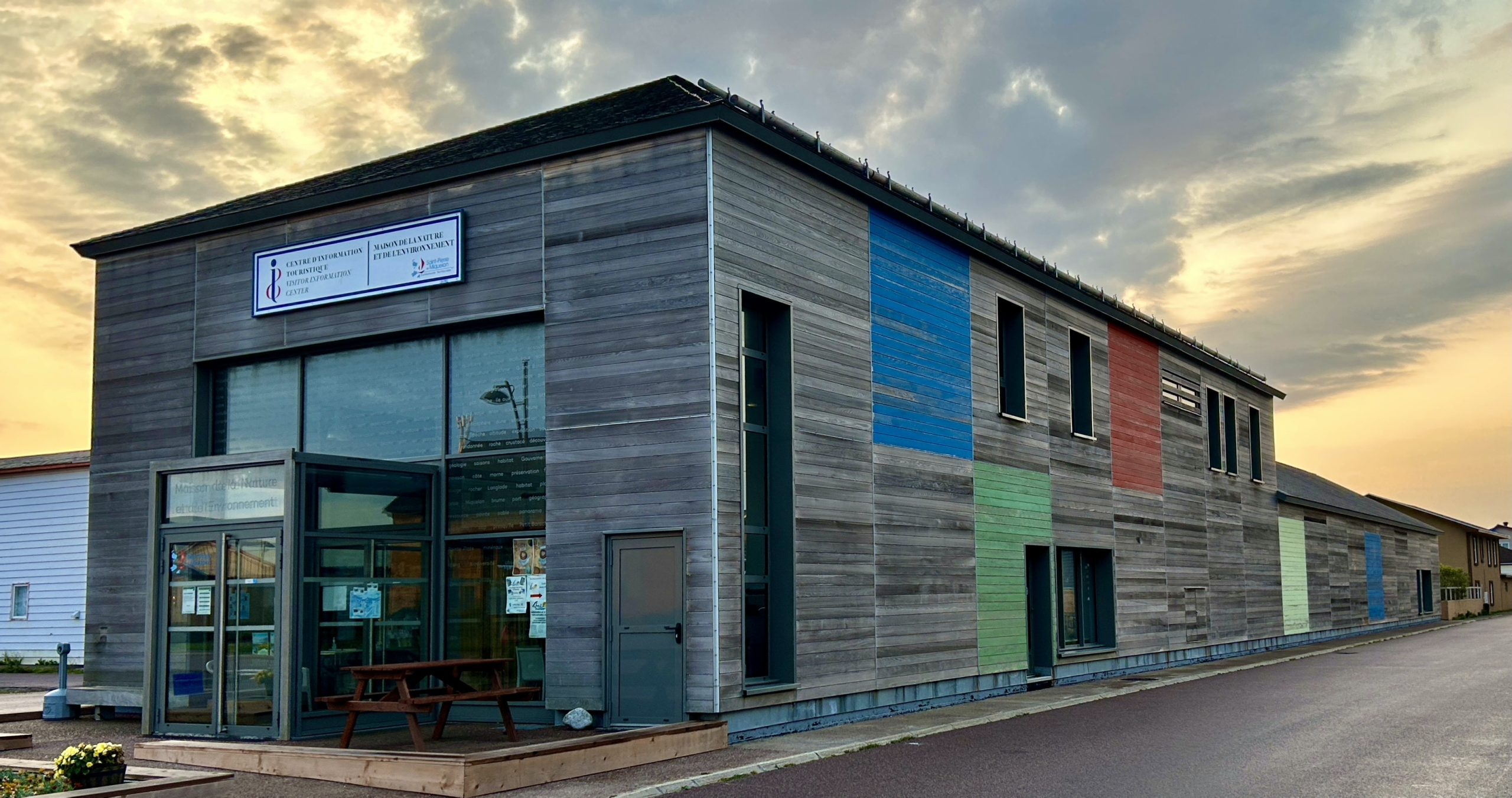
We began our tour by driving to this lookout on Le Cap du Miquelon which provides a grand view of the village below.
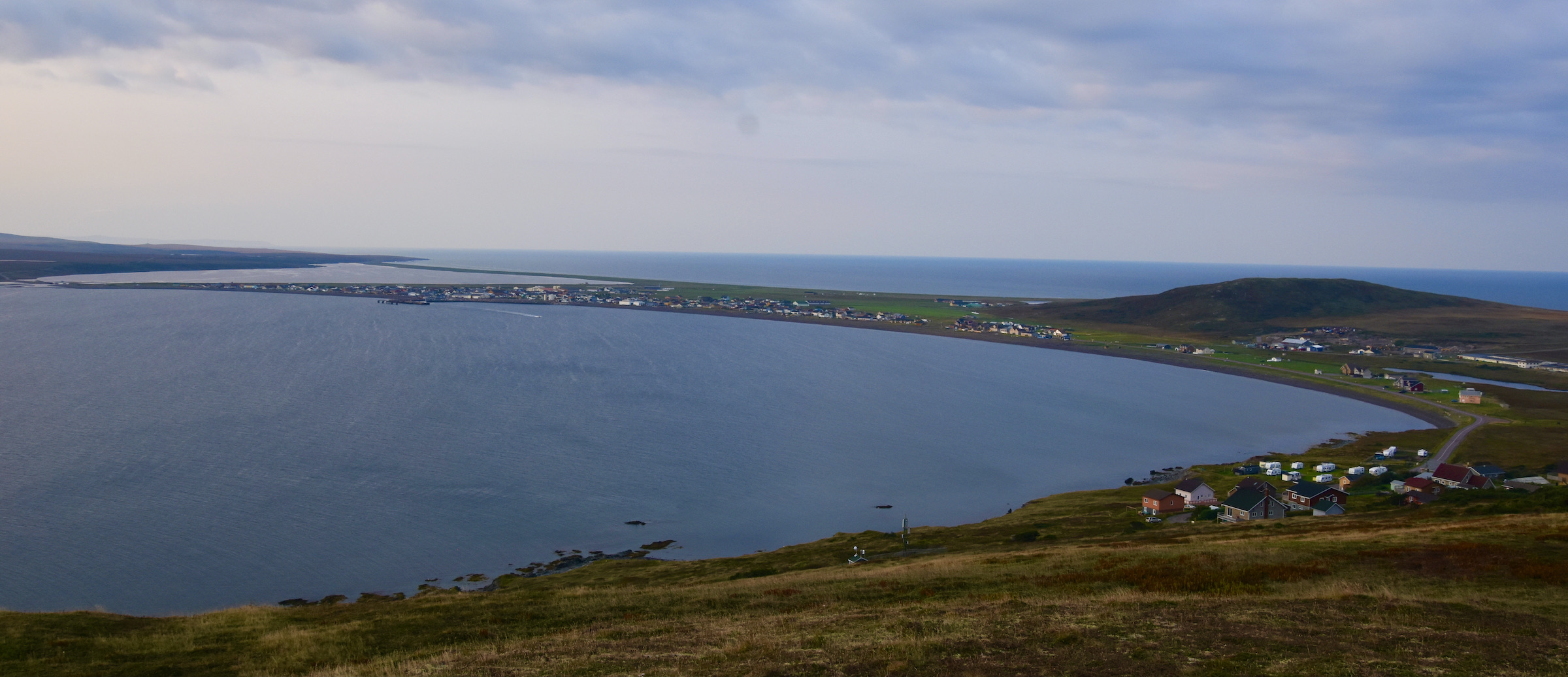
This is also the starting point for a number of hiking trails that criss cross the Cap du Miquelon. Hiking is a major reason to spend more time on Miquelon and Langlade and with scenery like this I could see why.
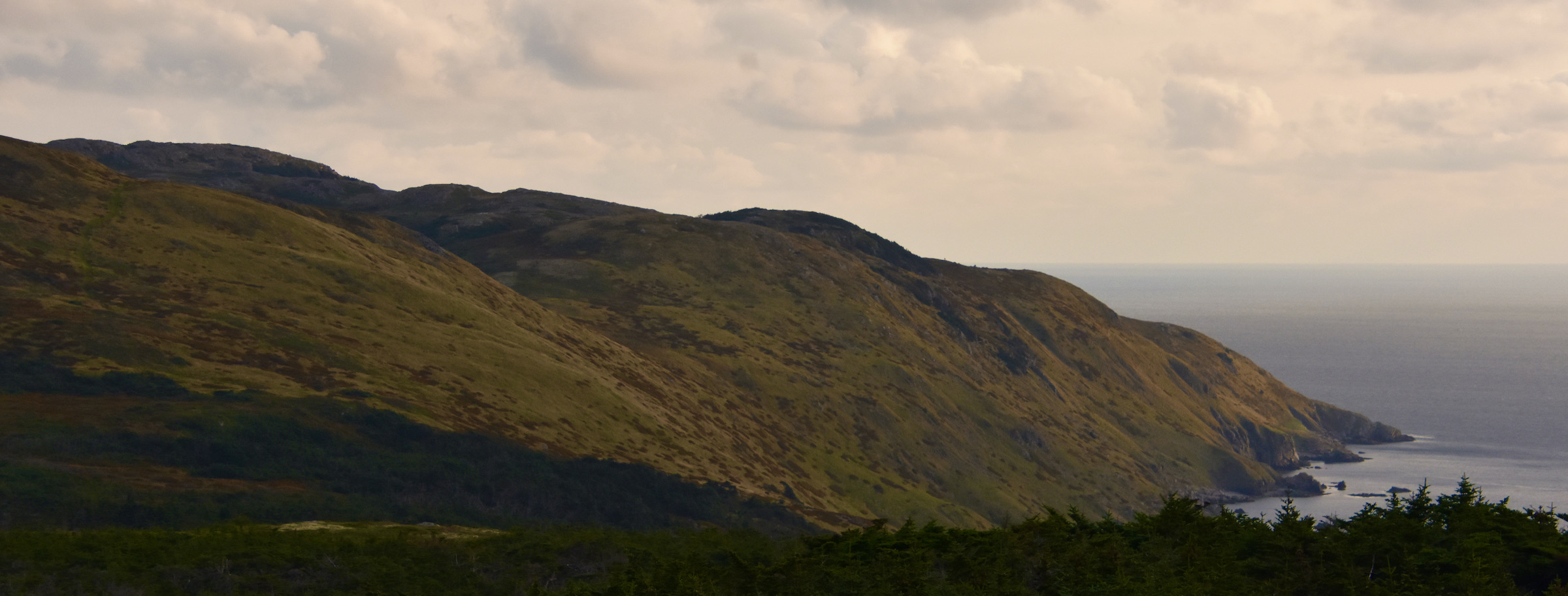
Another feature of Miquelon that I did not see in St. Pierre was the number of horses grazing throughout much of the island.
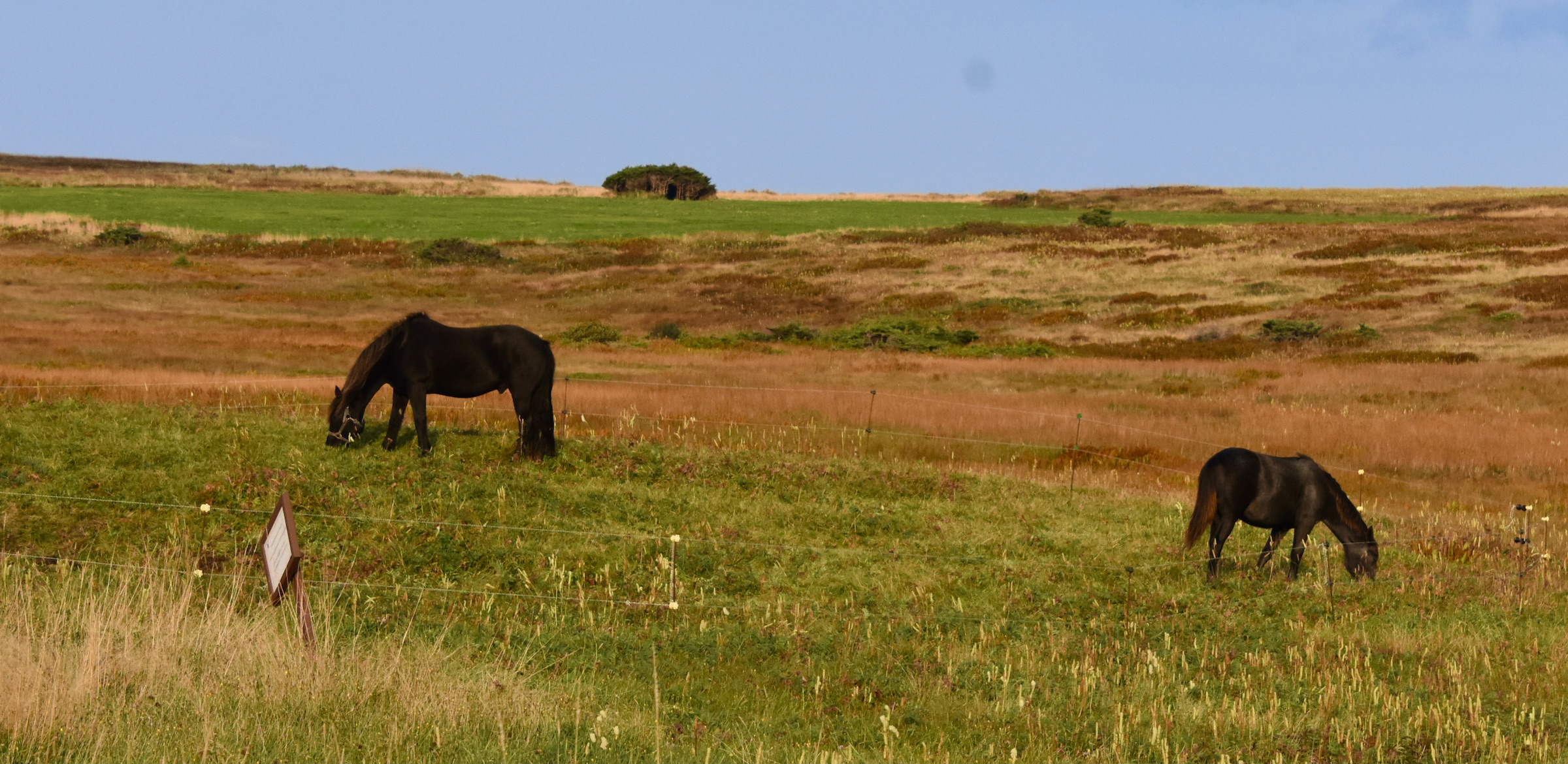
Miquelon is also where almost all of the agricultural produce on the archipelago is grown or raised. We stopped into one of the vegetable growers, Floridecor and I was surprised to see the abundance of fresh produce, much of which goes to local restaurants.
- Carrots
- Lettuce, Squash & Cucumbers
- Leeks, Celery & Carrots
- Tomatoes
The village of Miquelon is actually on a small piece of land connected to the main island, Grand Miquelon, by only this tiny strip of land, the Grand Etang.
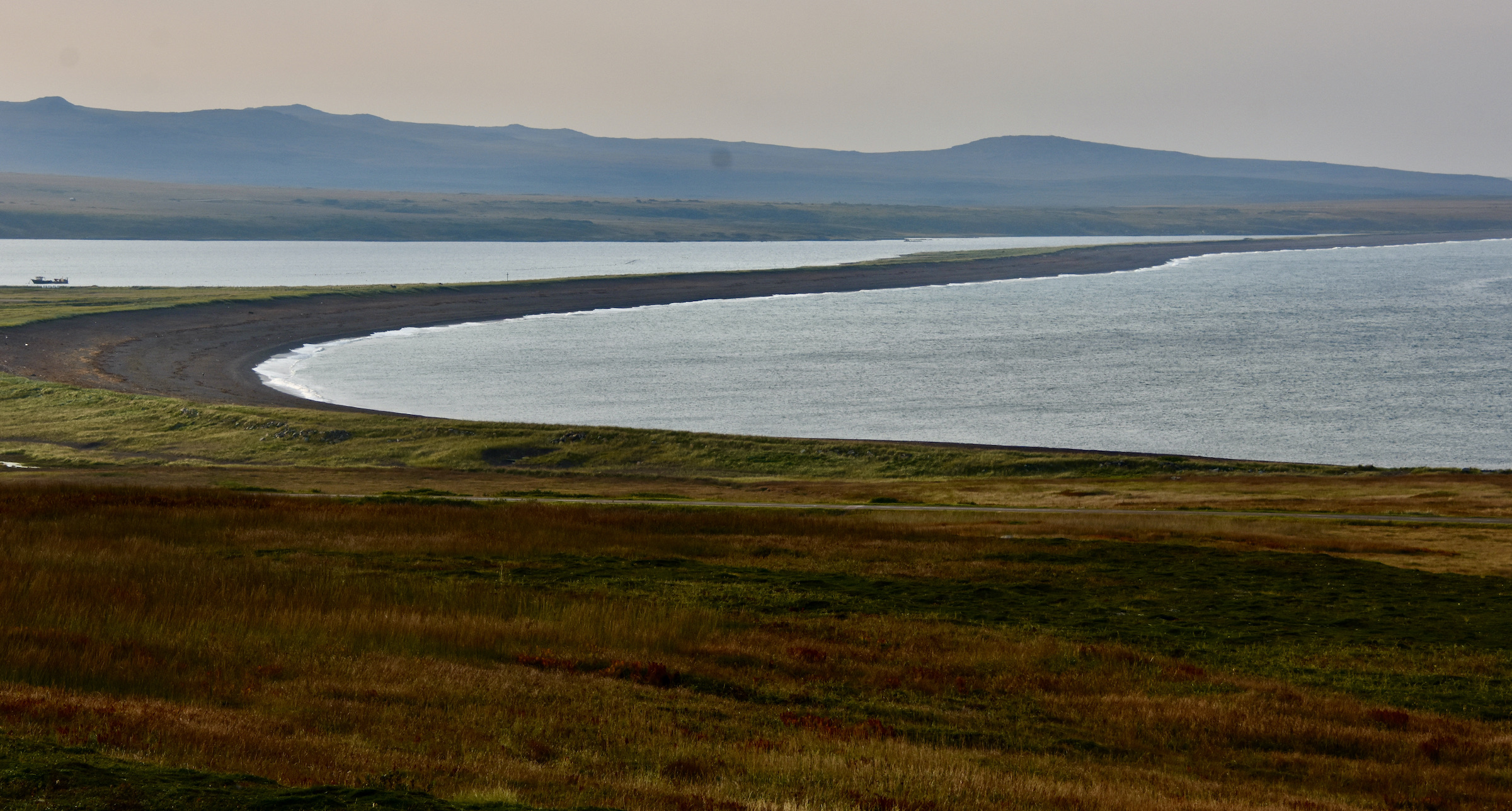
Between the village of Miquelon and the Grand Etang is Cap Blanc with a fine lighthouse that was built by the British after the HMS Niobe was wrecked here in 1874. While Sable Island is known as the’Graveyard of the Atlantic’, St. Pierre & Miquelon are not far behind with over 600 documented shipwrecks.
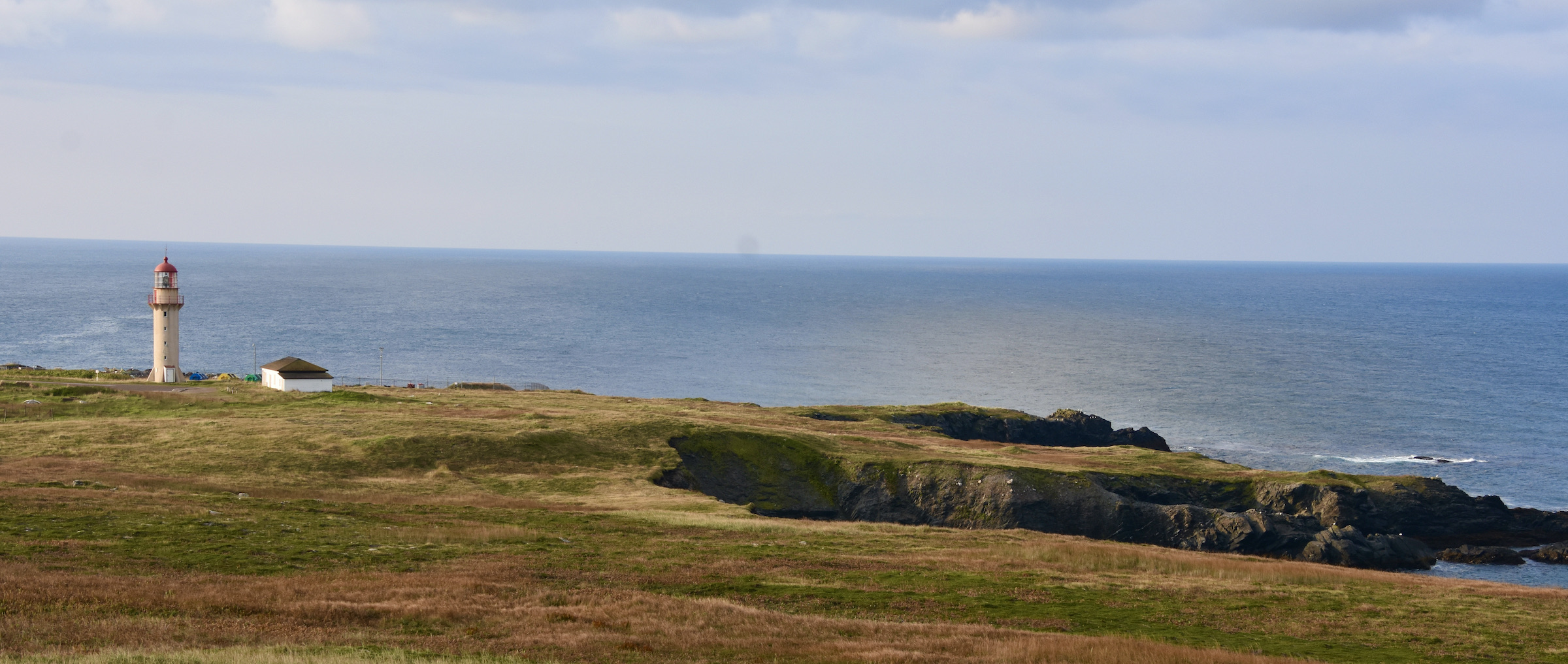
We now crossed the Grand Etang and began making our way across Miquelon towards Langlade. You definitely won’t find photogenic kilometre markers like these on the mainland.
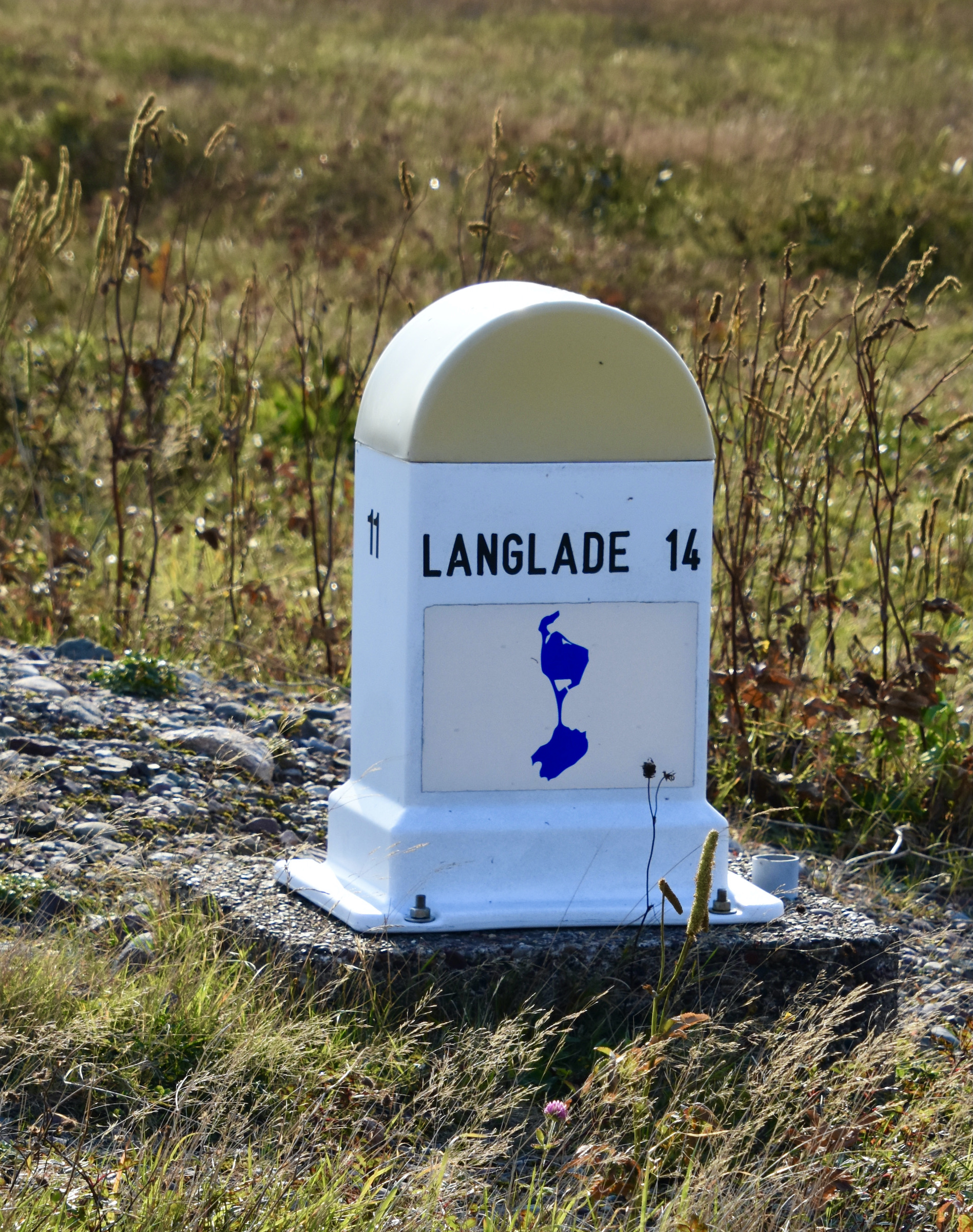
Langlade was a separate island until the 18th century when the dune system that stretches between it and Miquelon completely filled in creating a 14 km. (8 mile) isthmus that is truly a natural marvel with one of the largest dune systems in eastern North America.
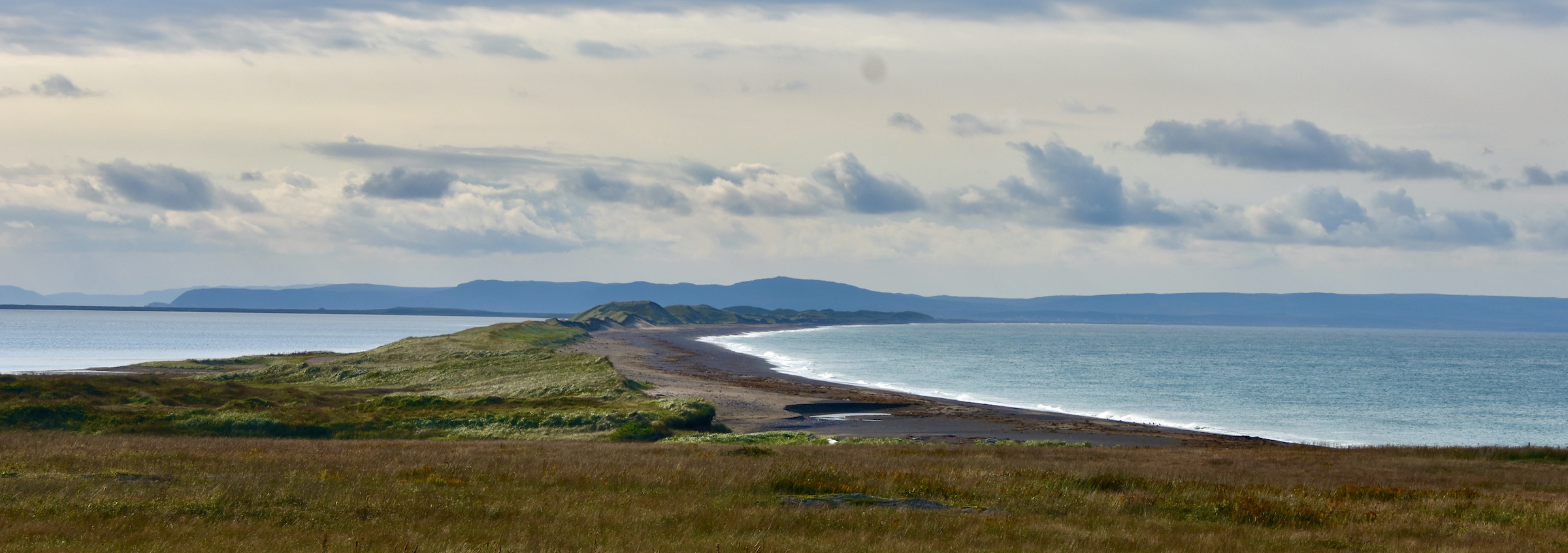
While Mother Nature created the isthmus, she also makes occasional attempts to rip it apart during winter storms and there have been times when the highway connecting the two islands has been washed out for months. The photo below shows the narrowest part of the isthmus where the French government is in a constant battle to prevent the sea from breaking through.
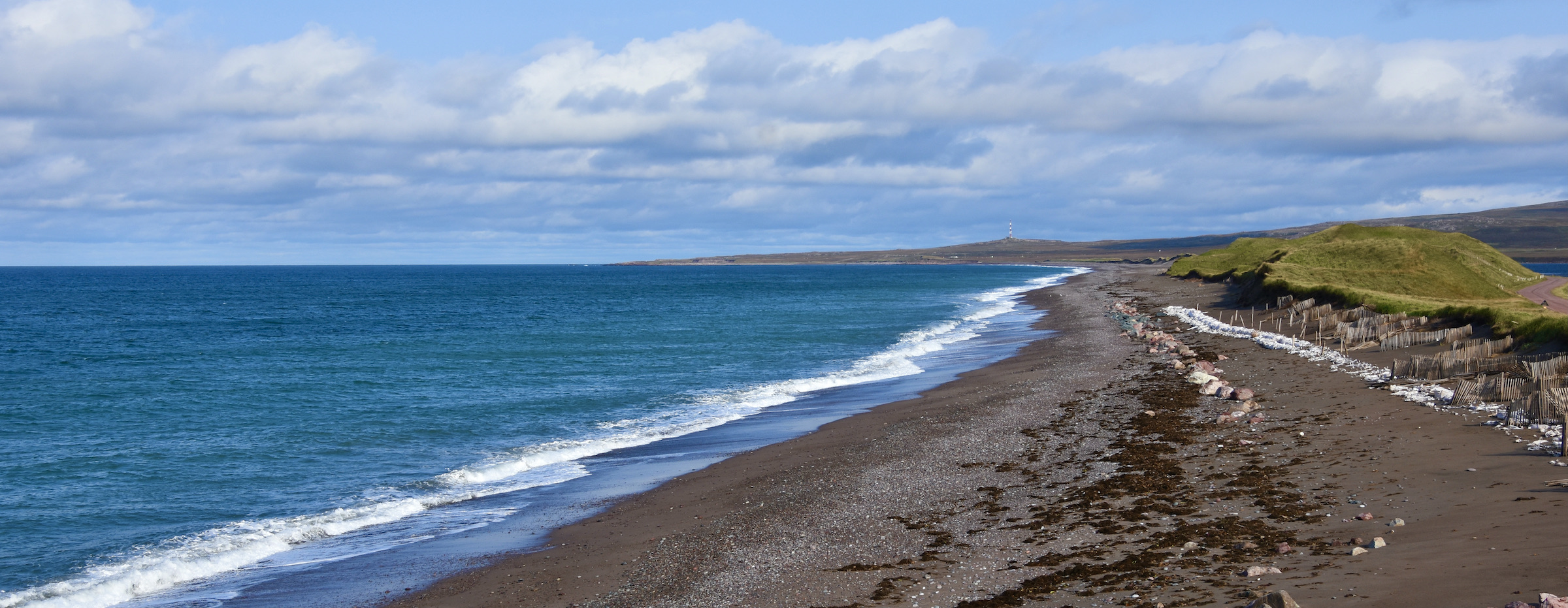
Some of the best views to be had on St. Pierre & Miquelon are from the high dunes on the Langlade side of the isthmus. The body of water on the right is the Grand Barachois, a shallow lagoon that is teeming with birdlife and a popular spot for seal watching.
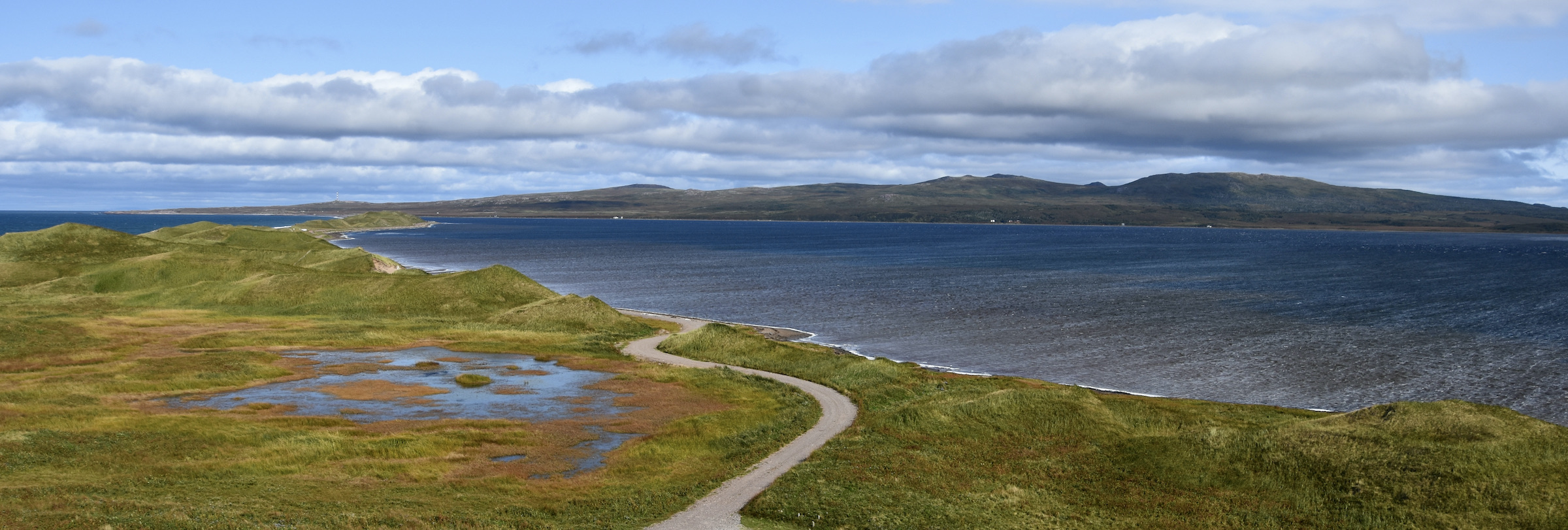
At the end of the isthmus the road crosses a broad beach and you come to the village of Langlade which is truly unique. From a distance this looks little different than any other settlement you might come across in Atlantic Canada. The houses are quite modern and prosperous looking, but here’s the rub. There is no electricity or any other type of civic service whatsoever. The people who live here have to be totally self-sufficient. For that reason this place is only occupied for about half the year. In winter everybody returns to their homes in St. Pierre. Let’s take a closer look.
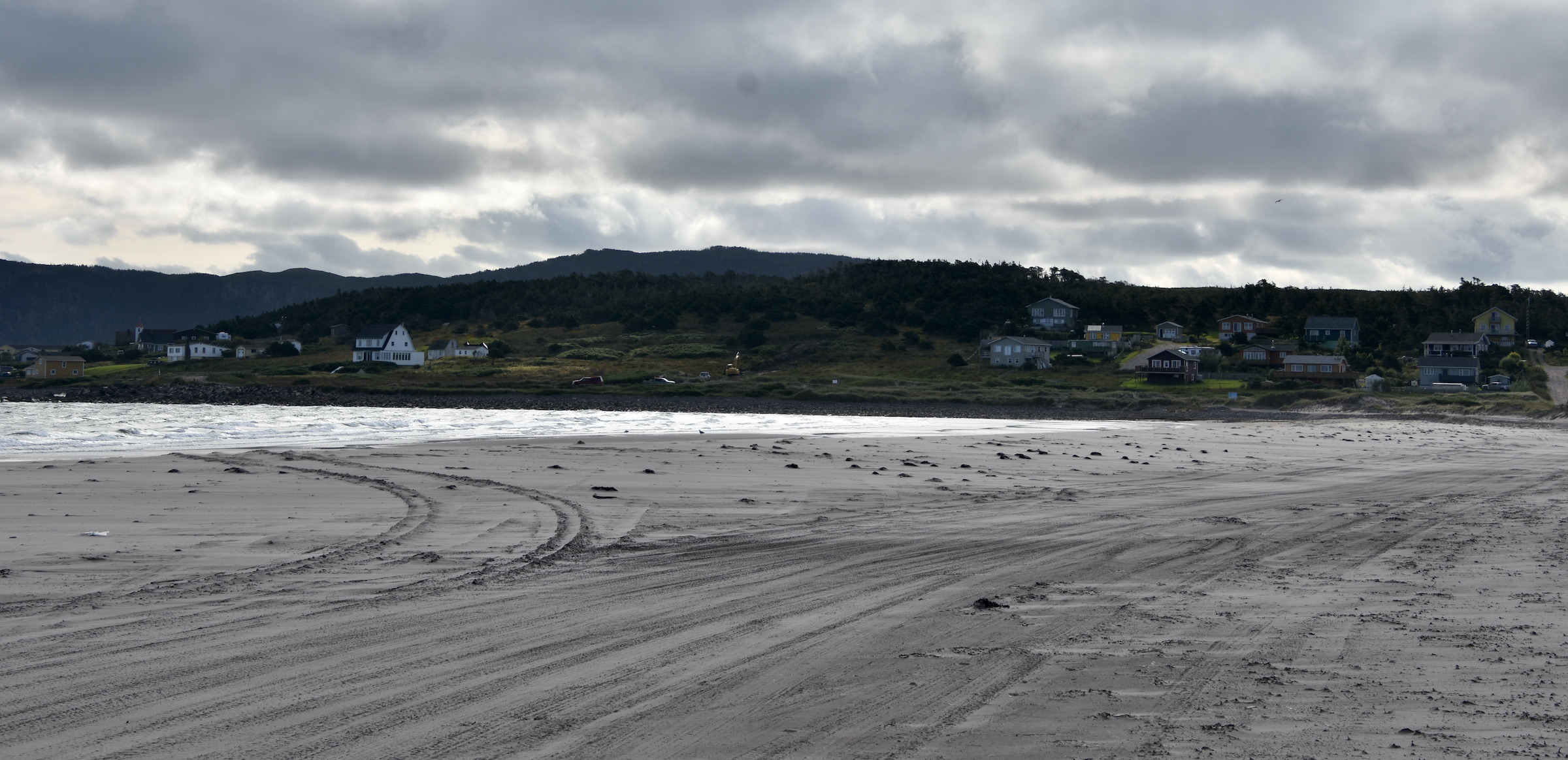
This is the most prominent home in Langlade and it was built by someone we have already met, Henri Morazê the St. Pierre bootlegger.
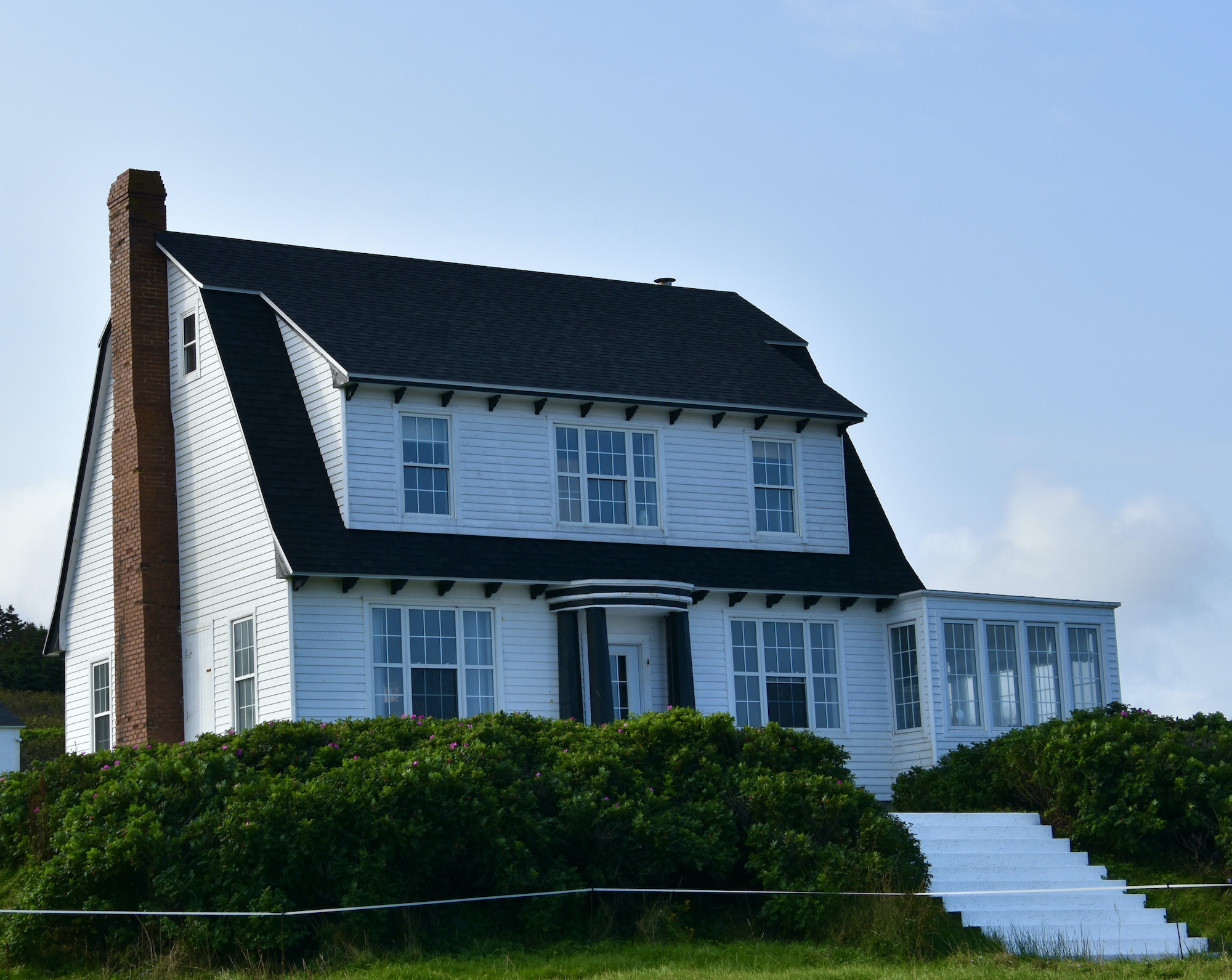
One of the reasons people go to such lengths to live on Langlade in the summer is that it is an outdoor paradise with fishing and hunting opportunities abounding. For hikers there are numerous trails leading to the edges of the steep cliffs that make up the southern coast of the island. This is the Belle River and the beginning of a 6.6 km. (4.1 mile) hike to Cap Corbeau.
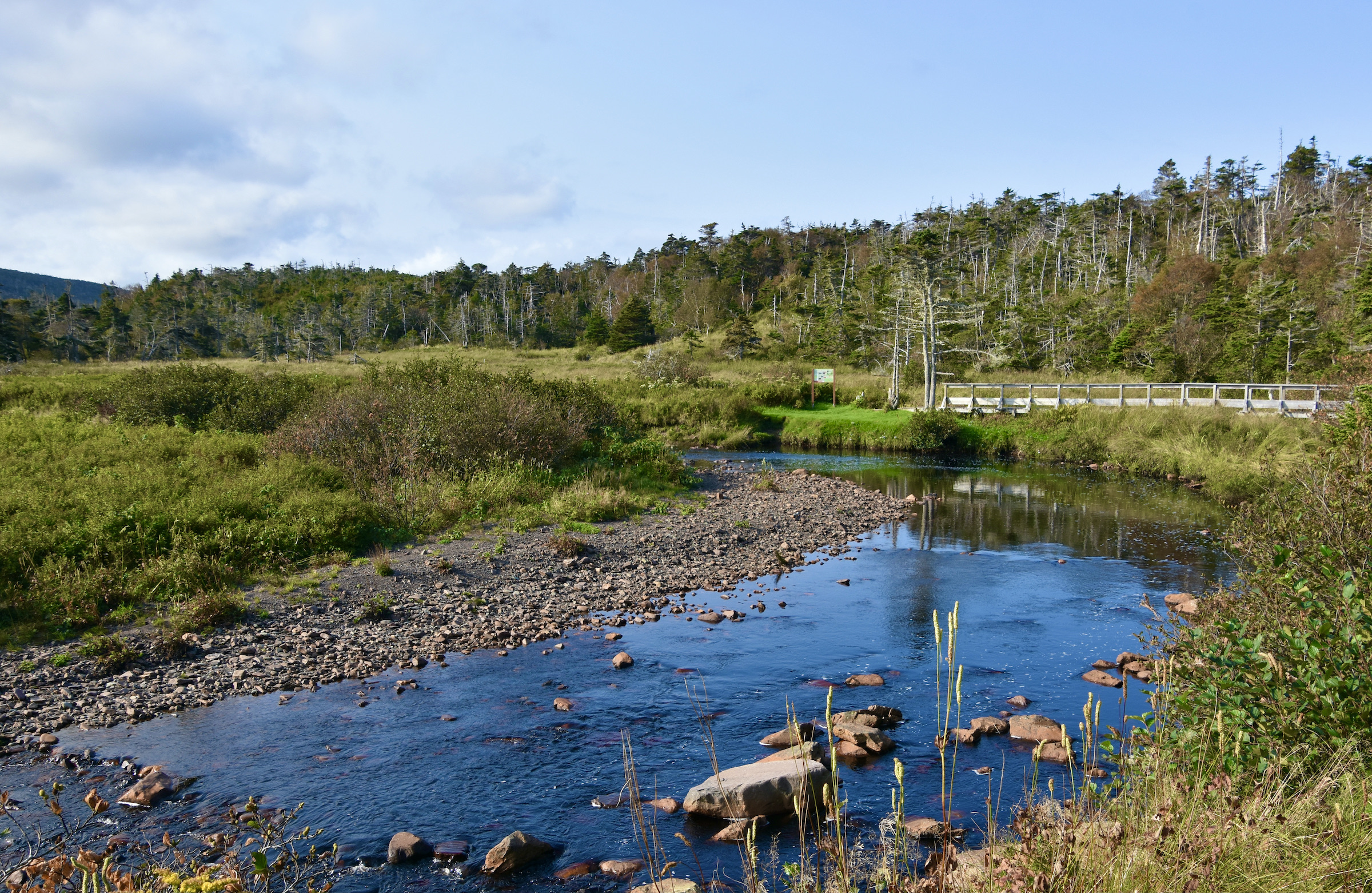
All good things must come to an end and it is time to head back to MIquelon and take the flight back to St. Pierre. But first there’s time for one last look at the isthmus from the Langlade side.
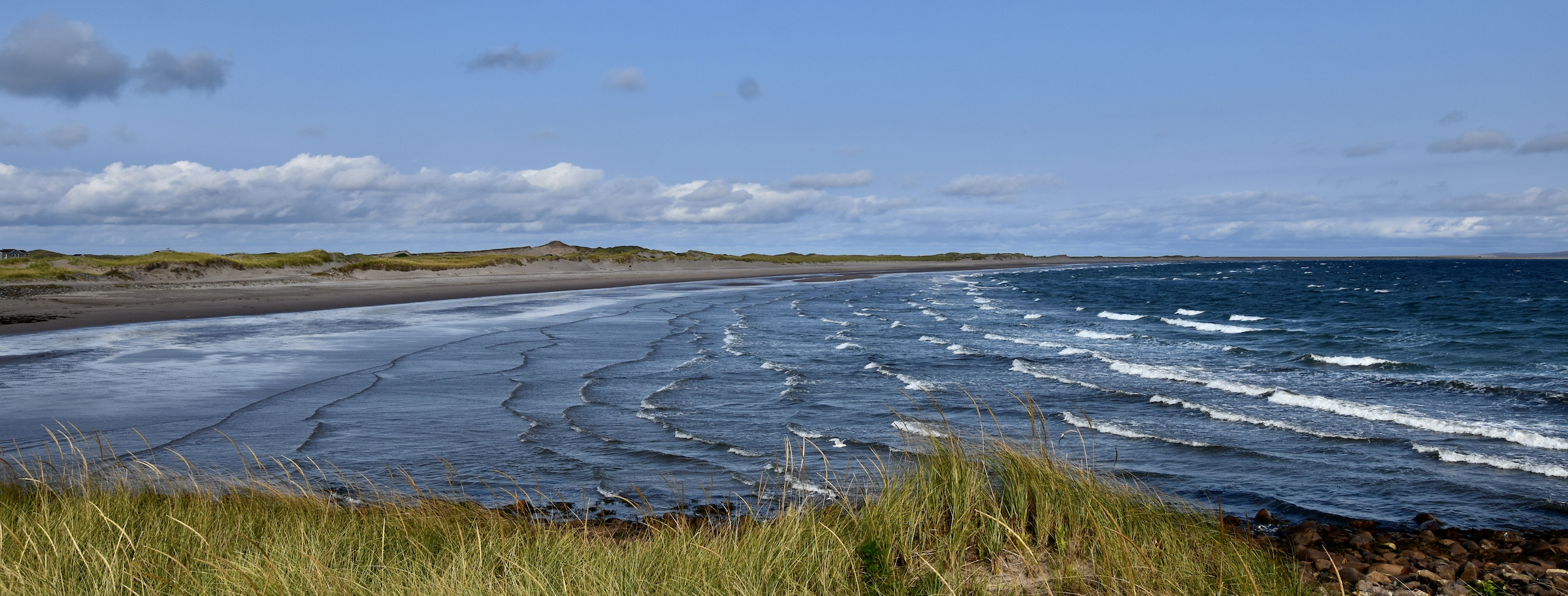
And from one of the highest points on this magnificent dune system.
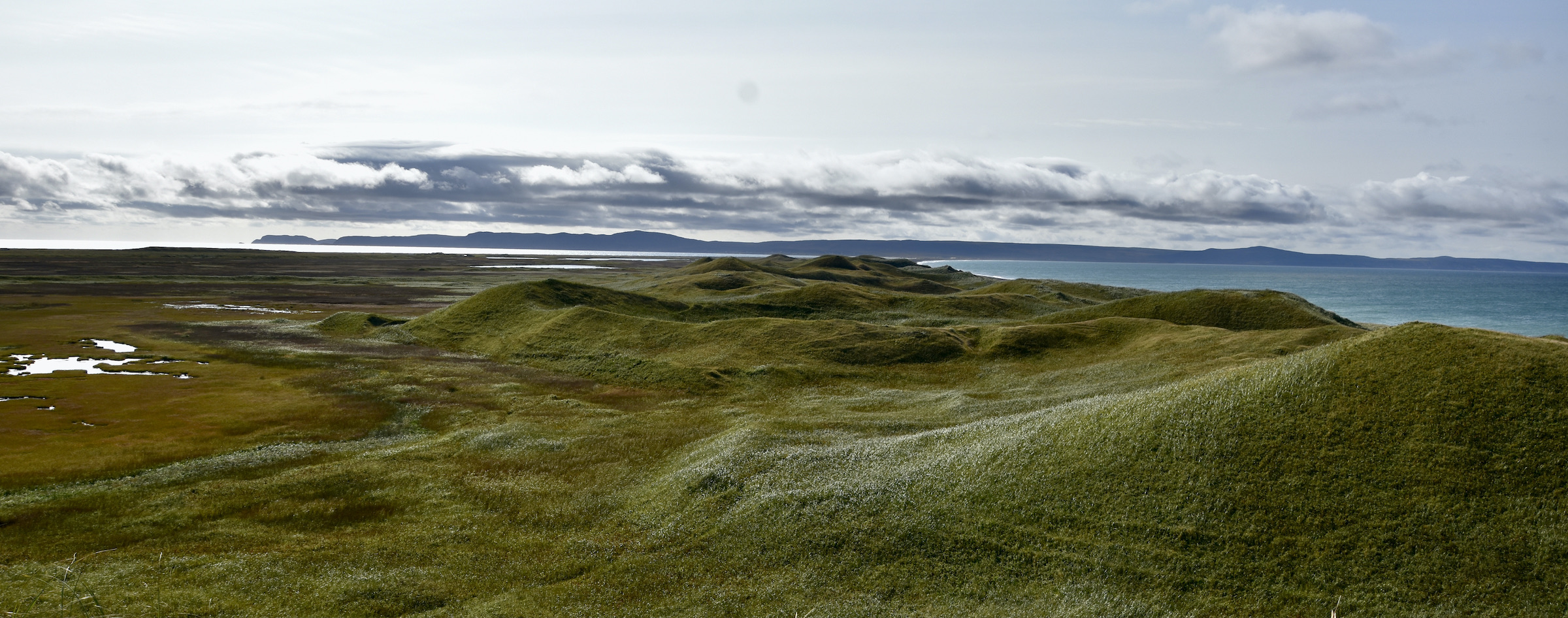
I would be remiss not to include at least one photo in this post with my presence and there is no better spot than right here.
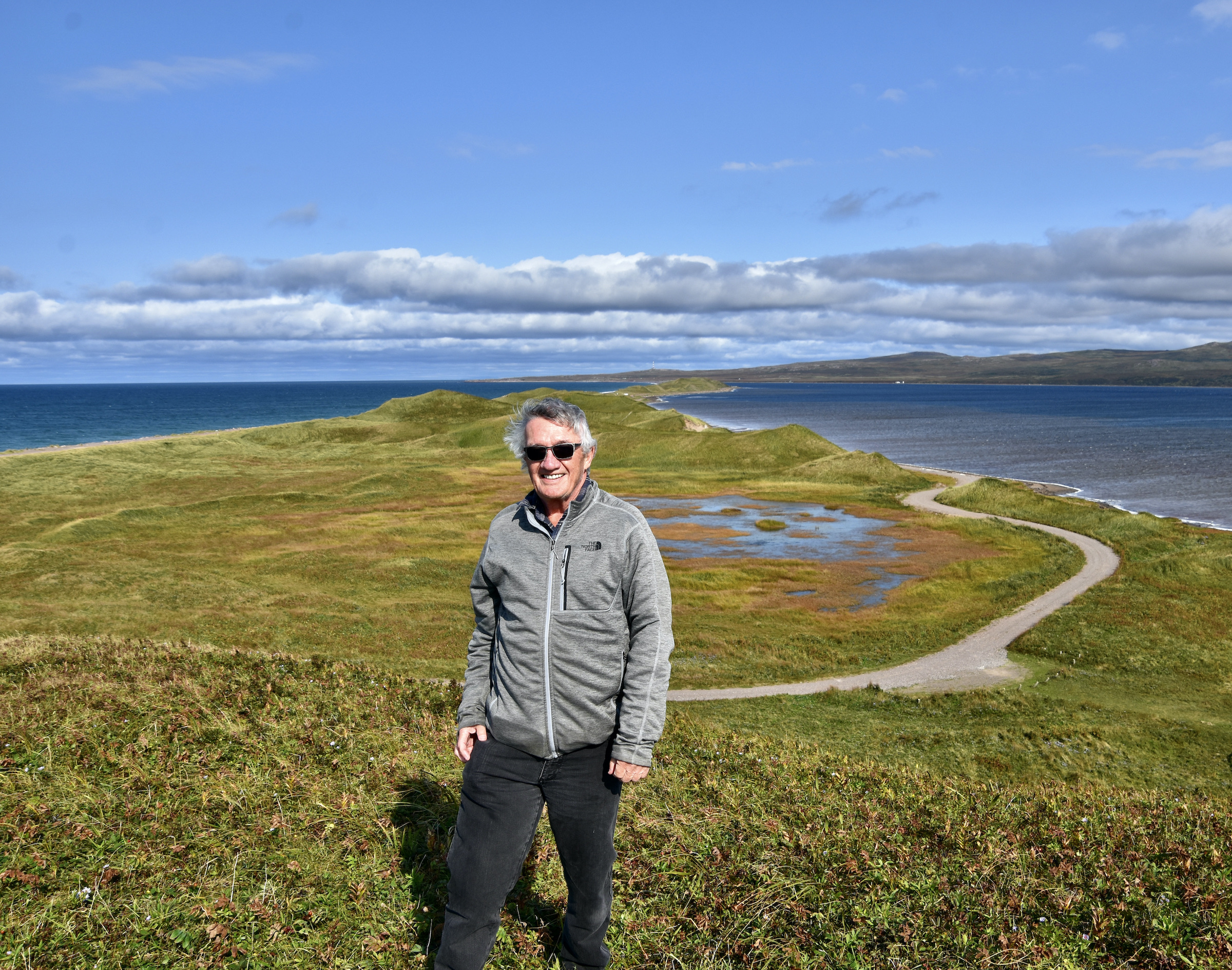
Lastly, I must make mention of the food in St. Pierre & Miquelon. In a word, it’s outstanding. I can recommend the following restaurants in St. Pierre – Les P’tits Graviers, Le Feu de Braise and Le Buddy
Here is a small gallery of some the things I sampled during my stay.
- Halibut, Le Buddy
- Warm Goat Cheese Salad, Le Buddy
- Foie Gras Terrine, Les P’tits Graviers
- Shrimp Cocktail, Les P’tits Graviers
- Foie Gras Pate, Le Feu de Braise
- Veal Cutlet, Le Feu de Braise
There were a number of things I was not able to do on St. Pierre & Miquelon because I was there too late in the season, most notably taking advantage of some of the boat tours being offered to the nearby sea bird colonies. If I ever needed a reason to return this would be at the top of the list, but in reality this place is so special and so different from anything else you can experience in Atlantic Canada that you don’t need a specific reason to go. I’ll be back.
My trip to St. Pierre & Miquelon was featured in the 2024 Saltscapes Food + Travel Guide.


